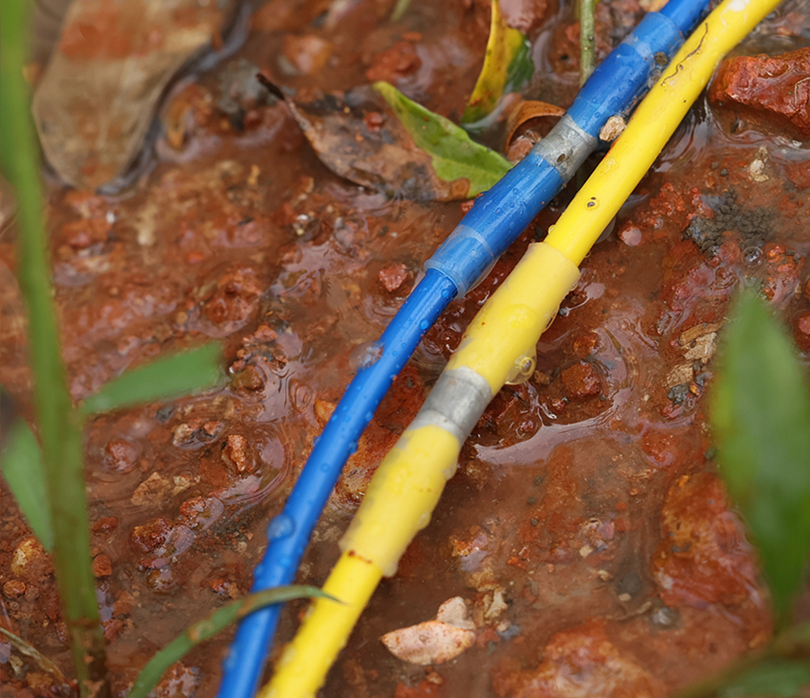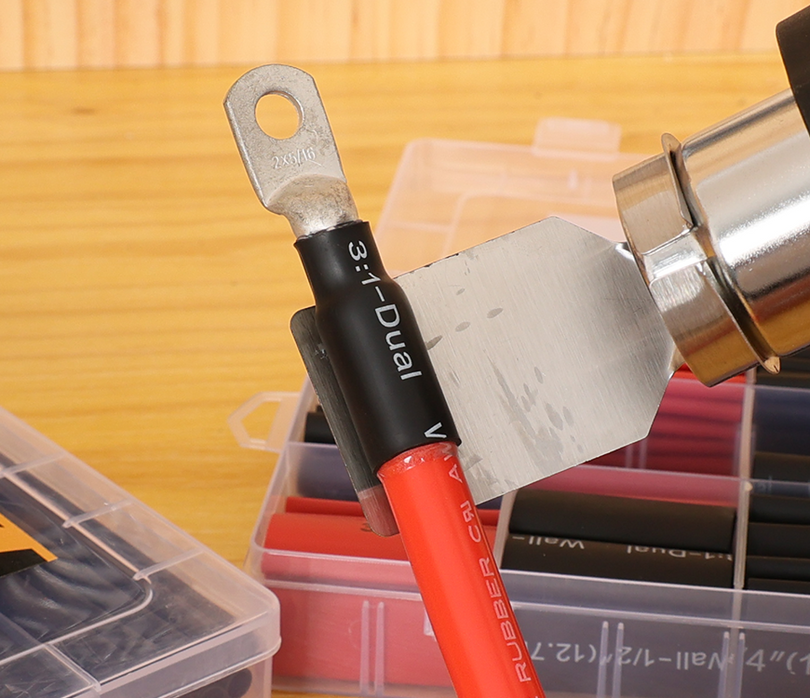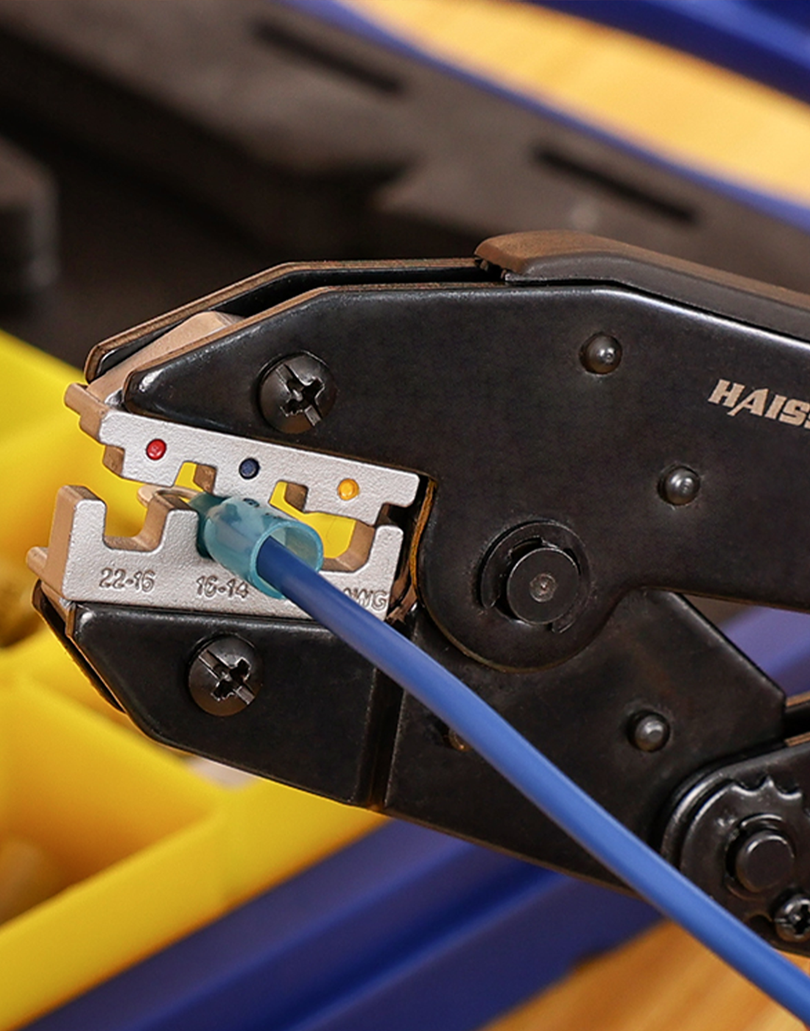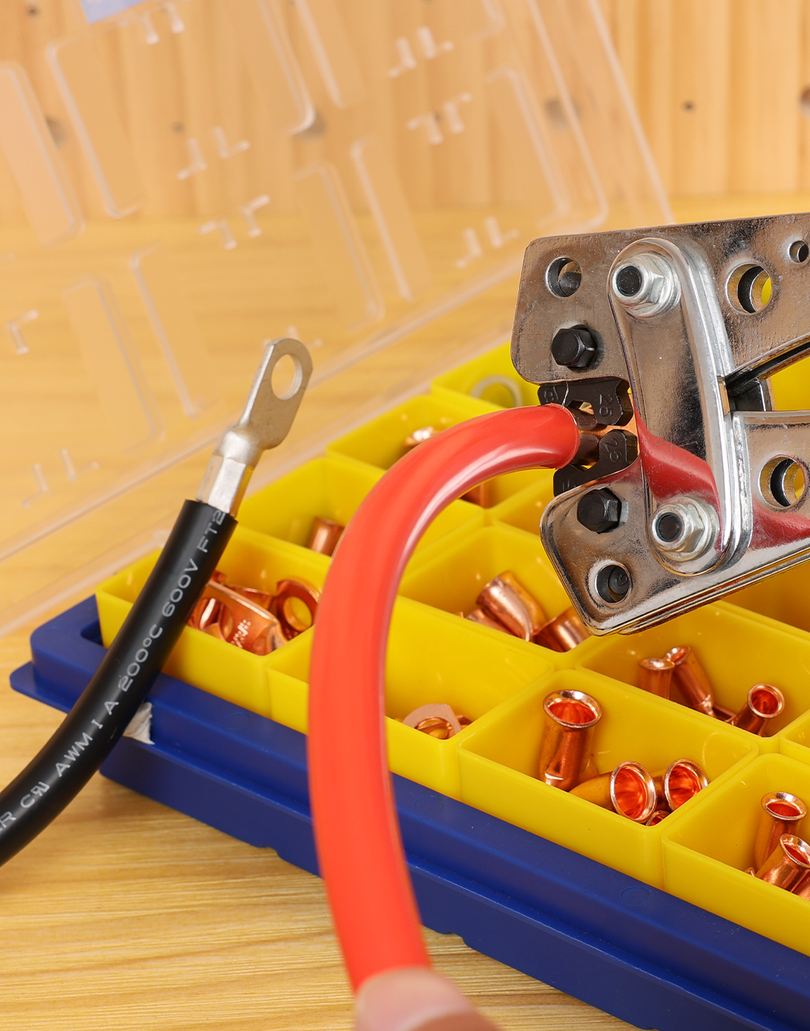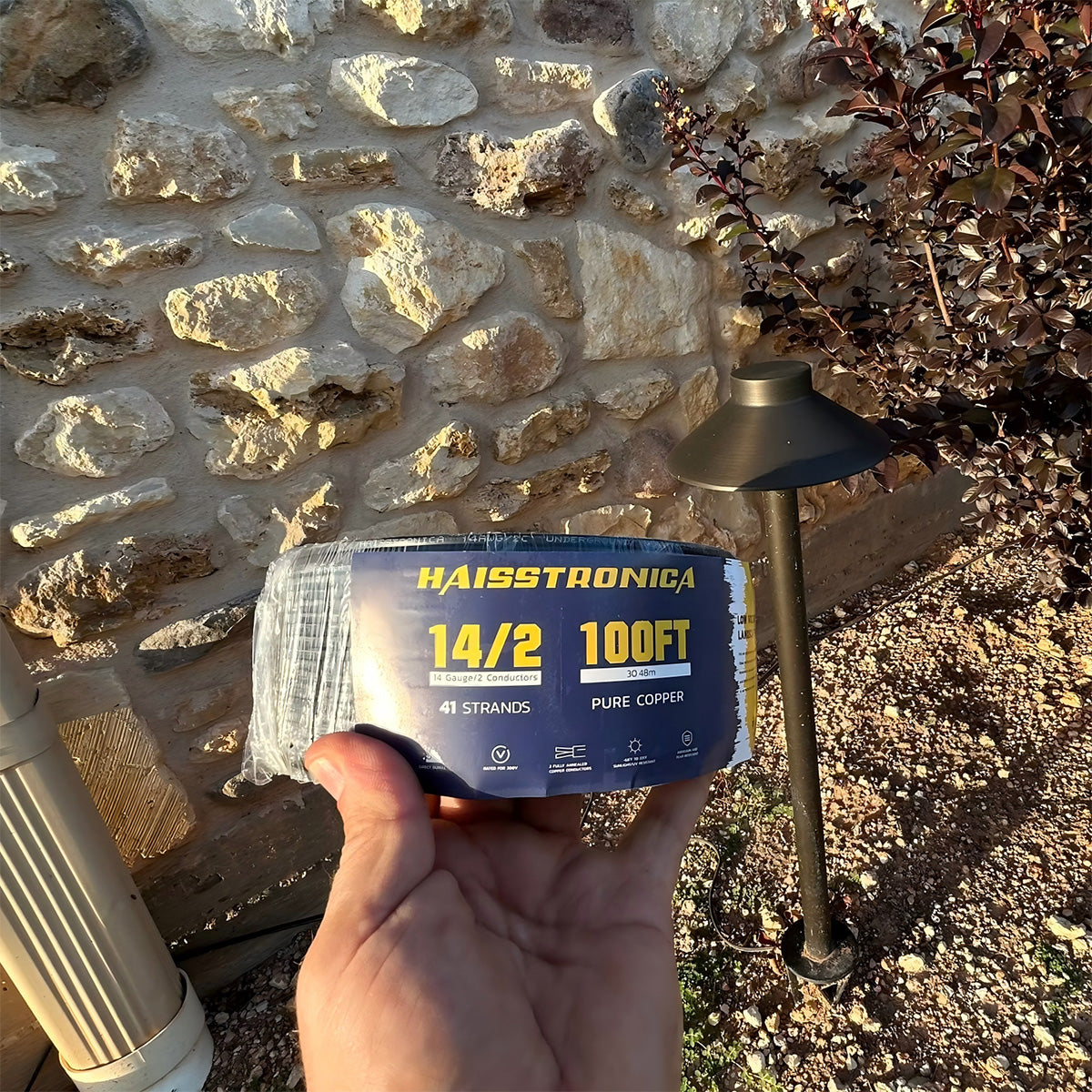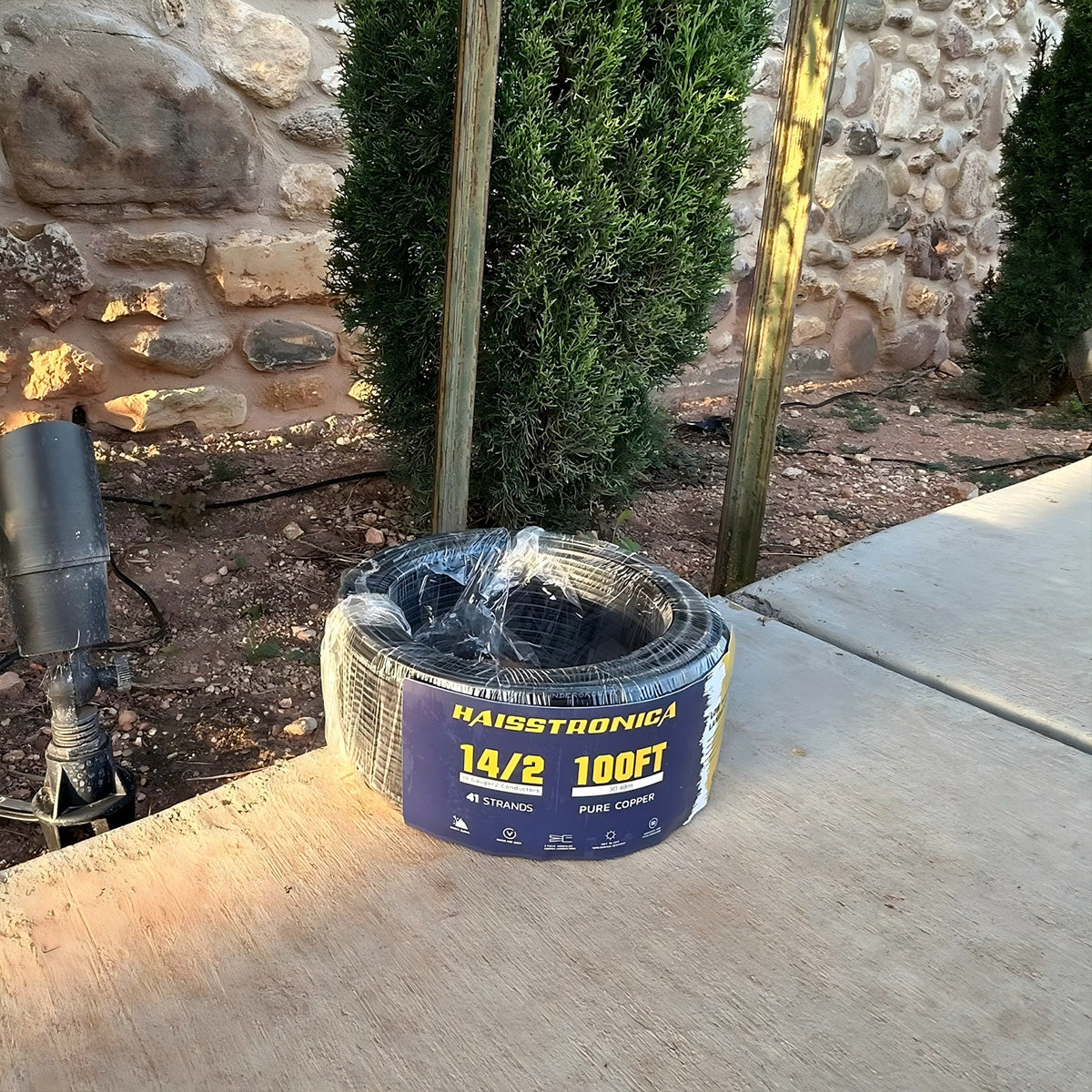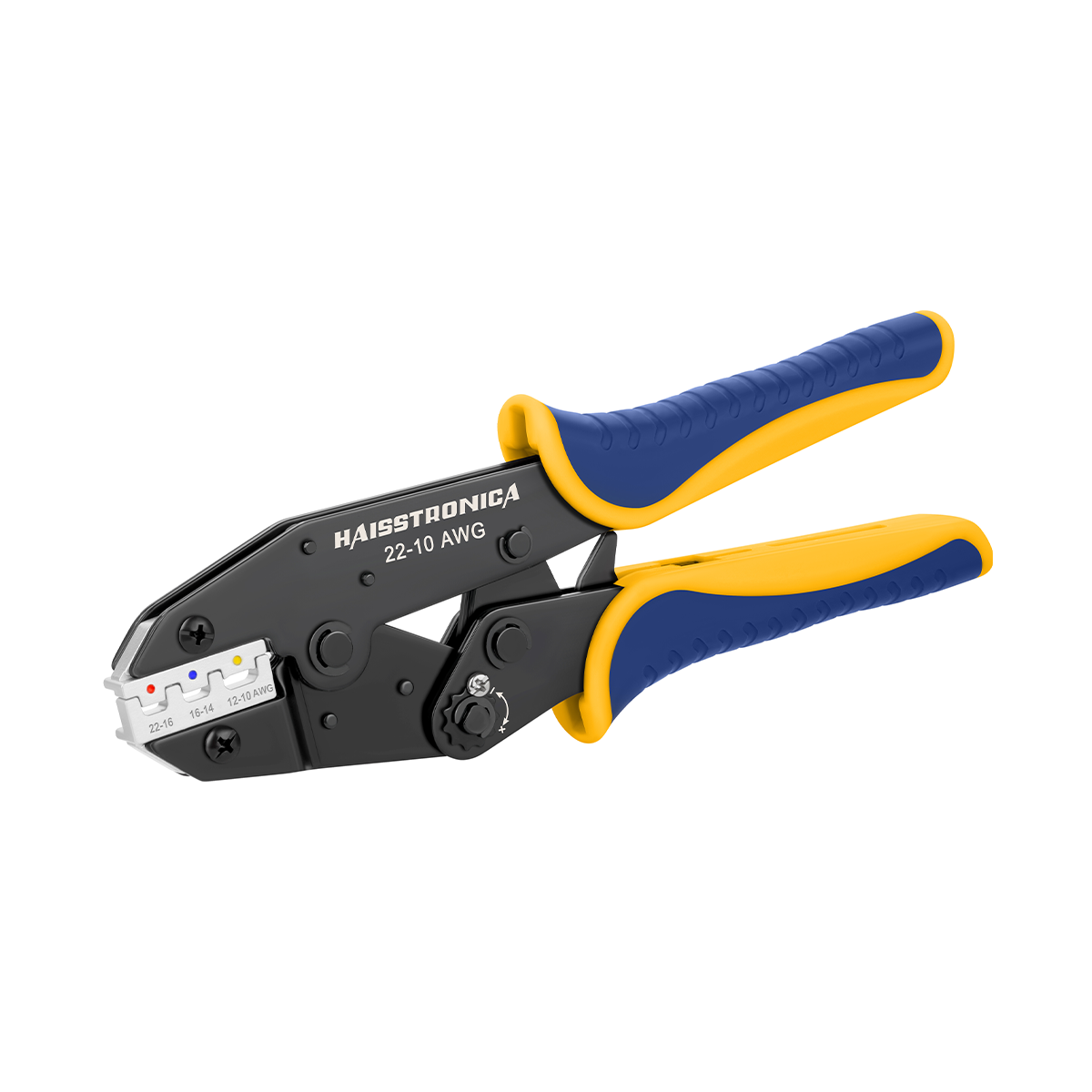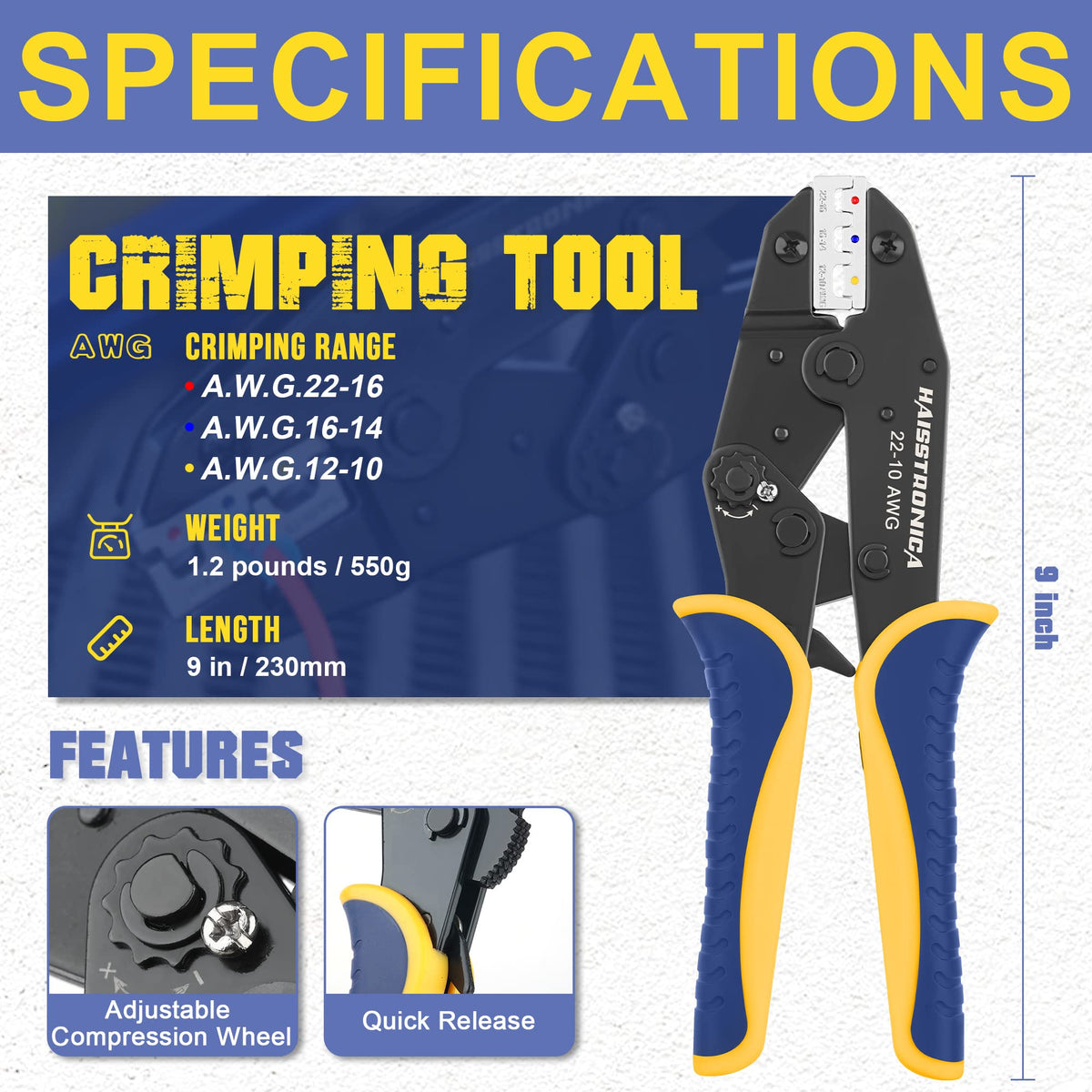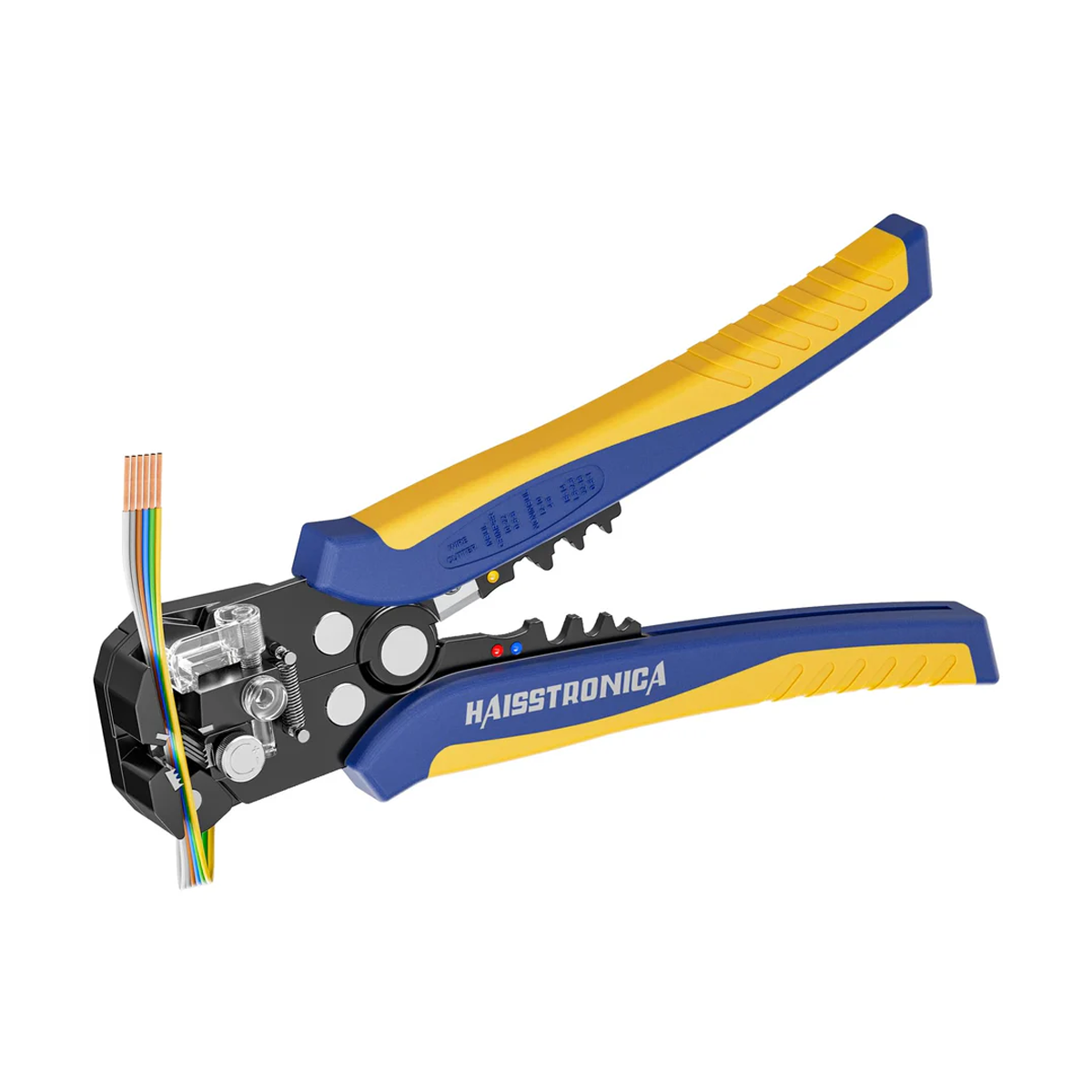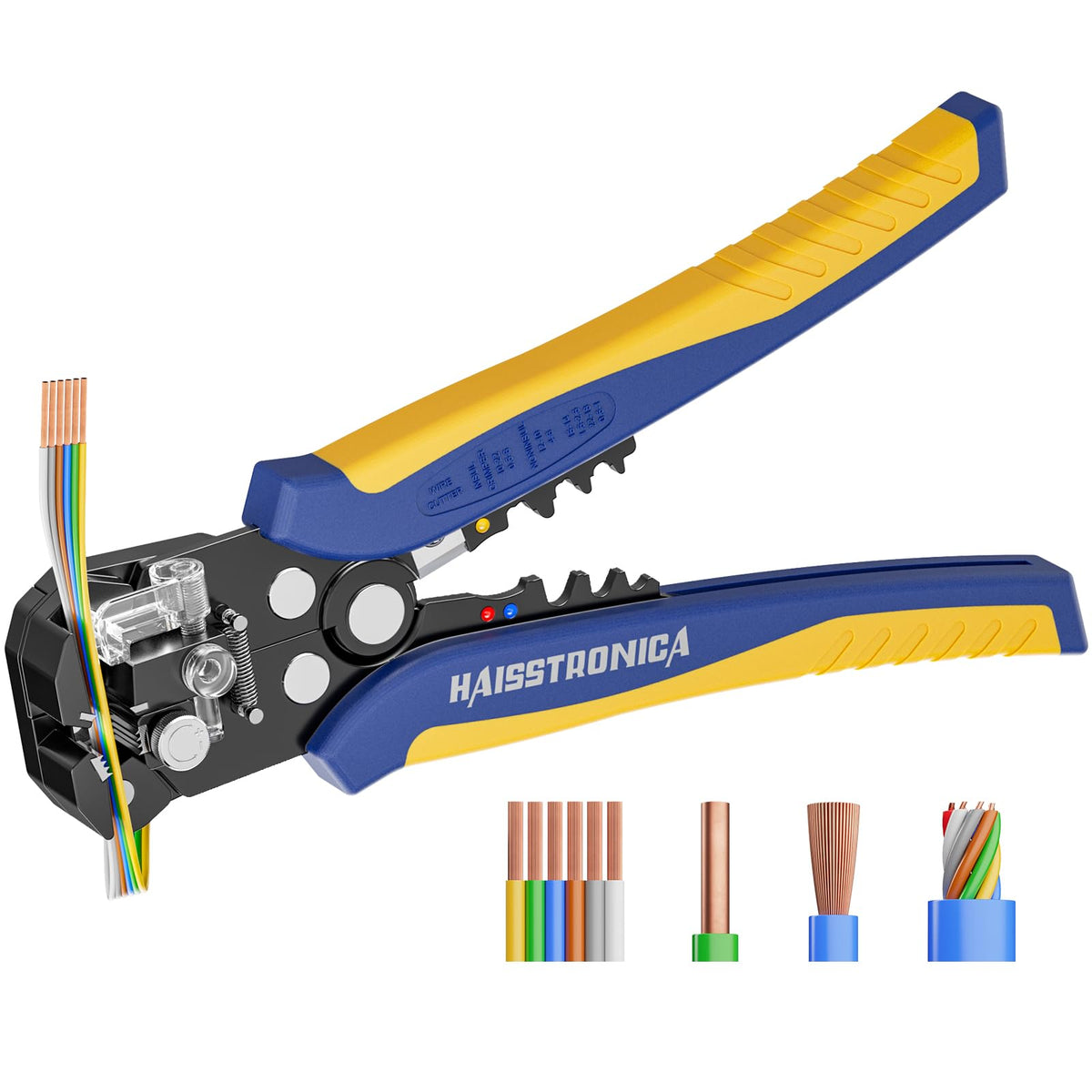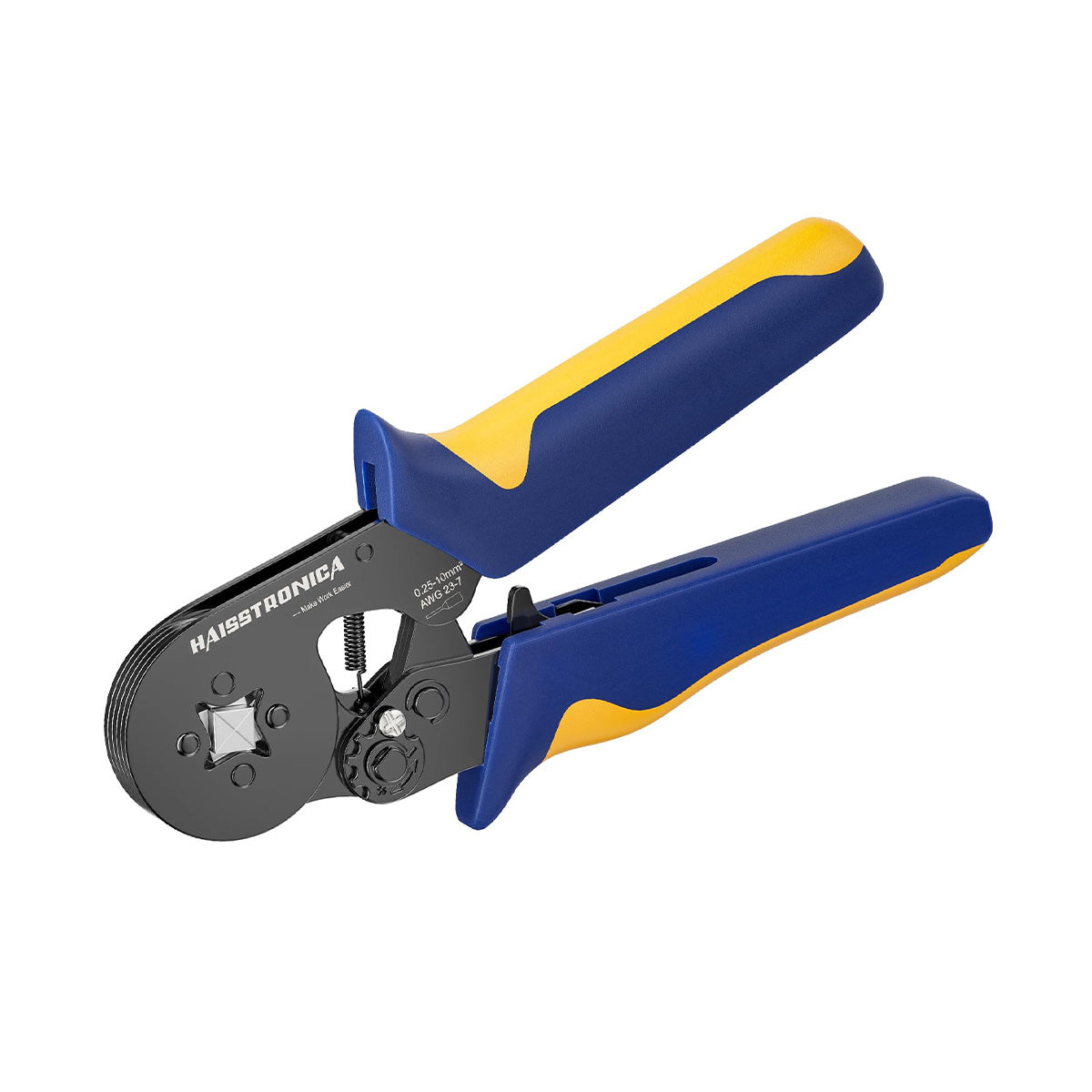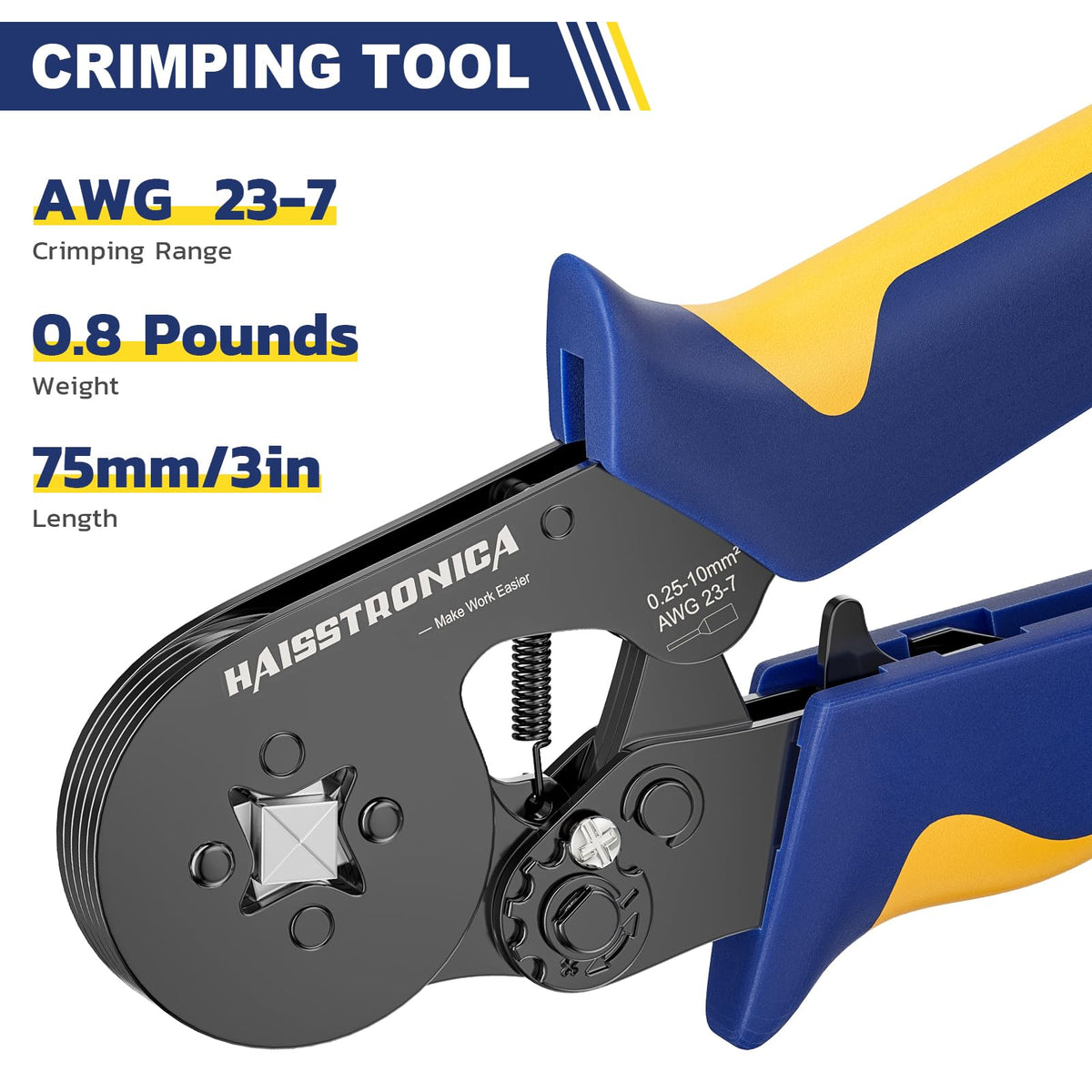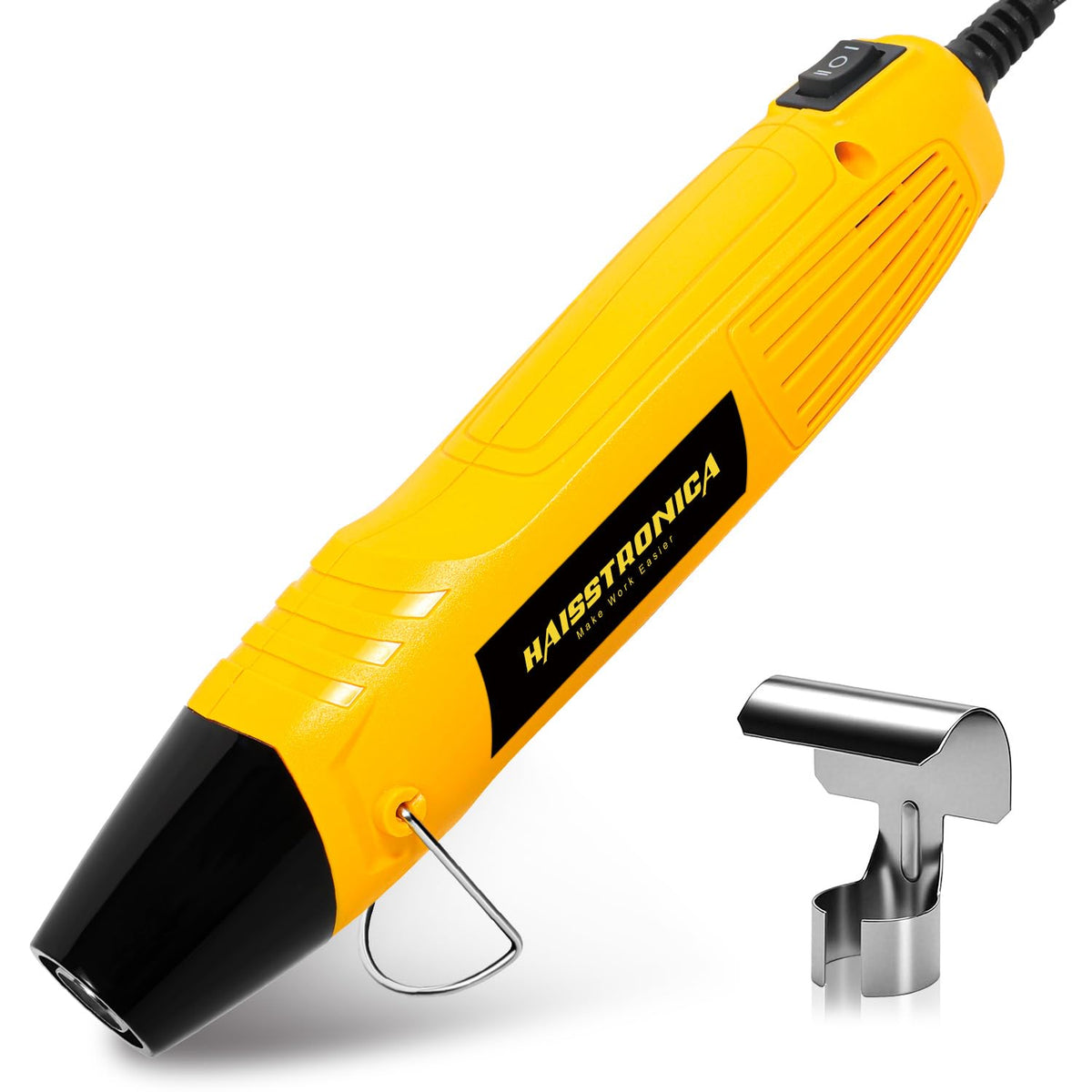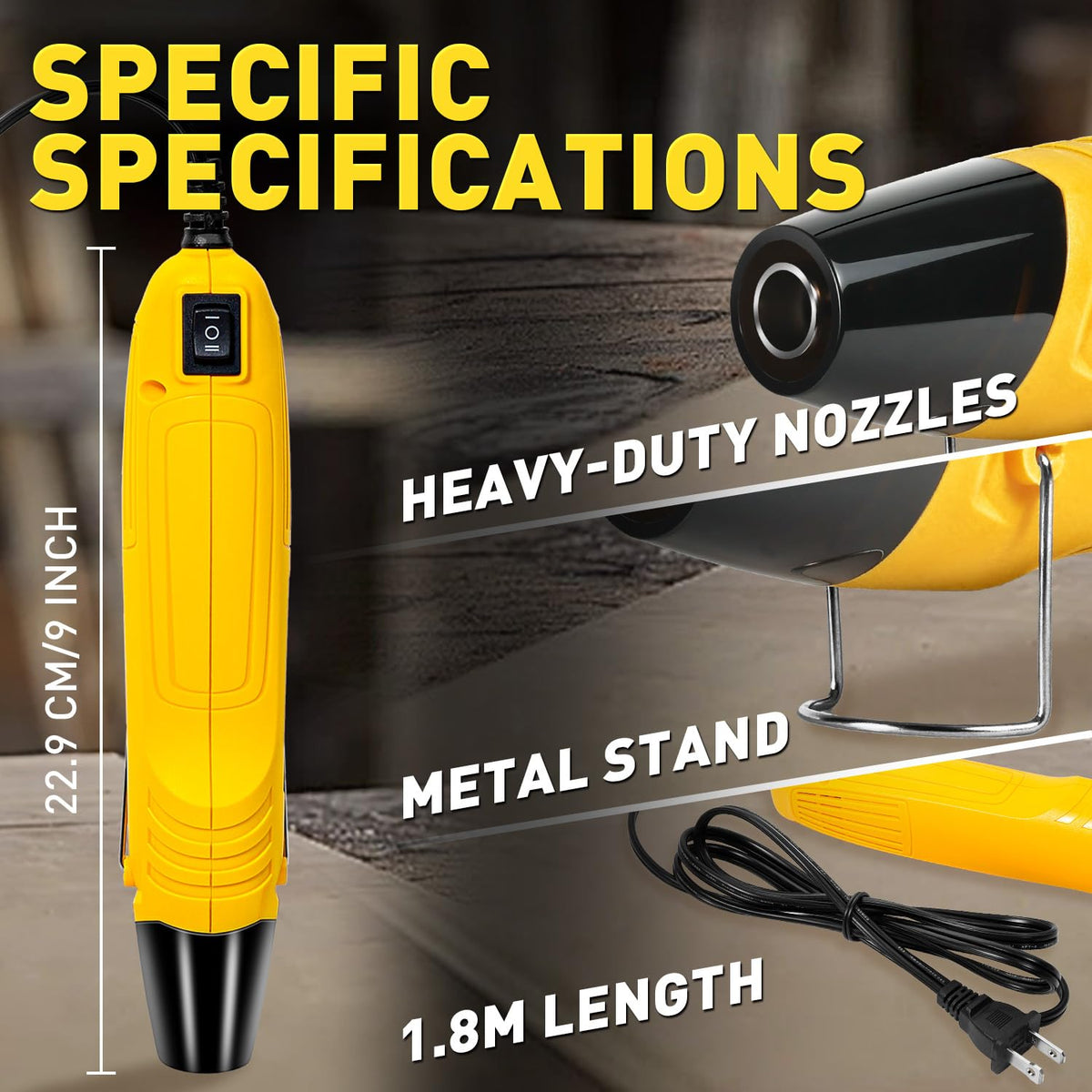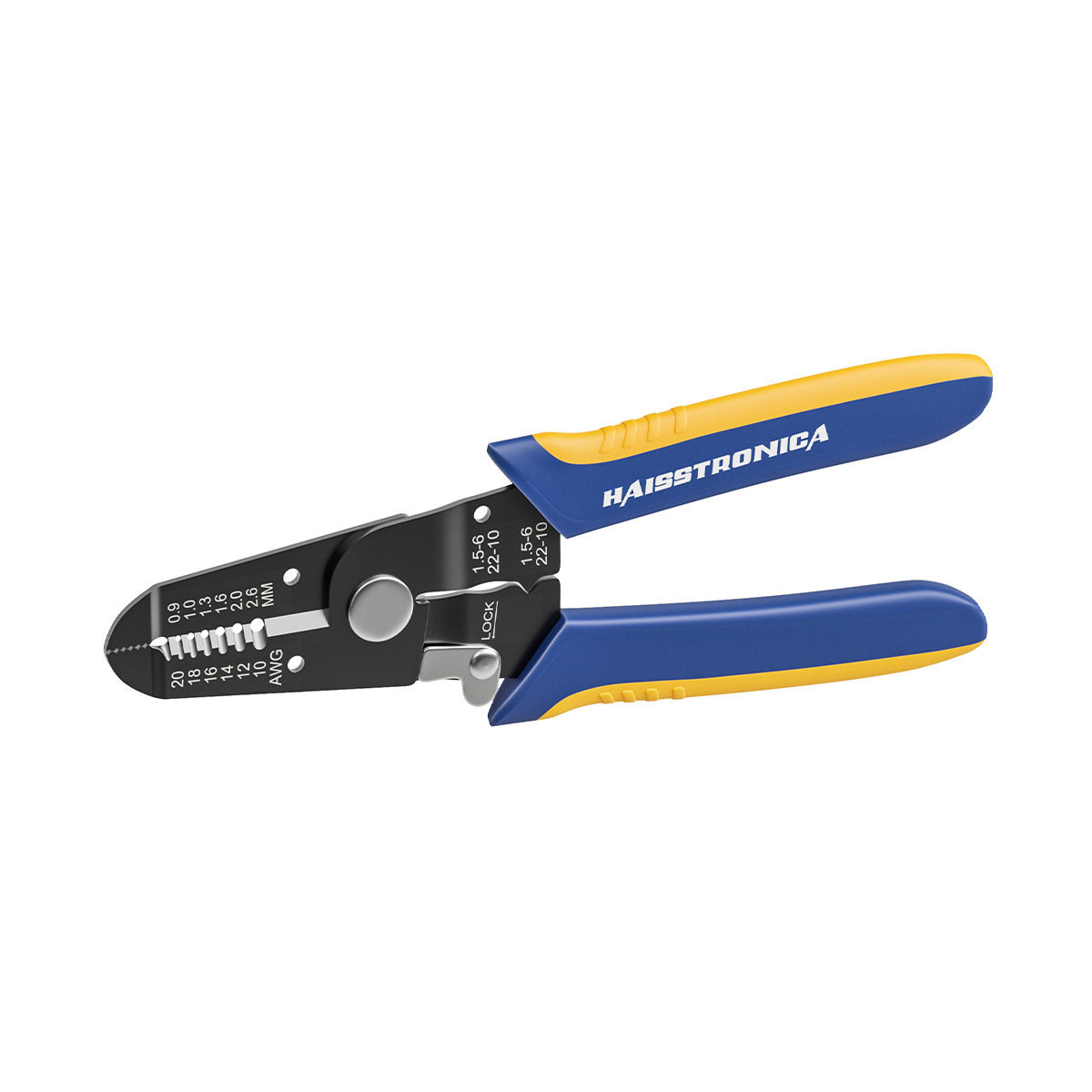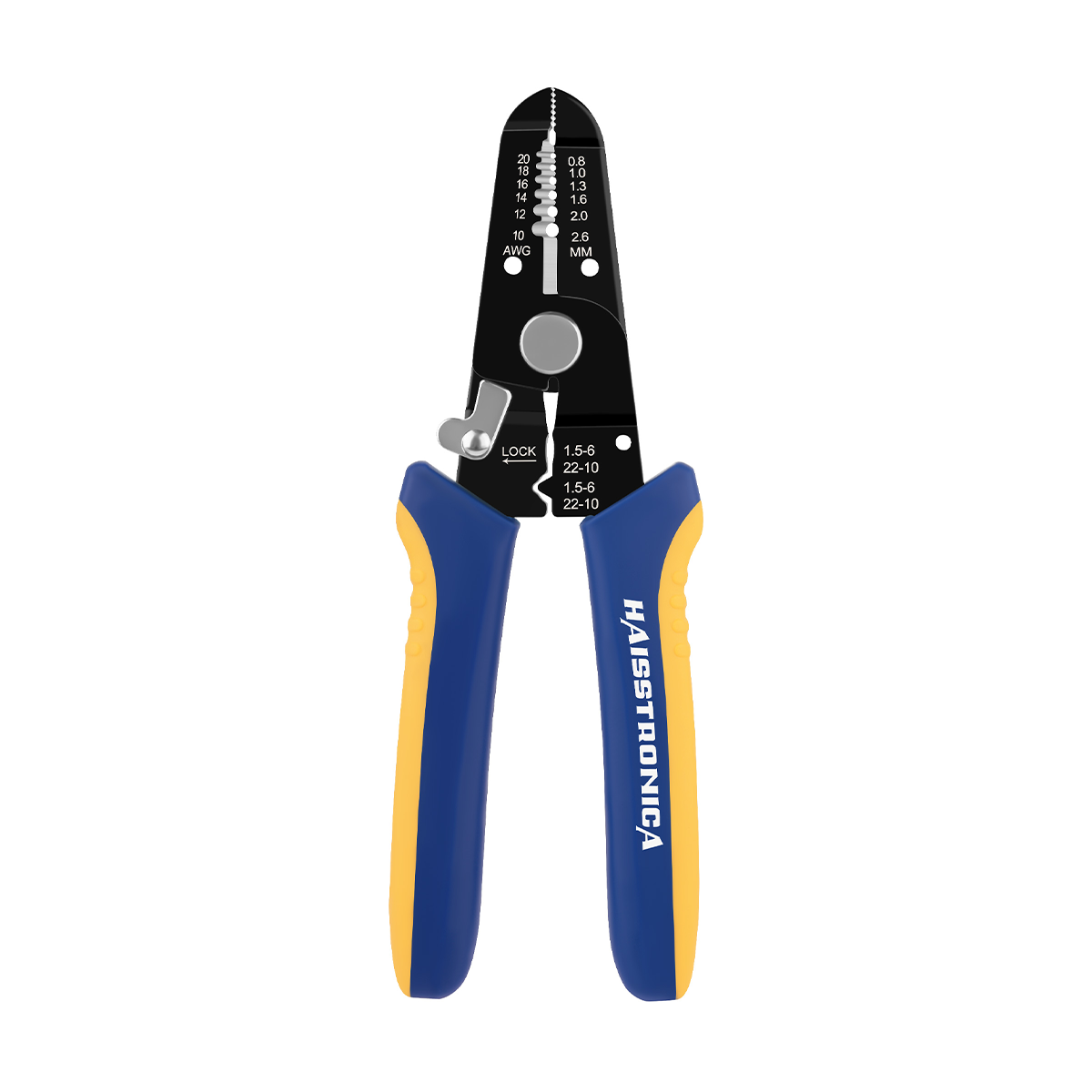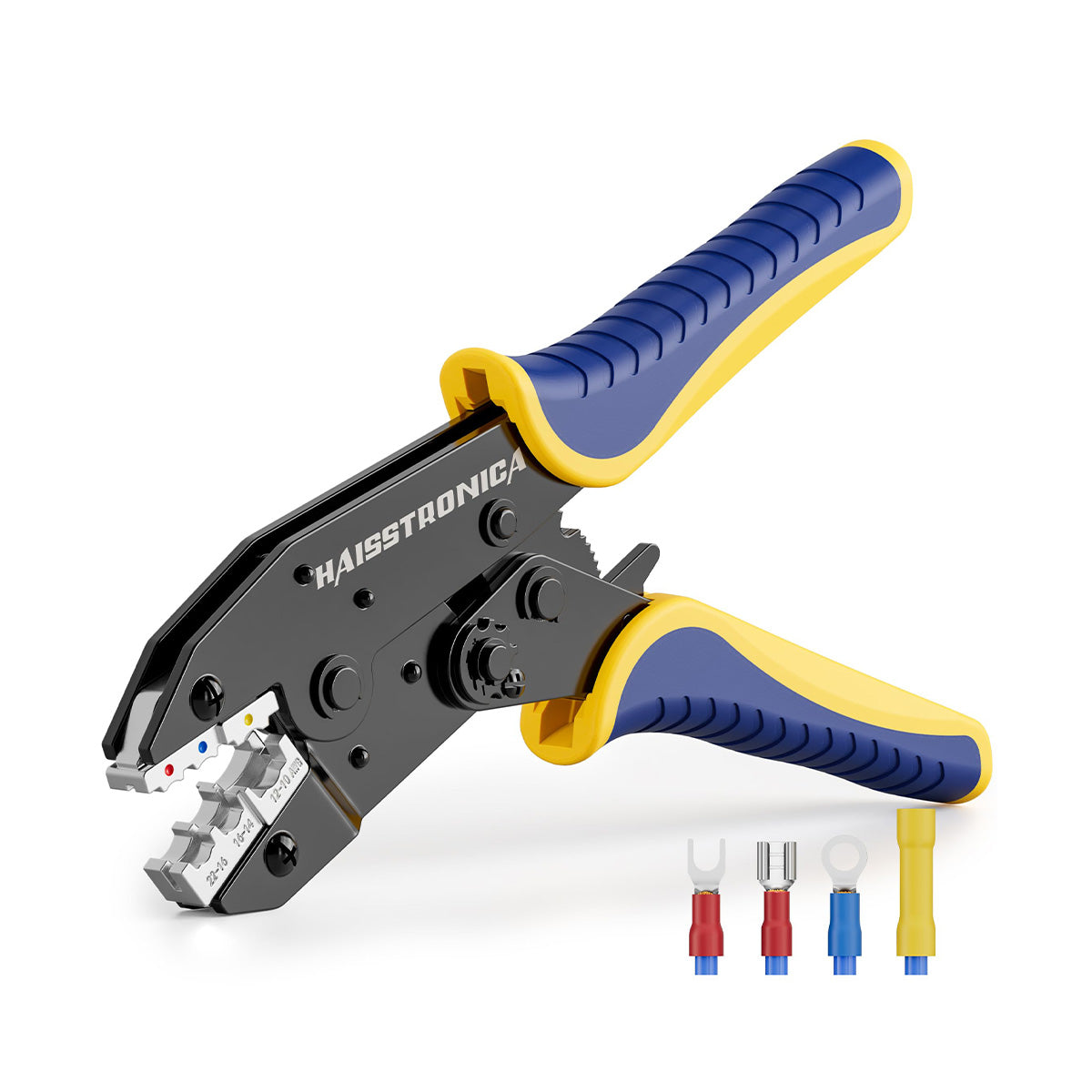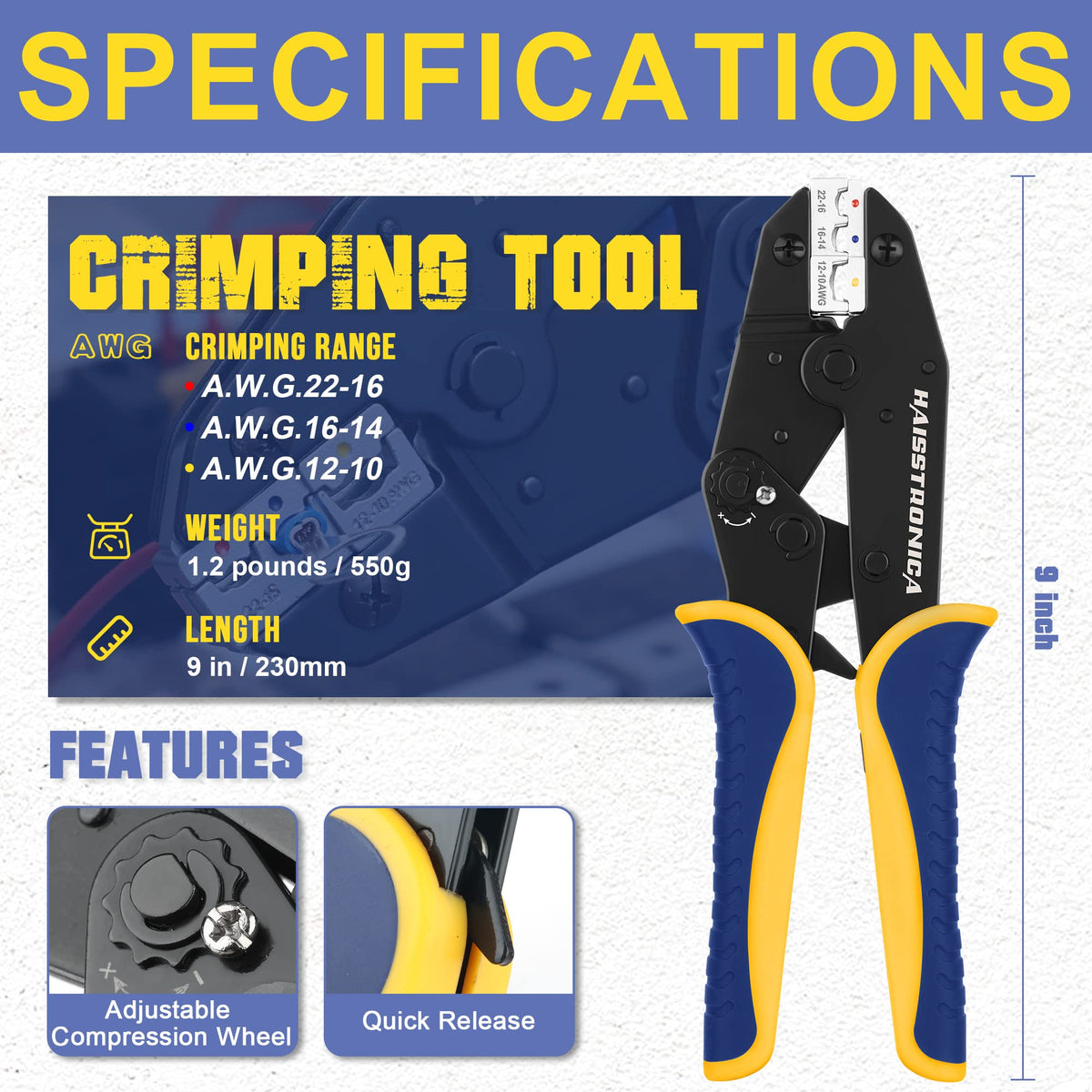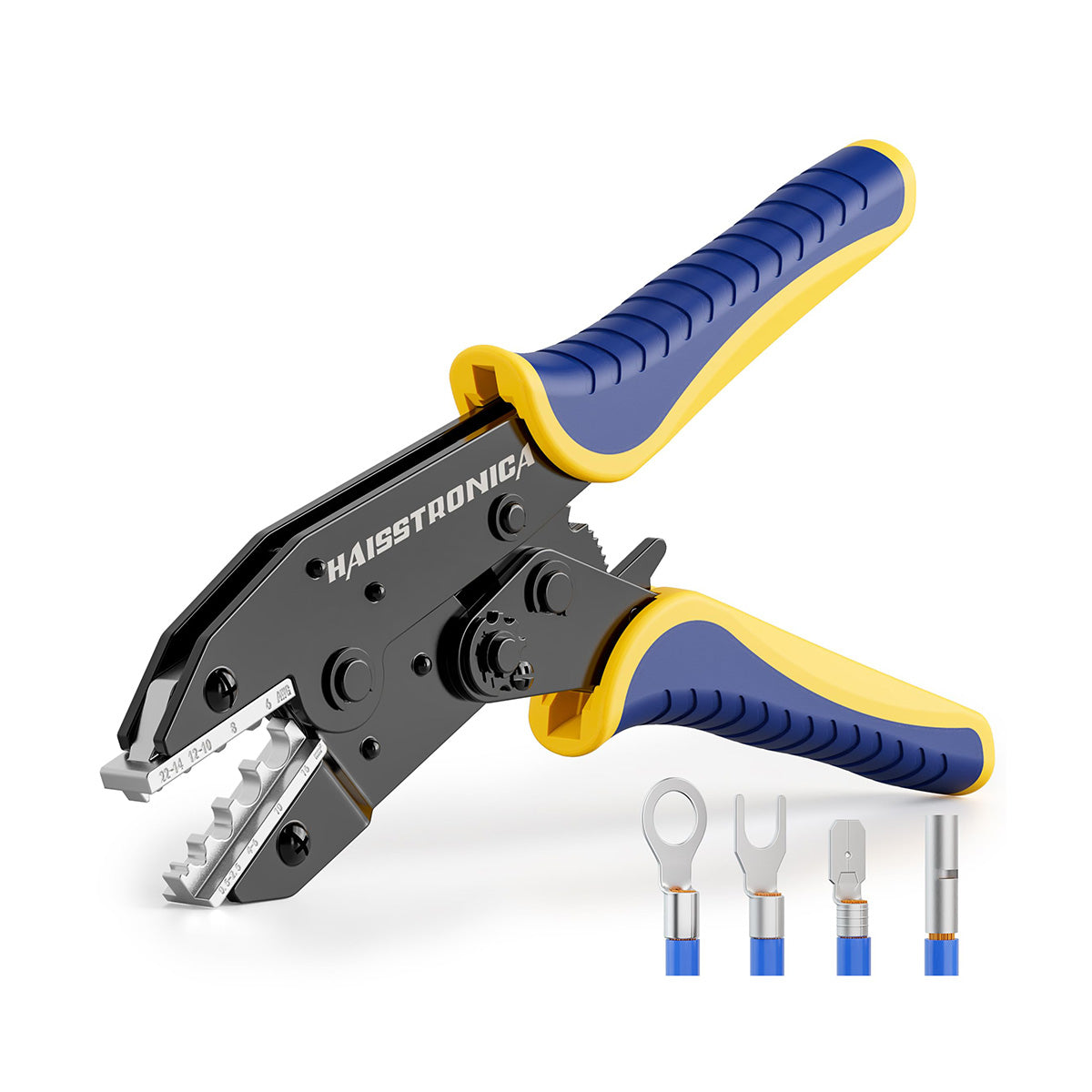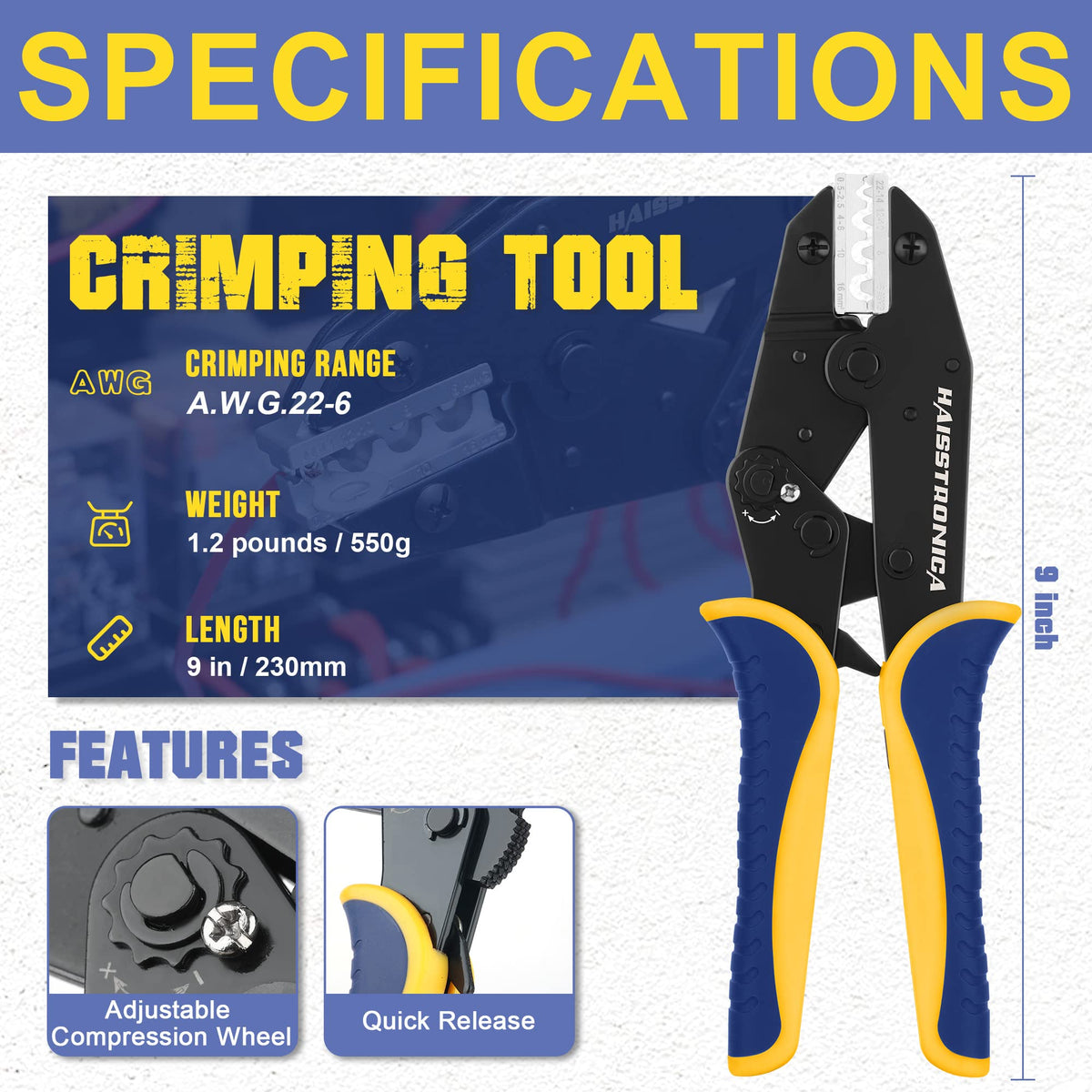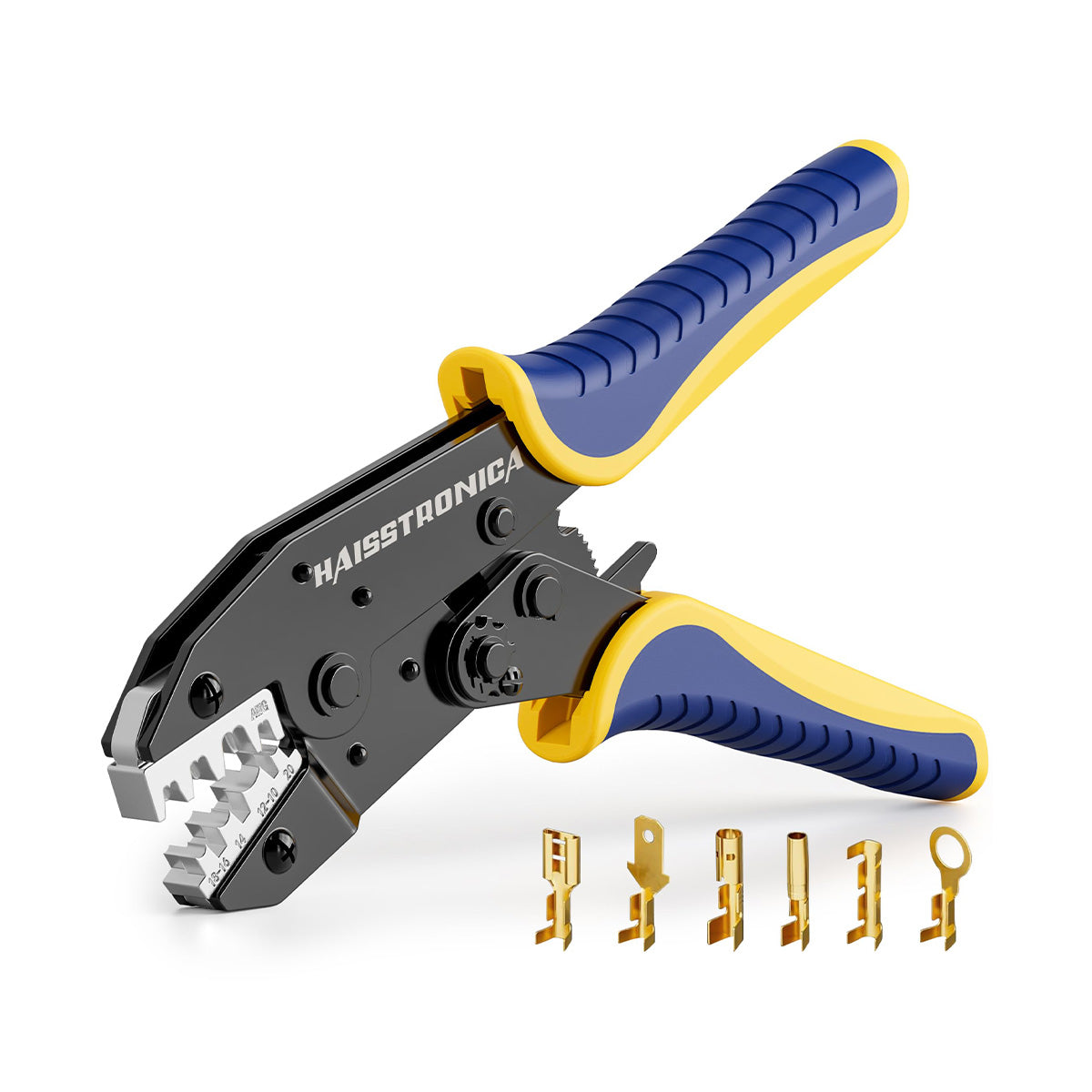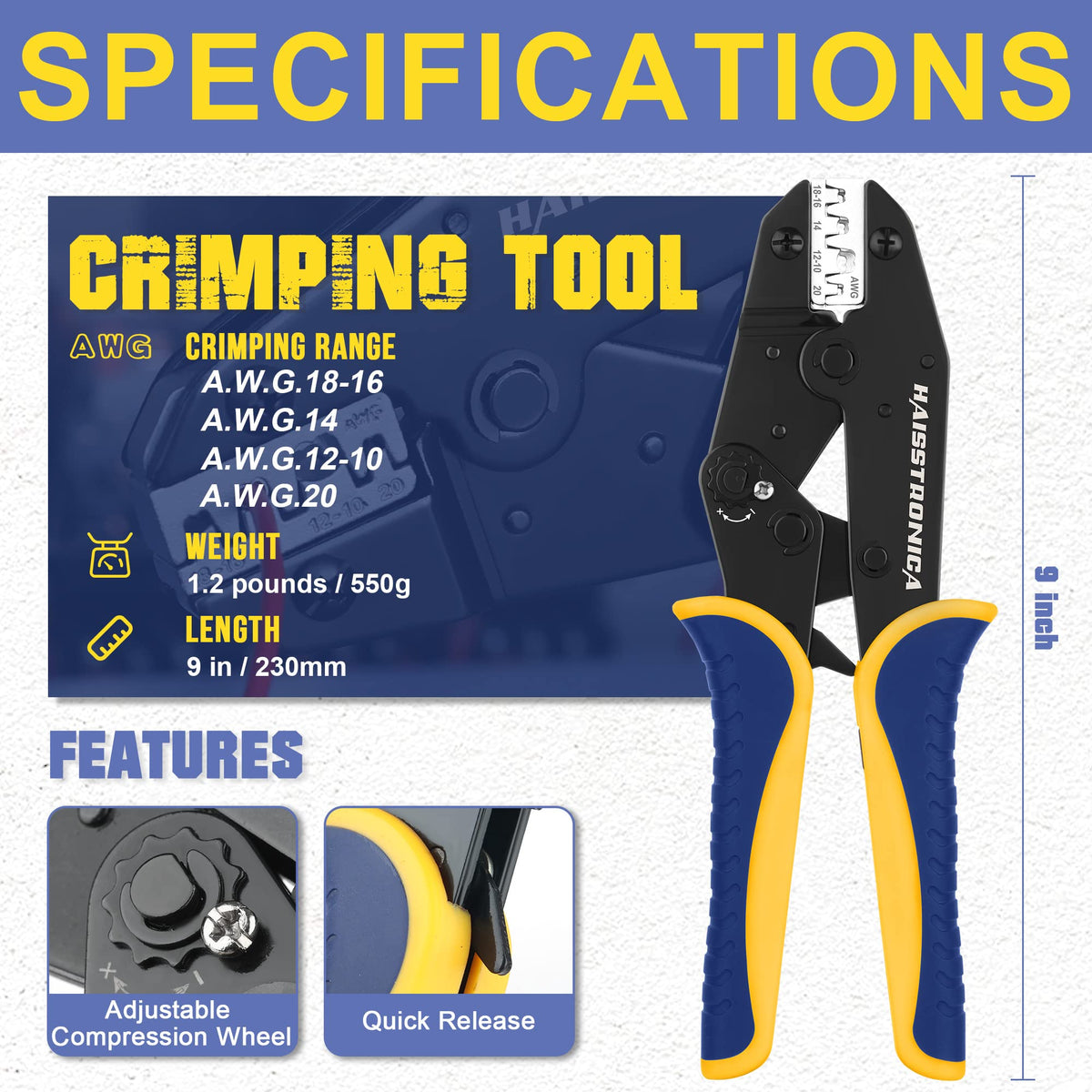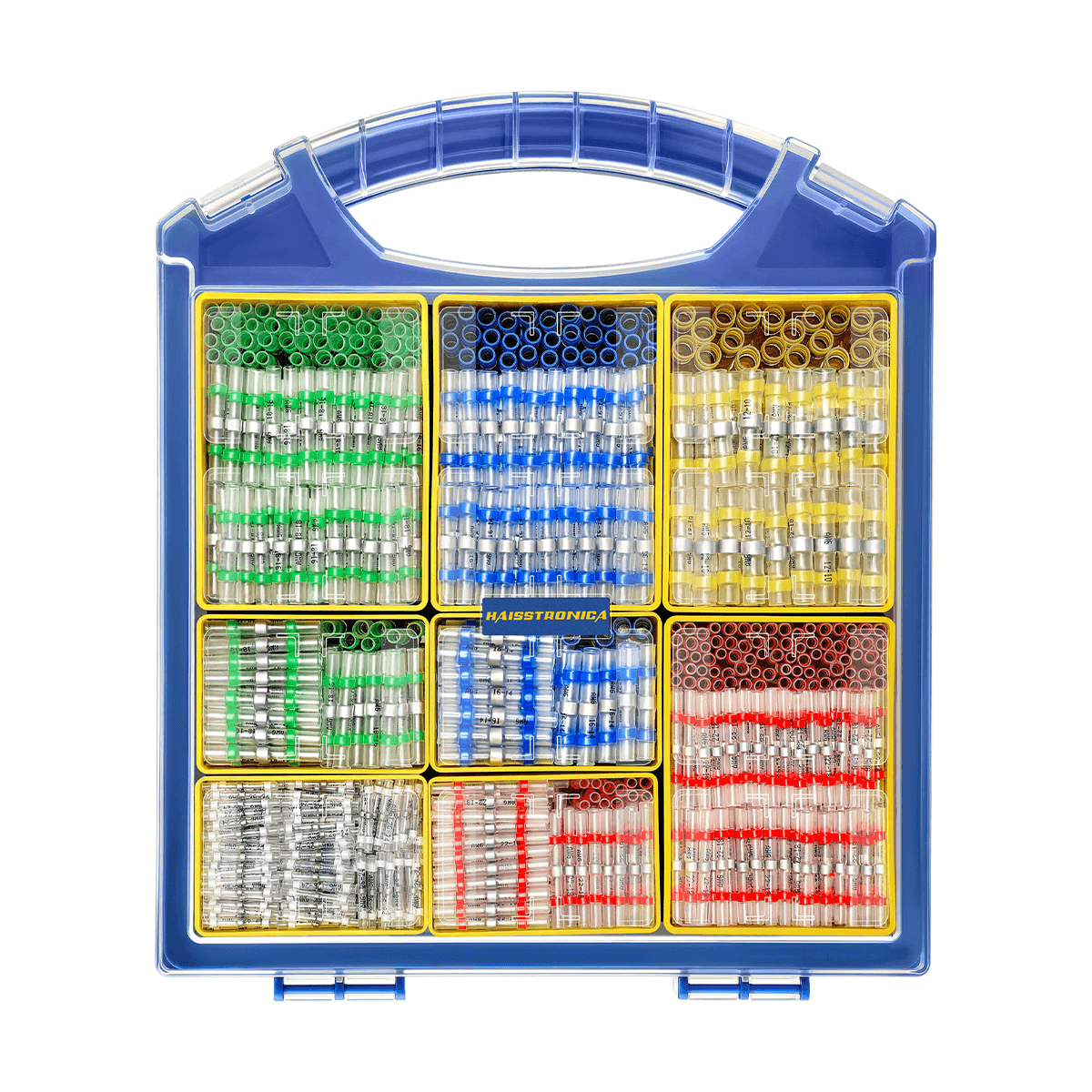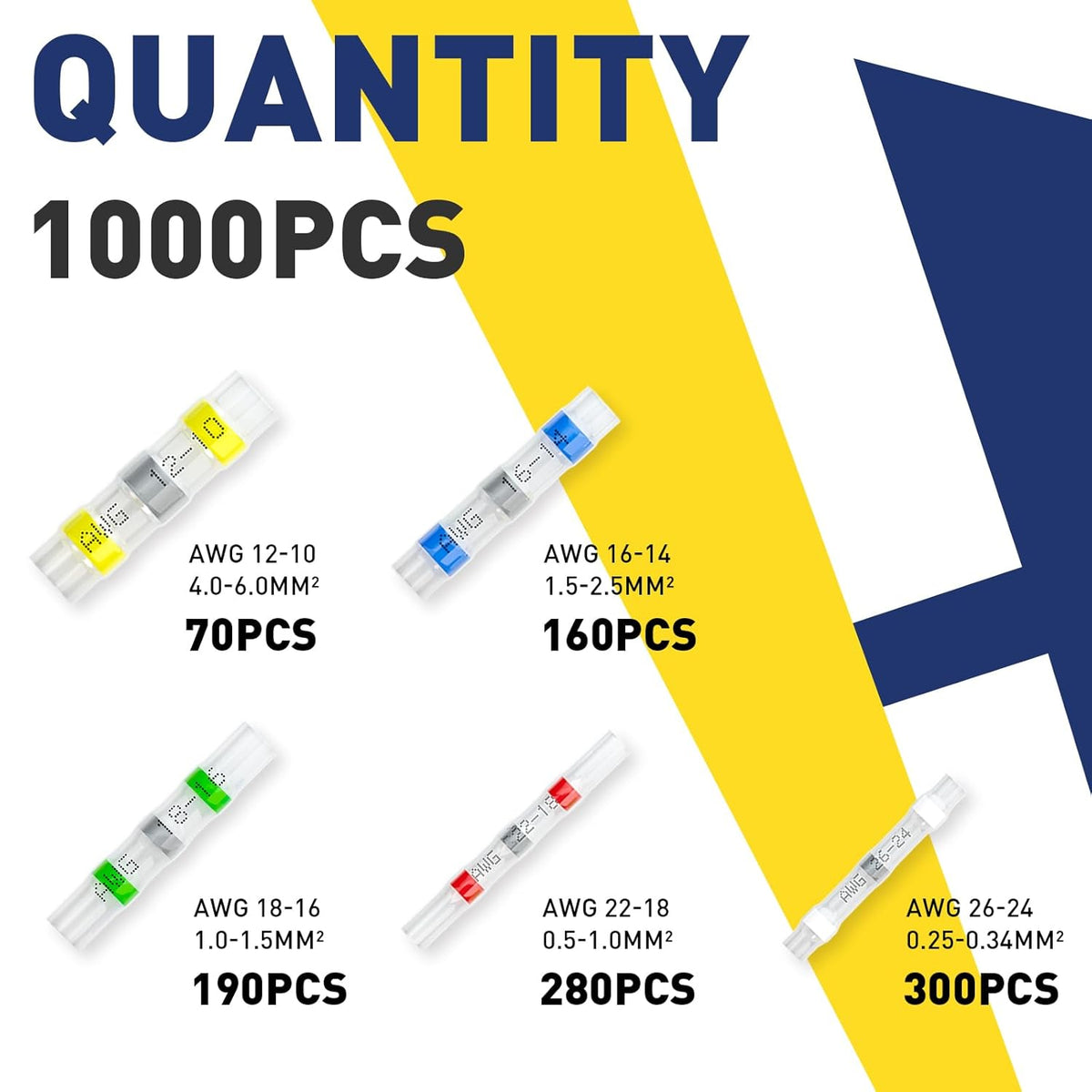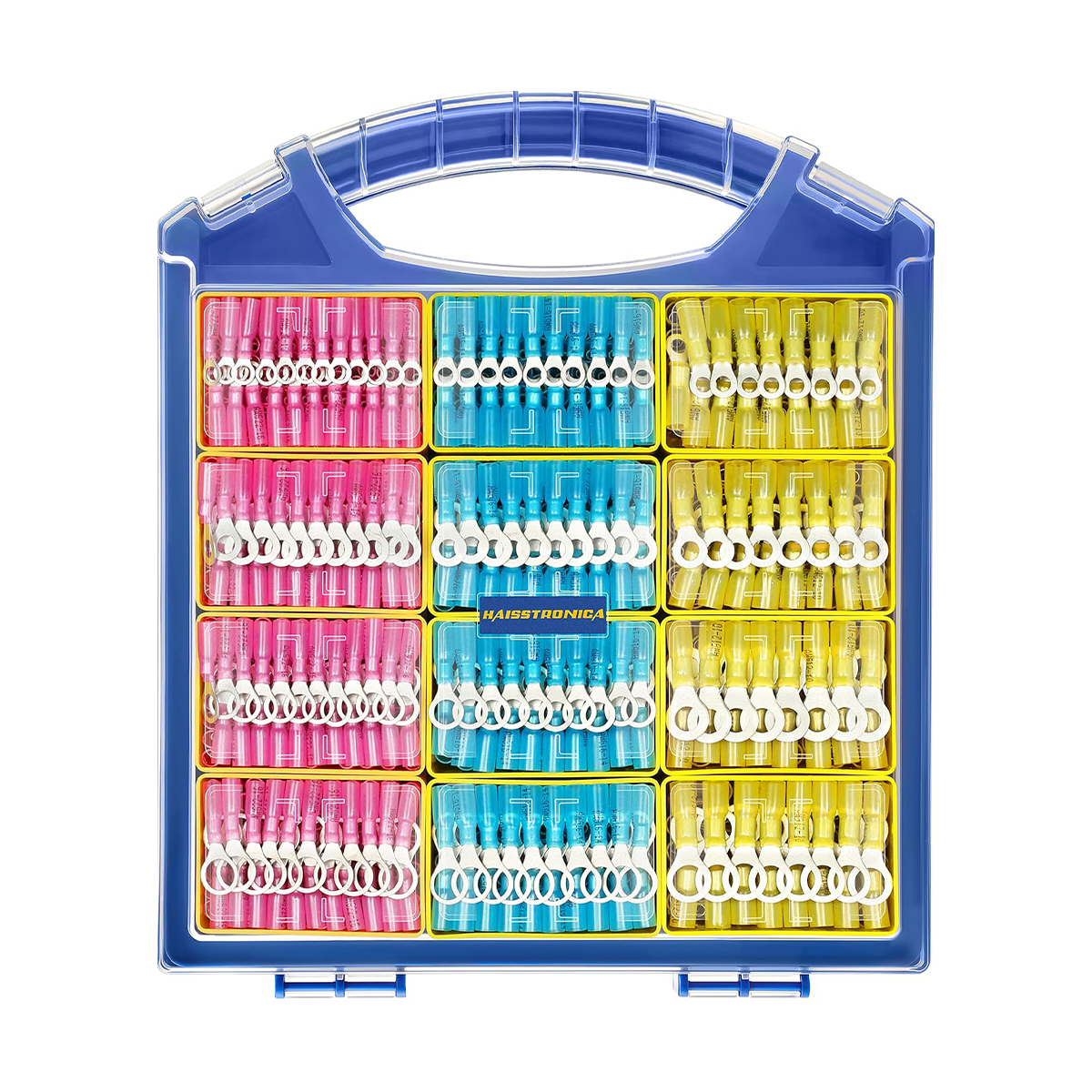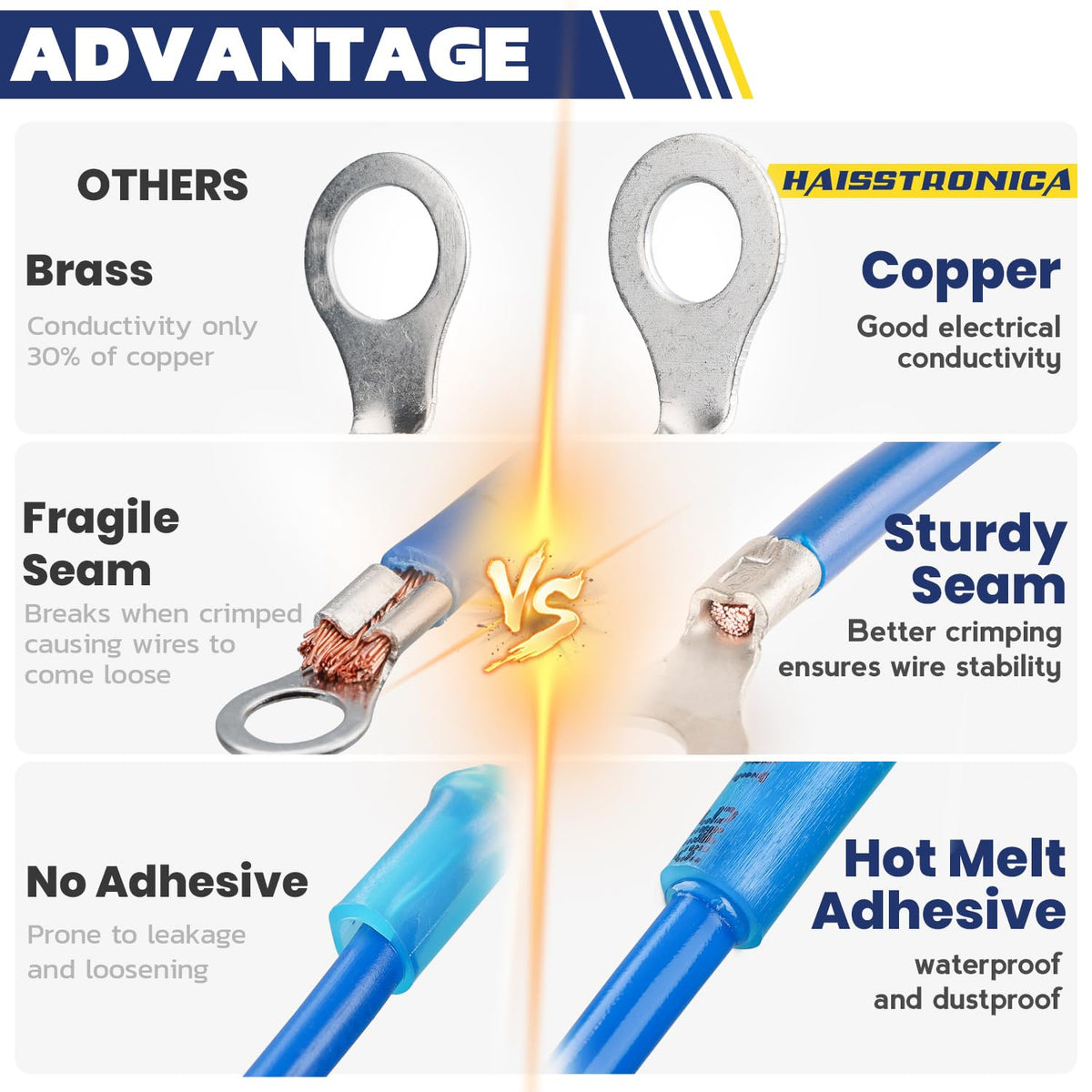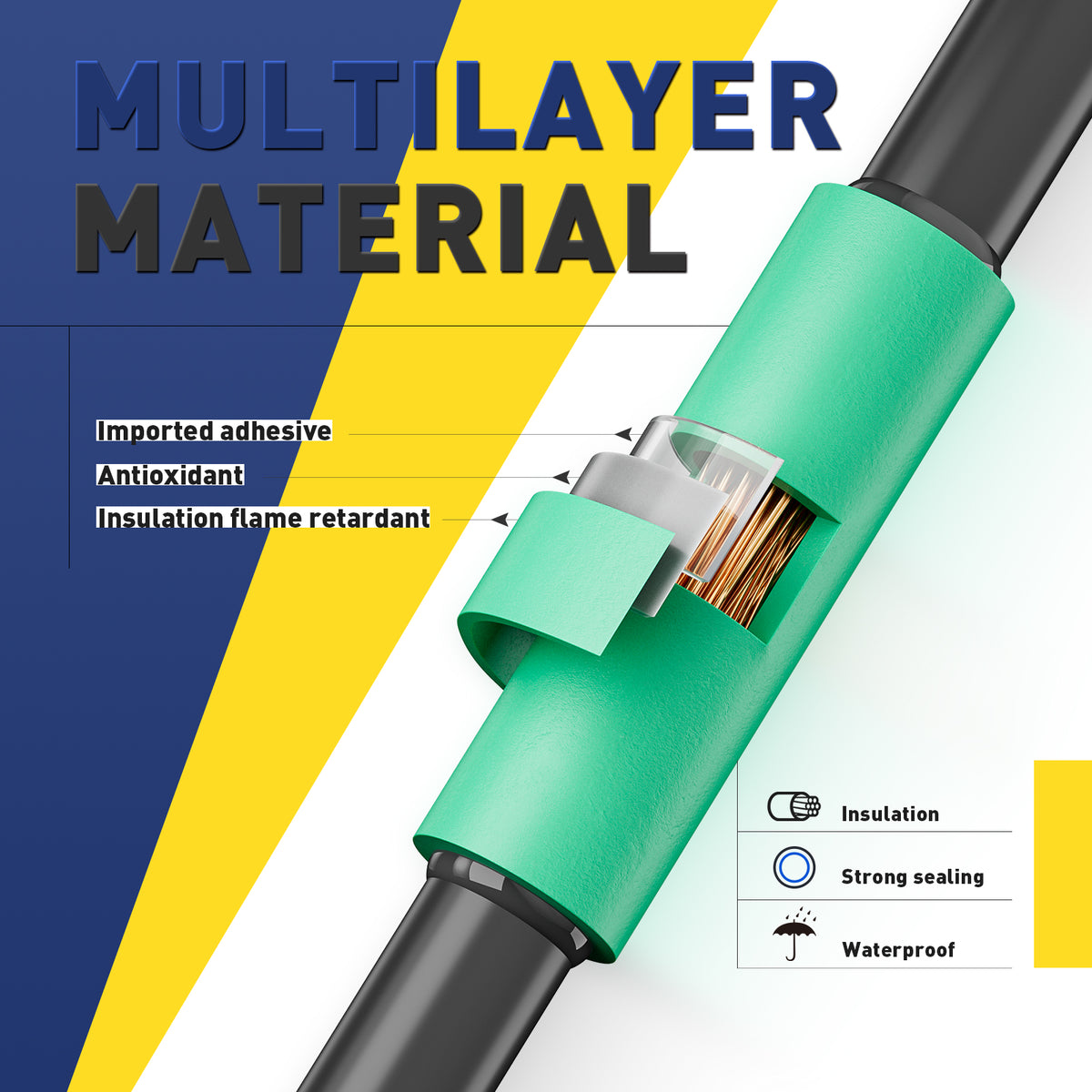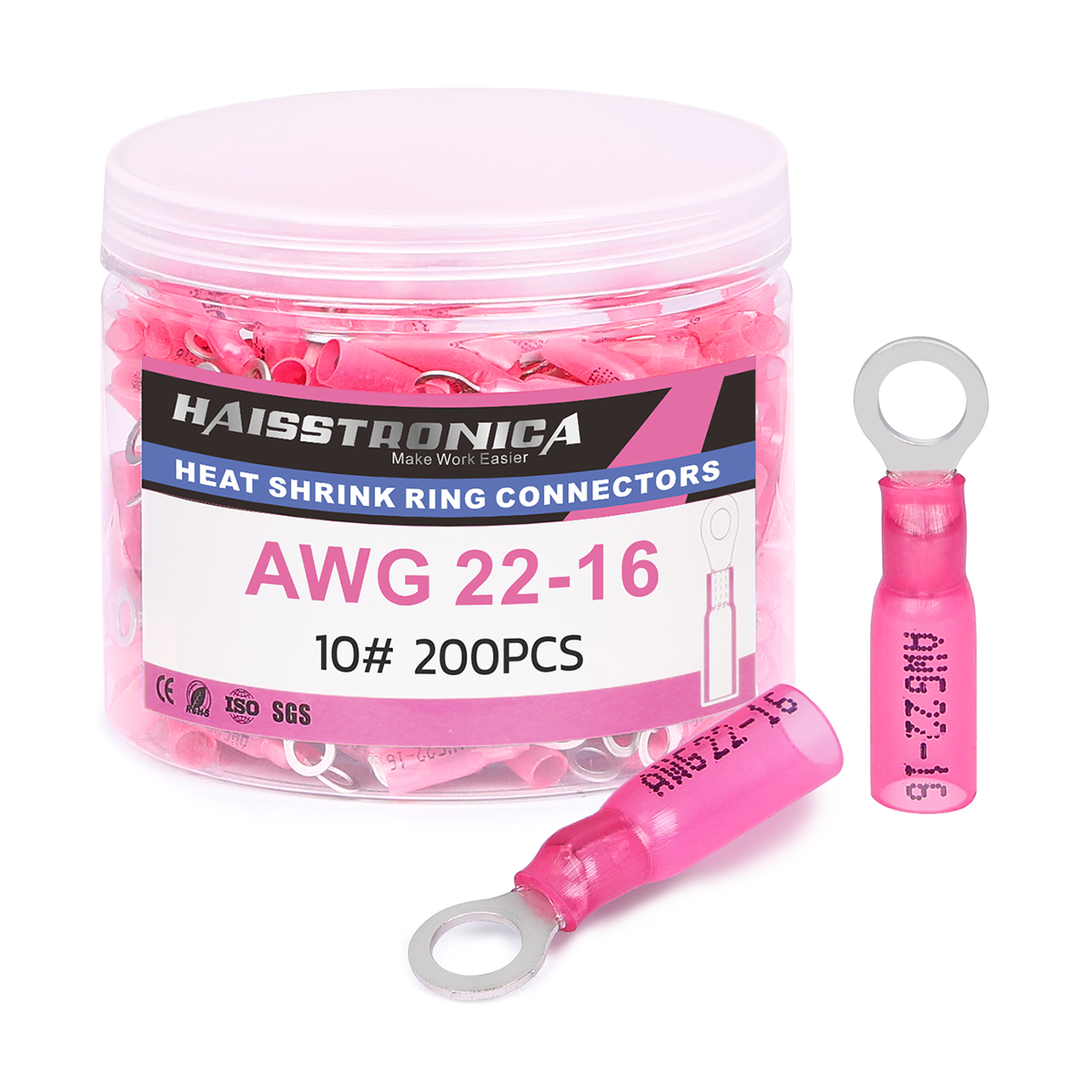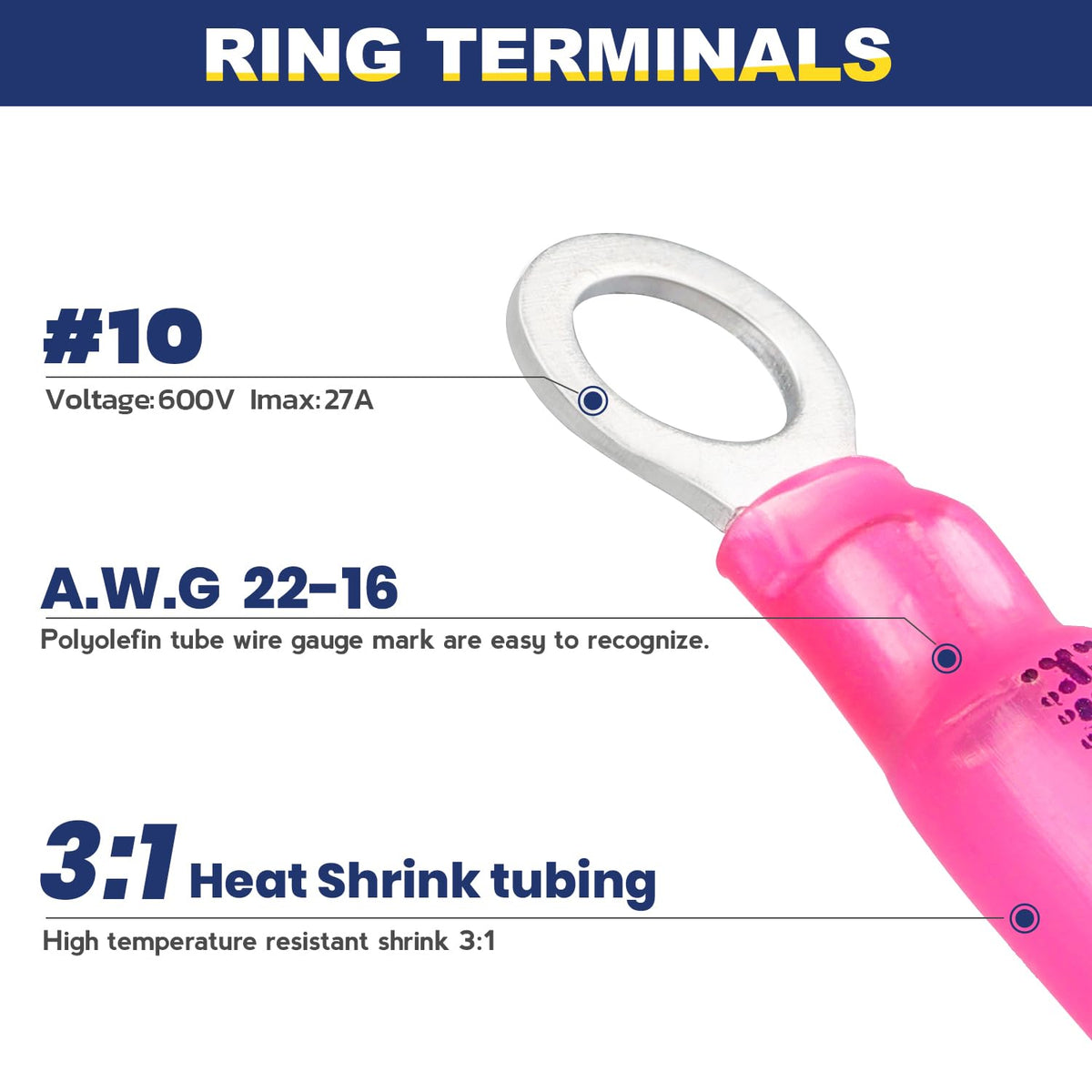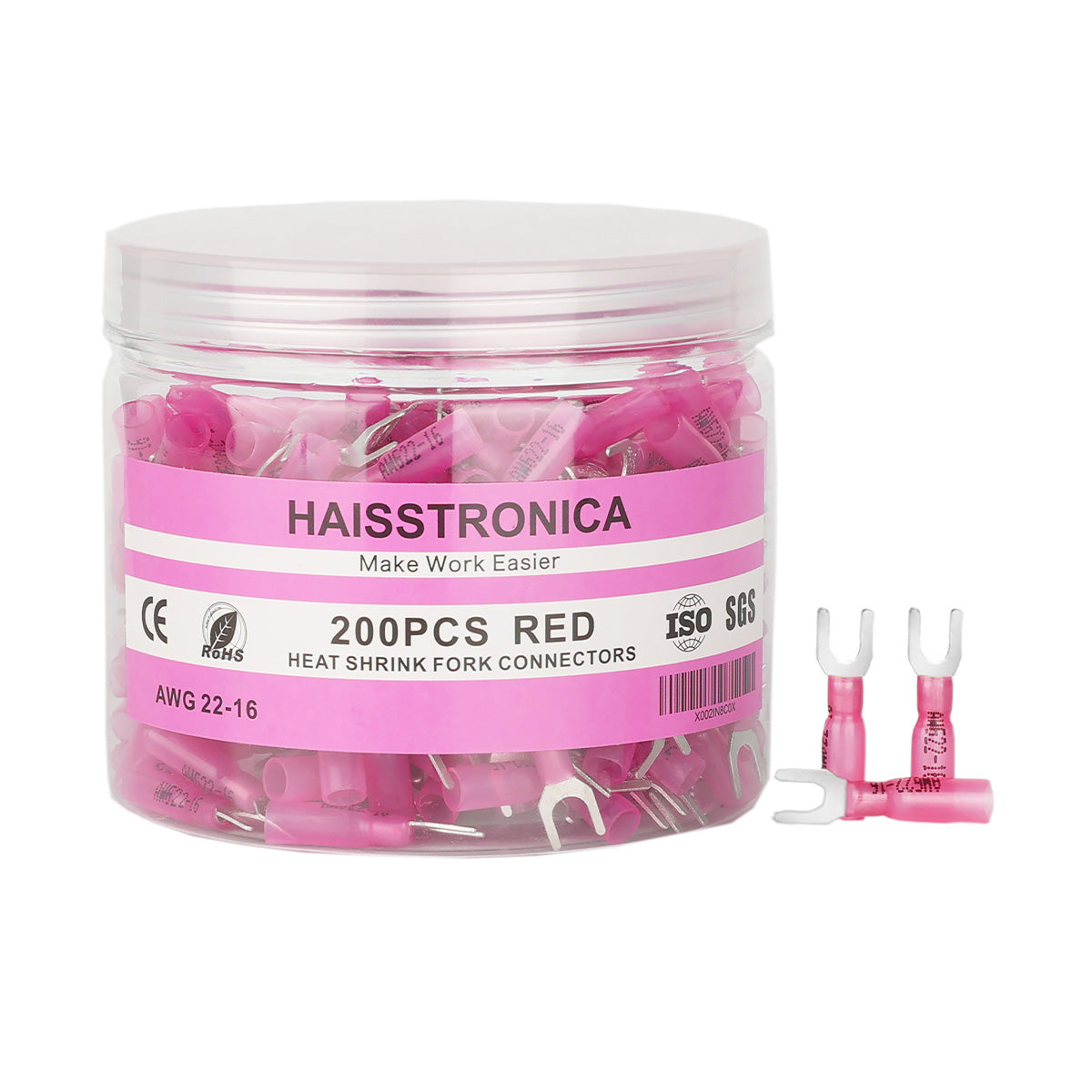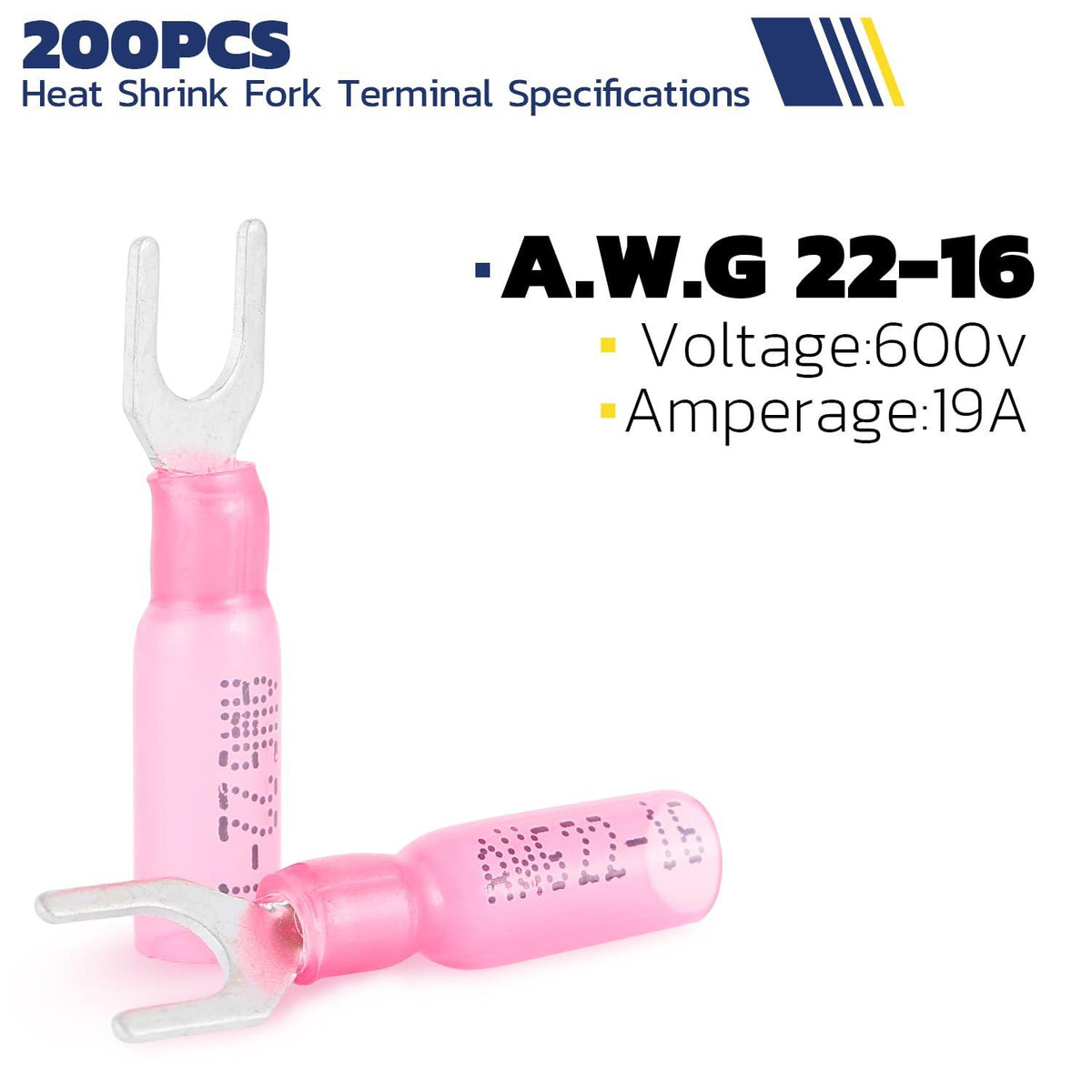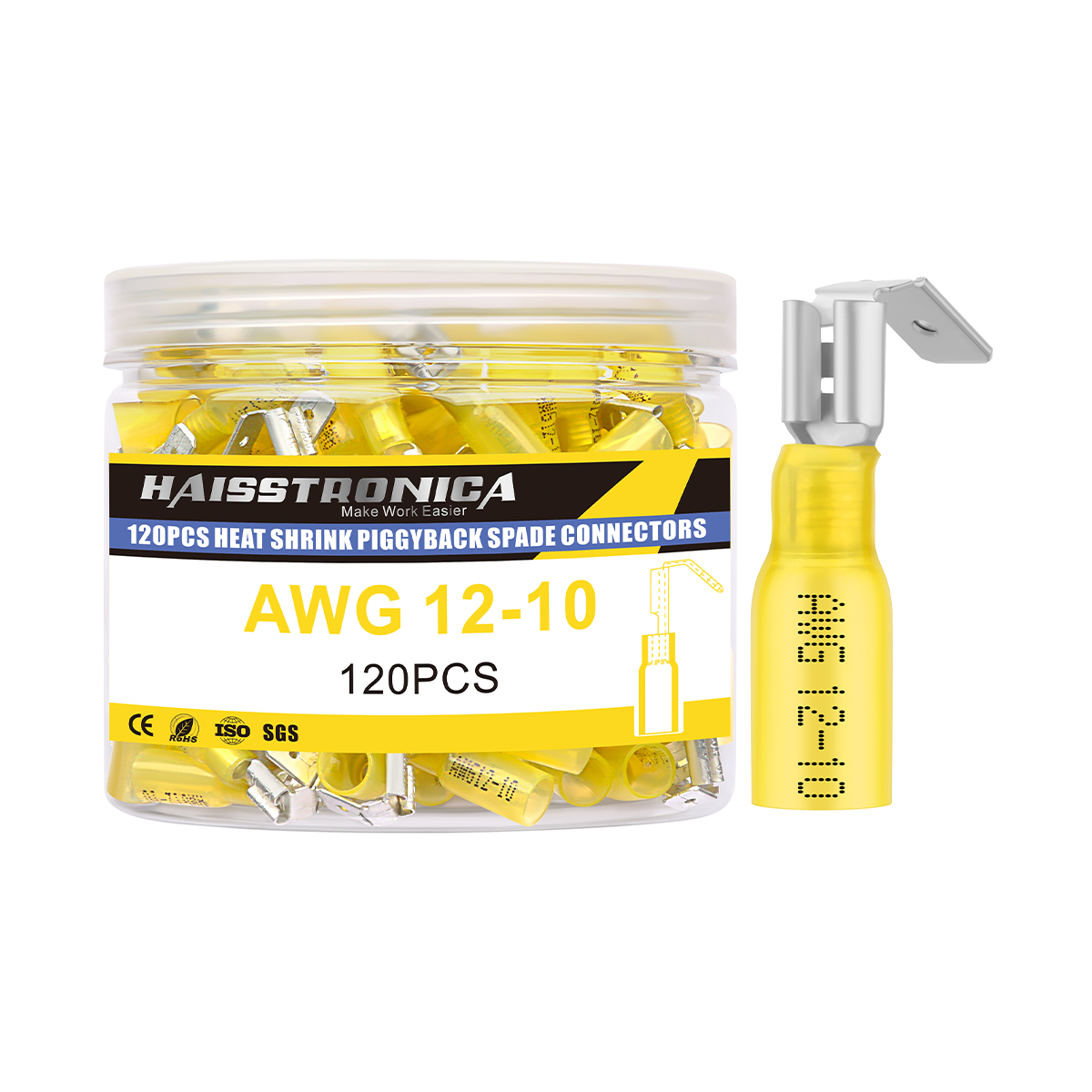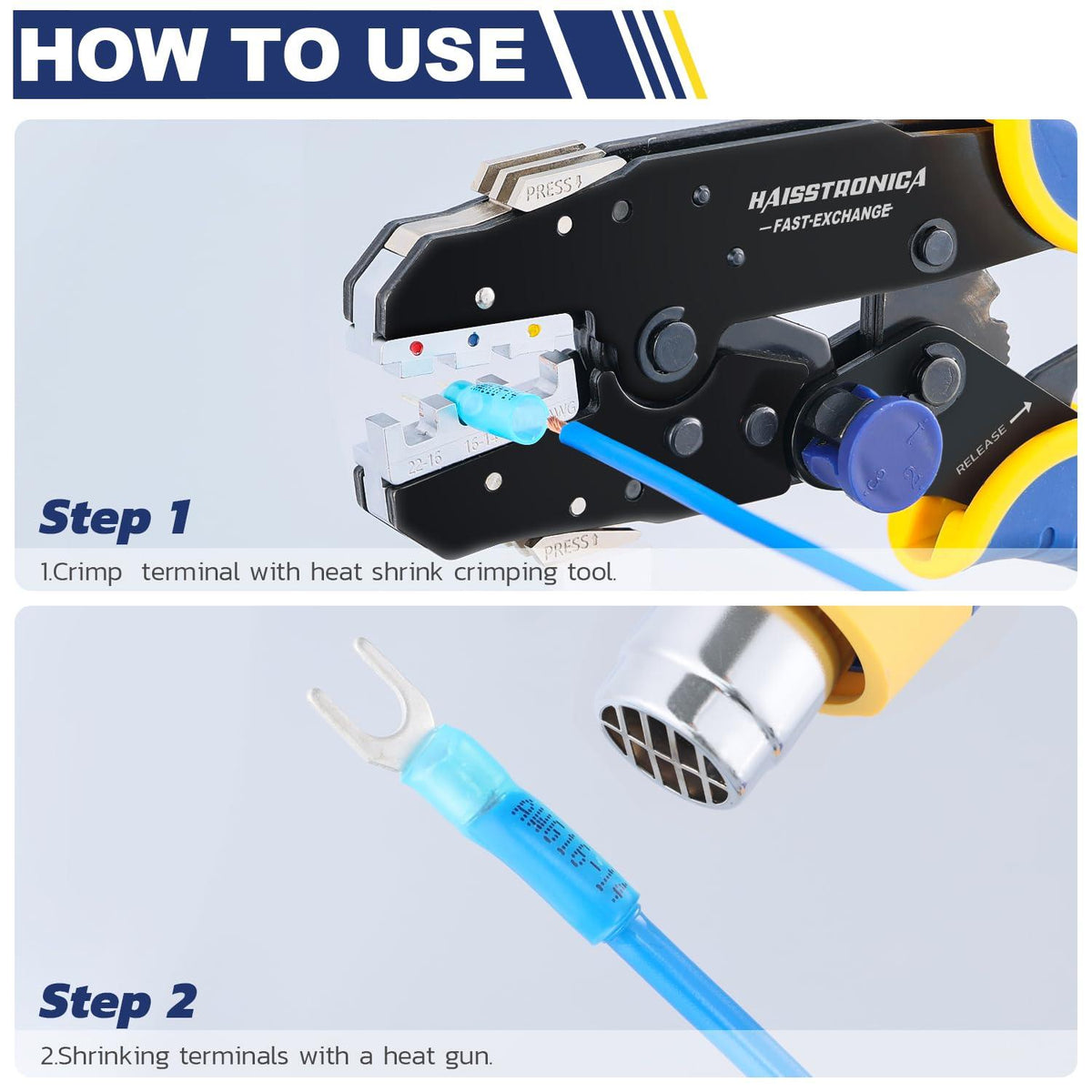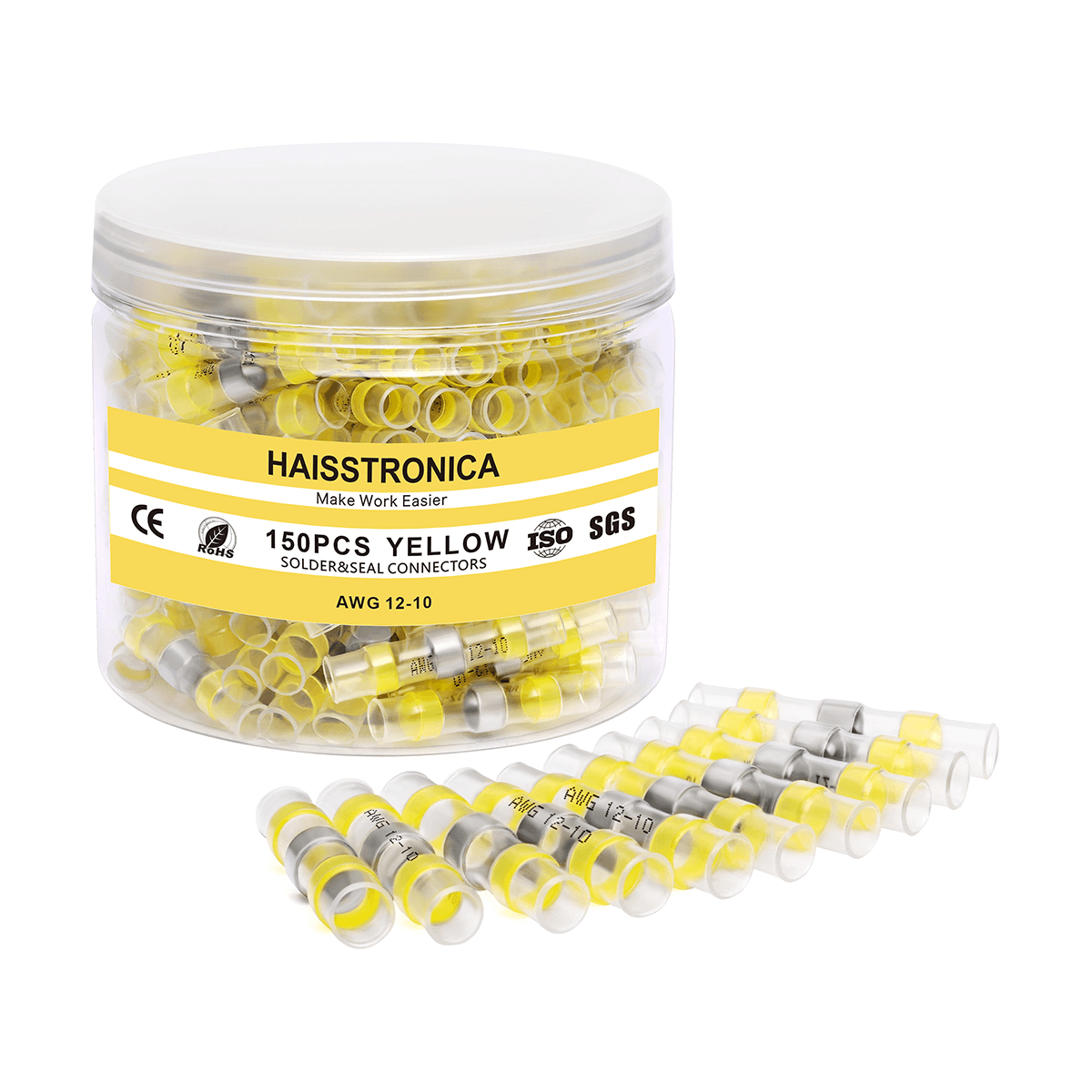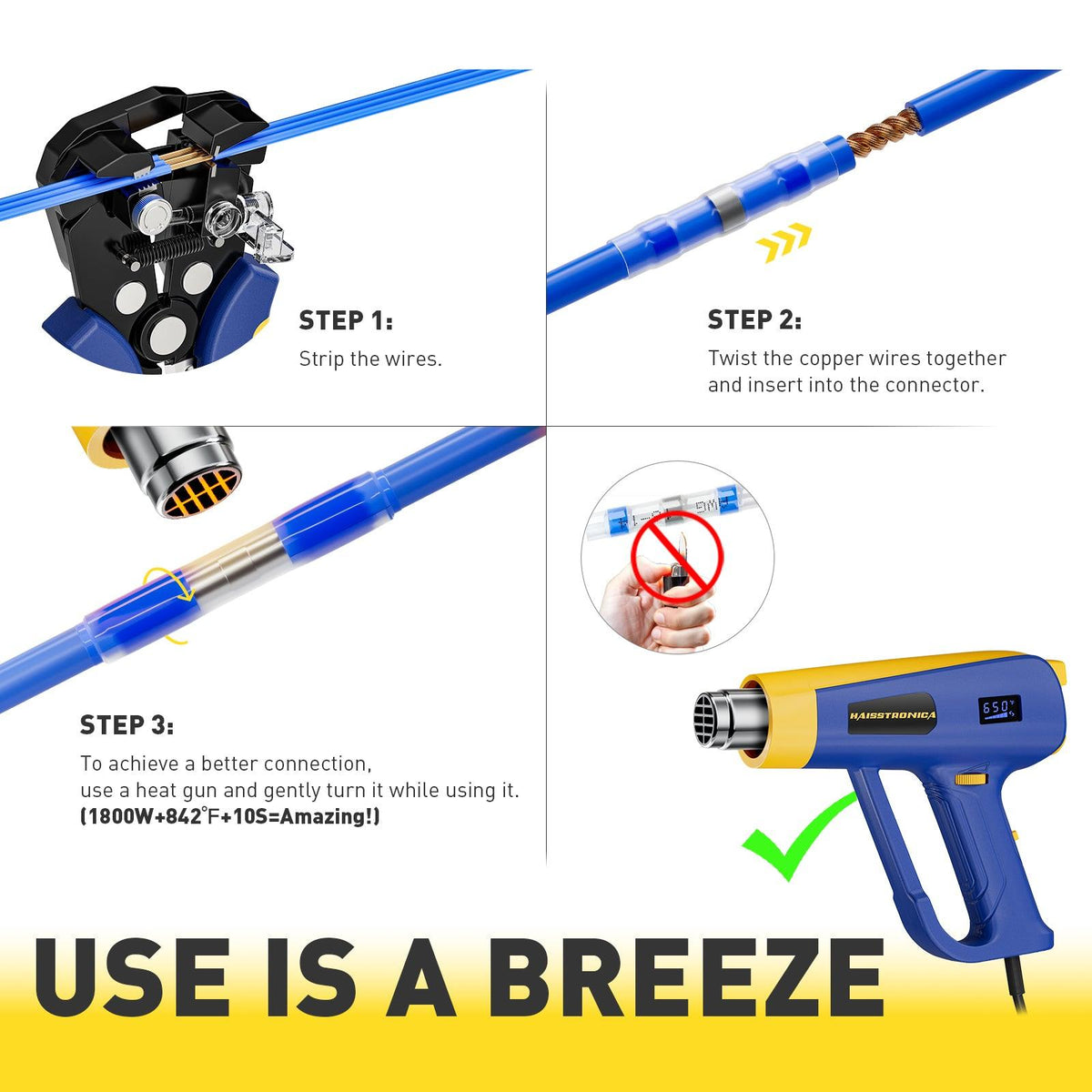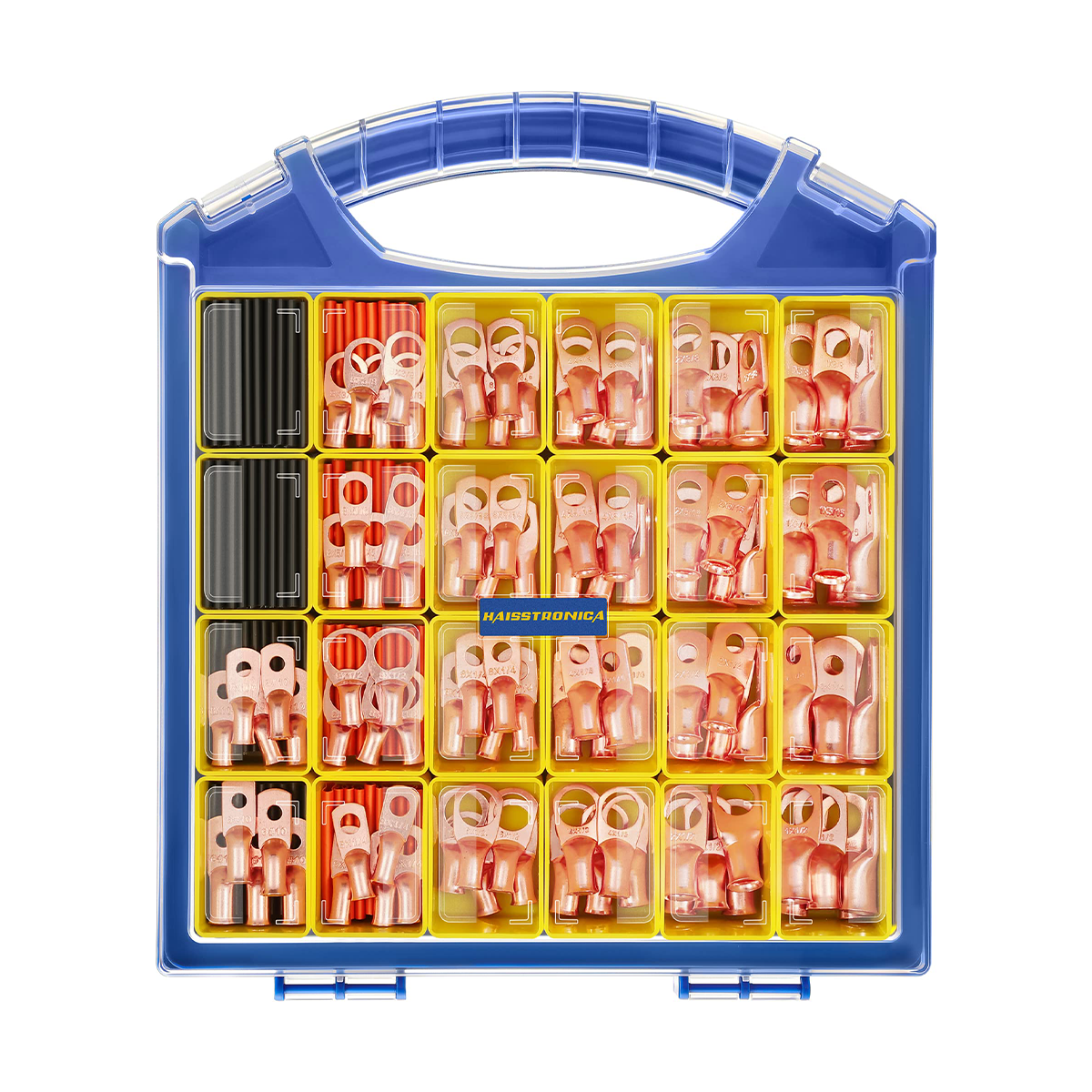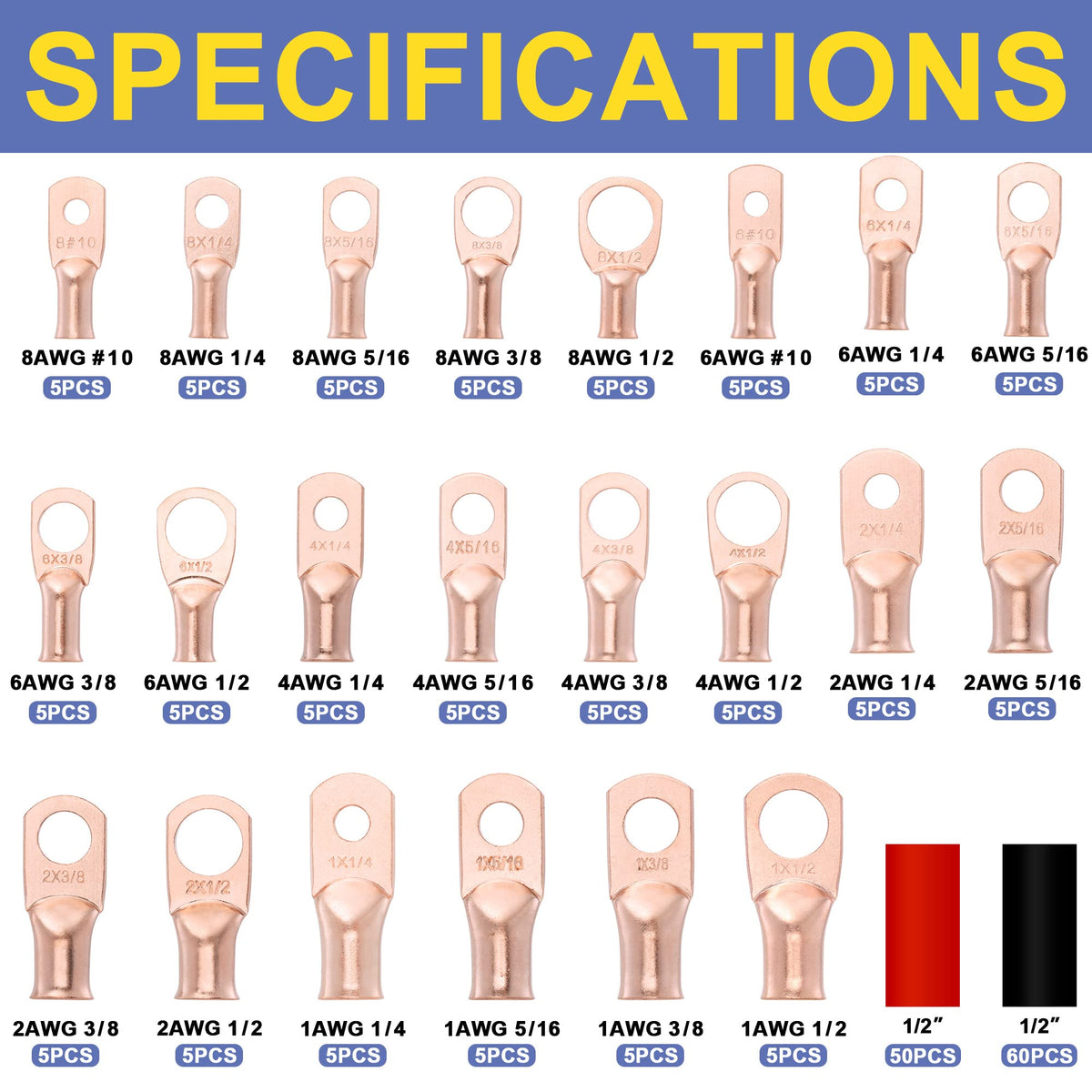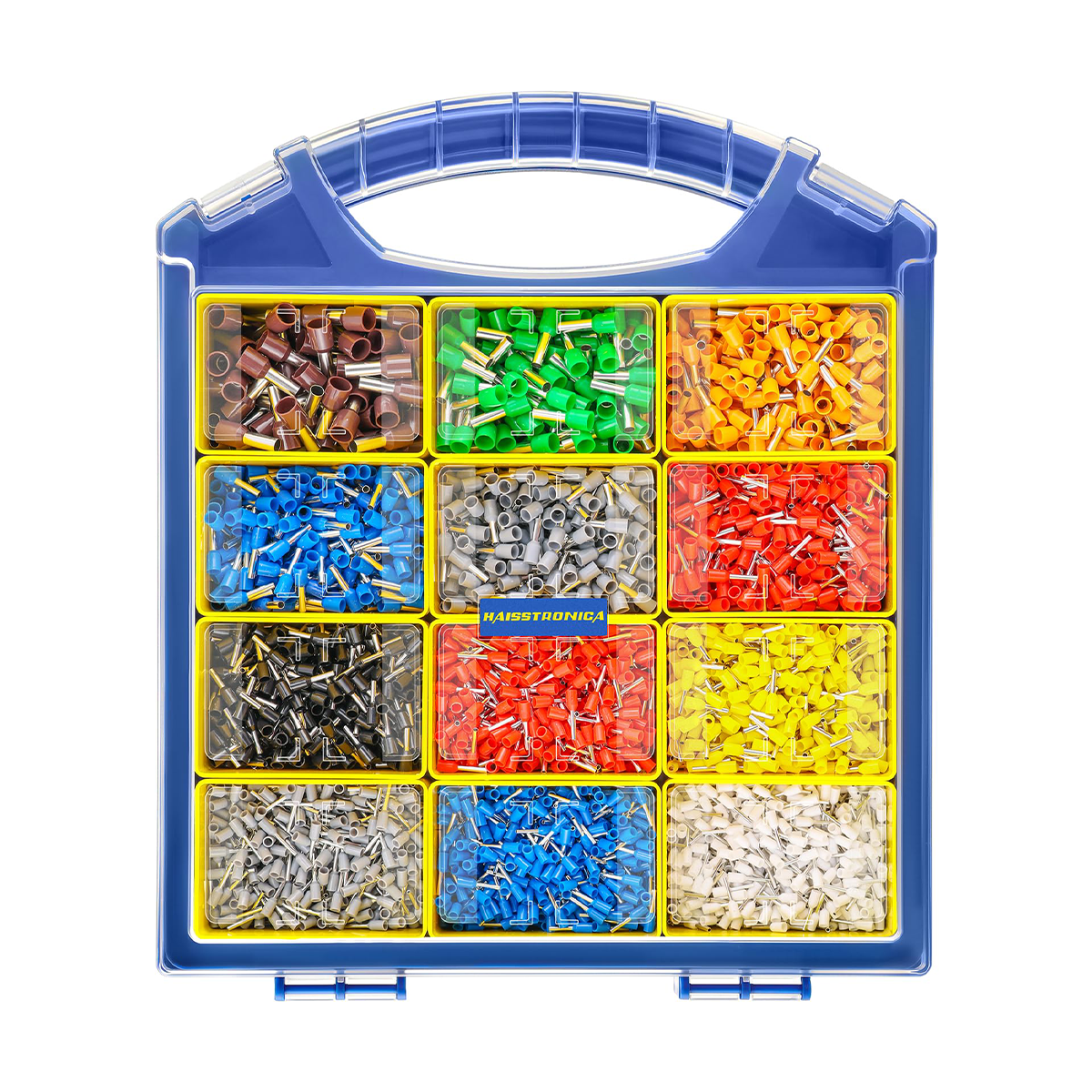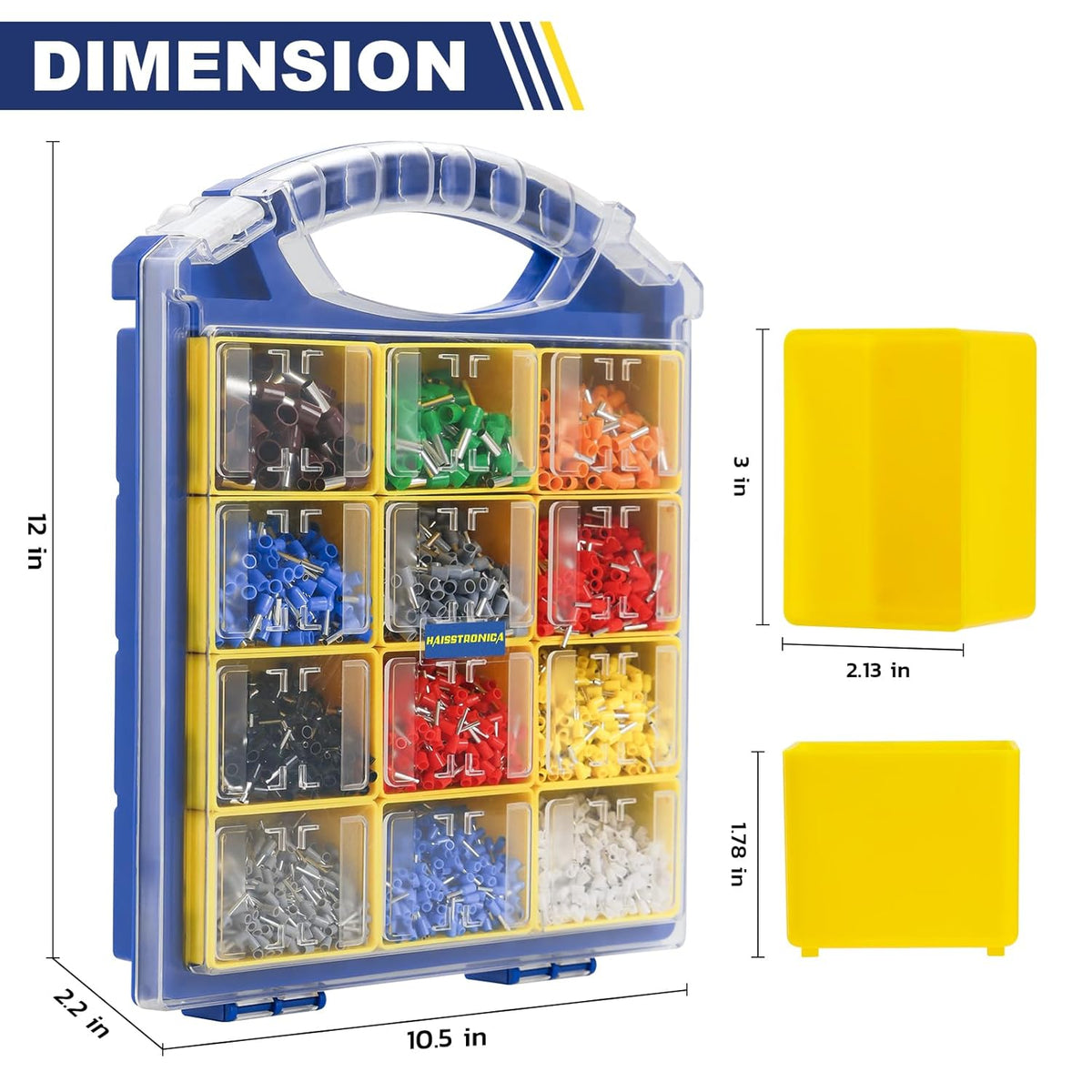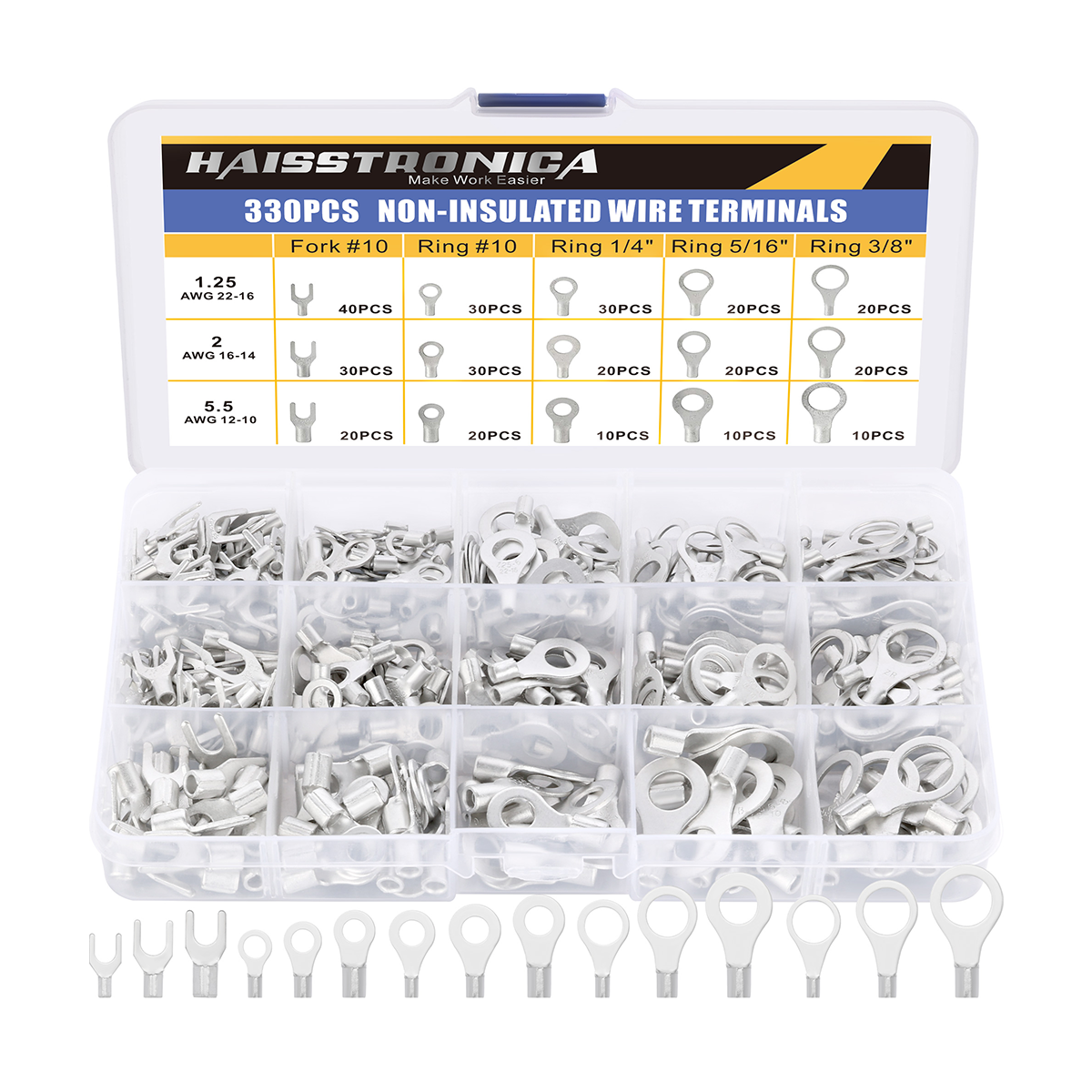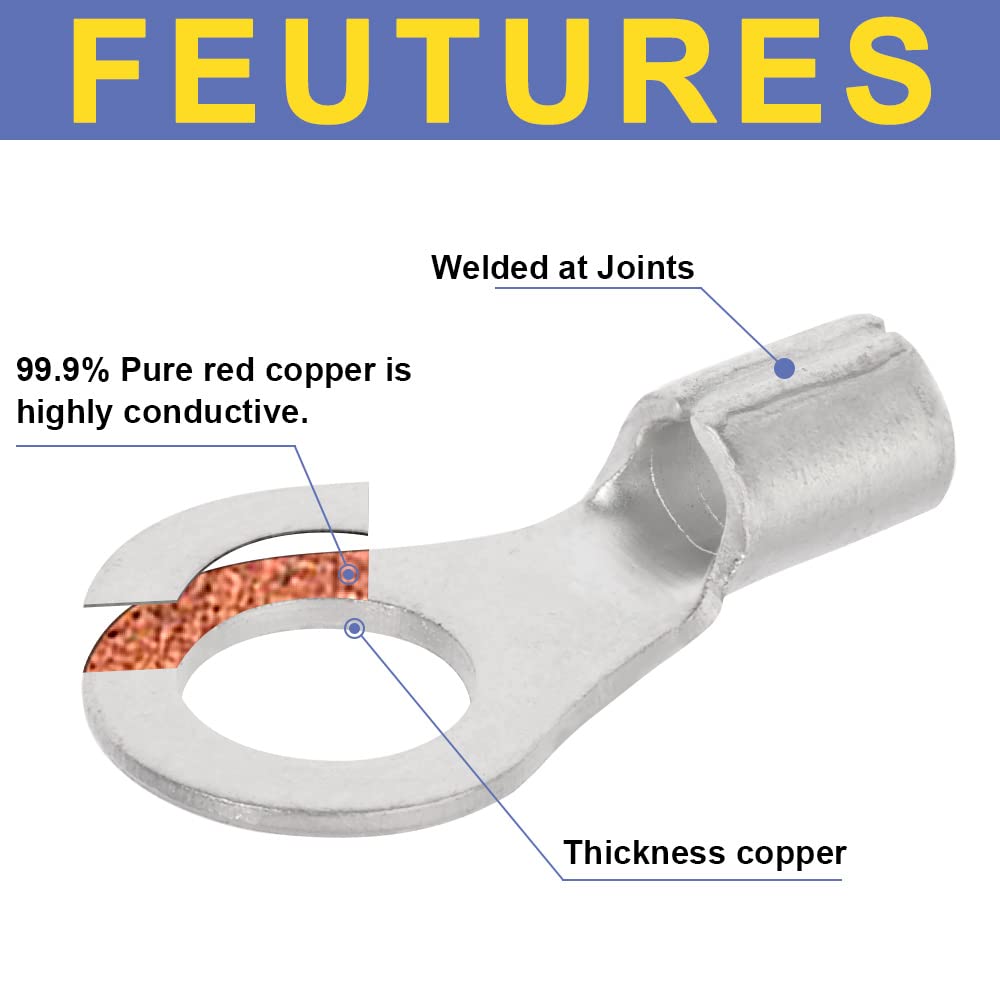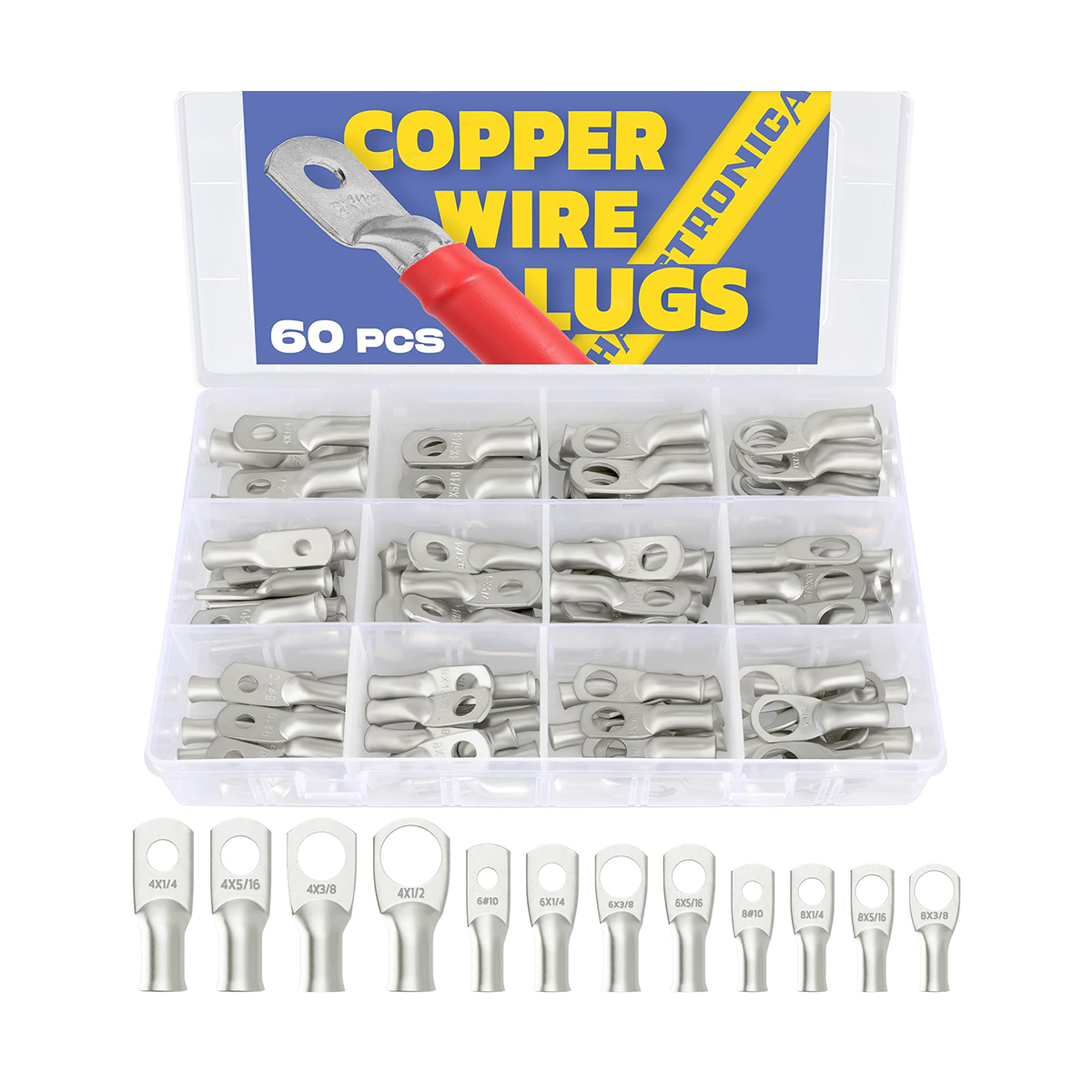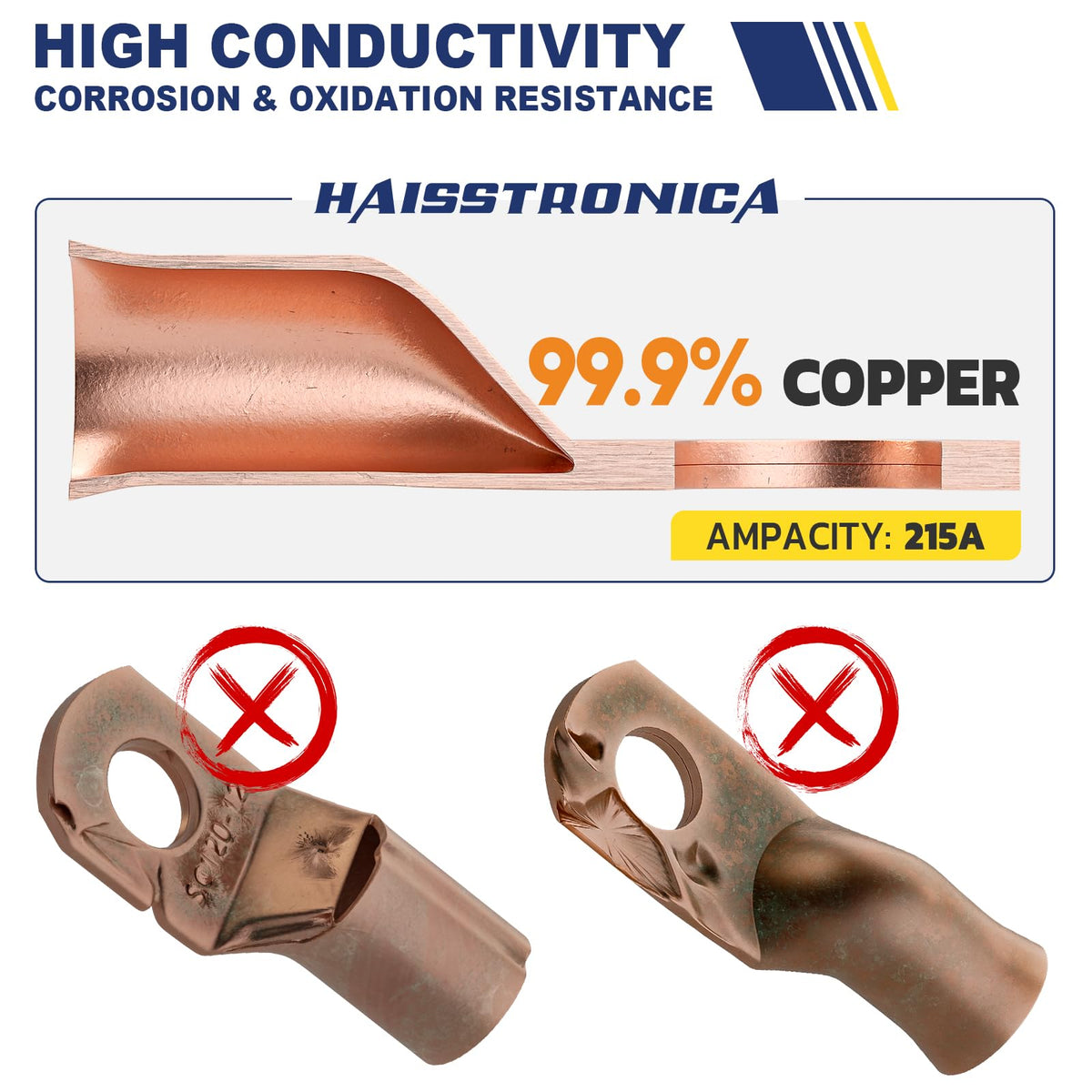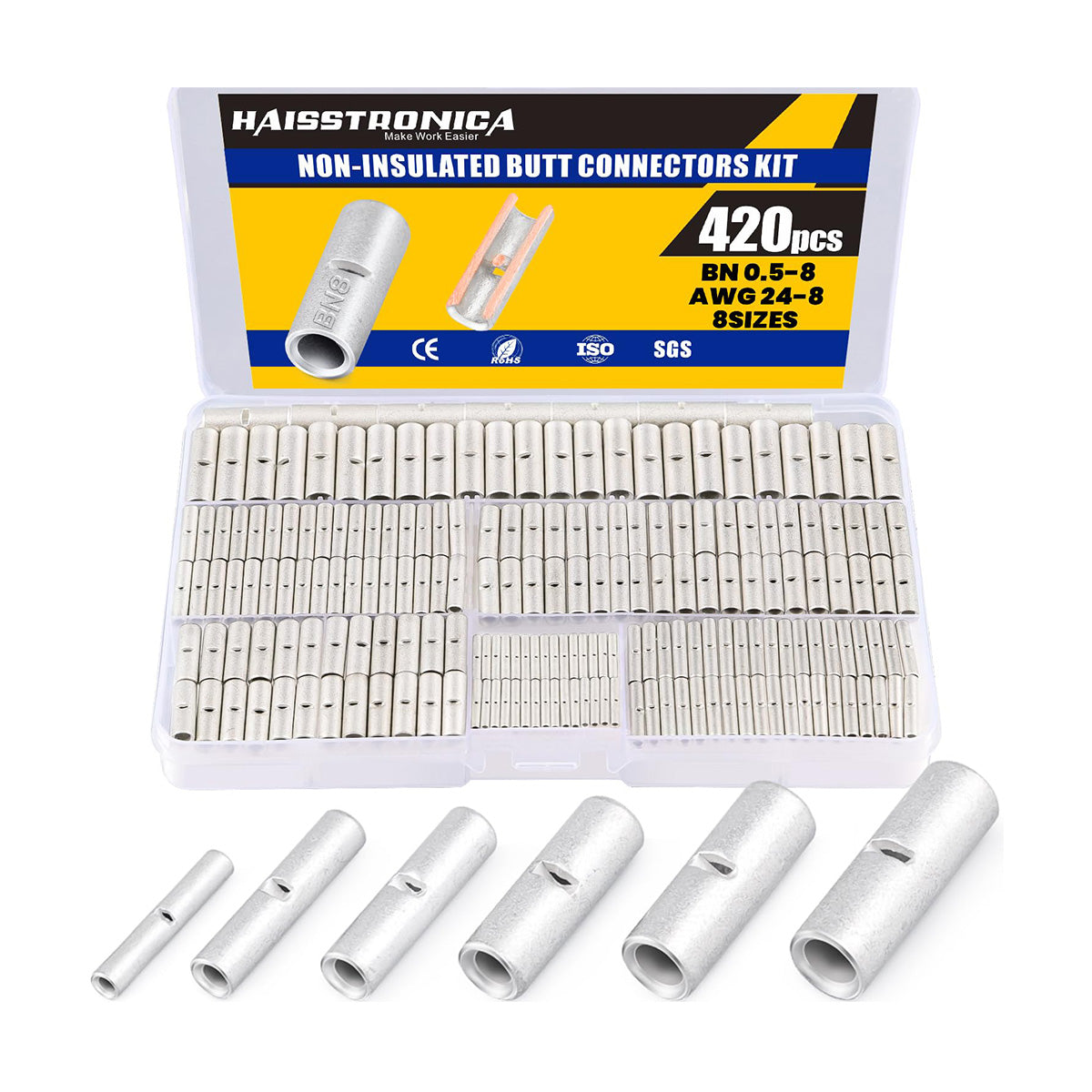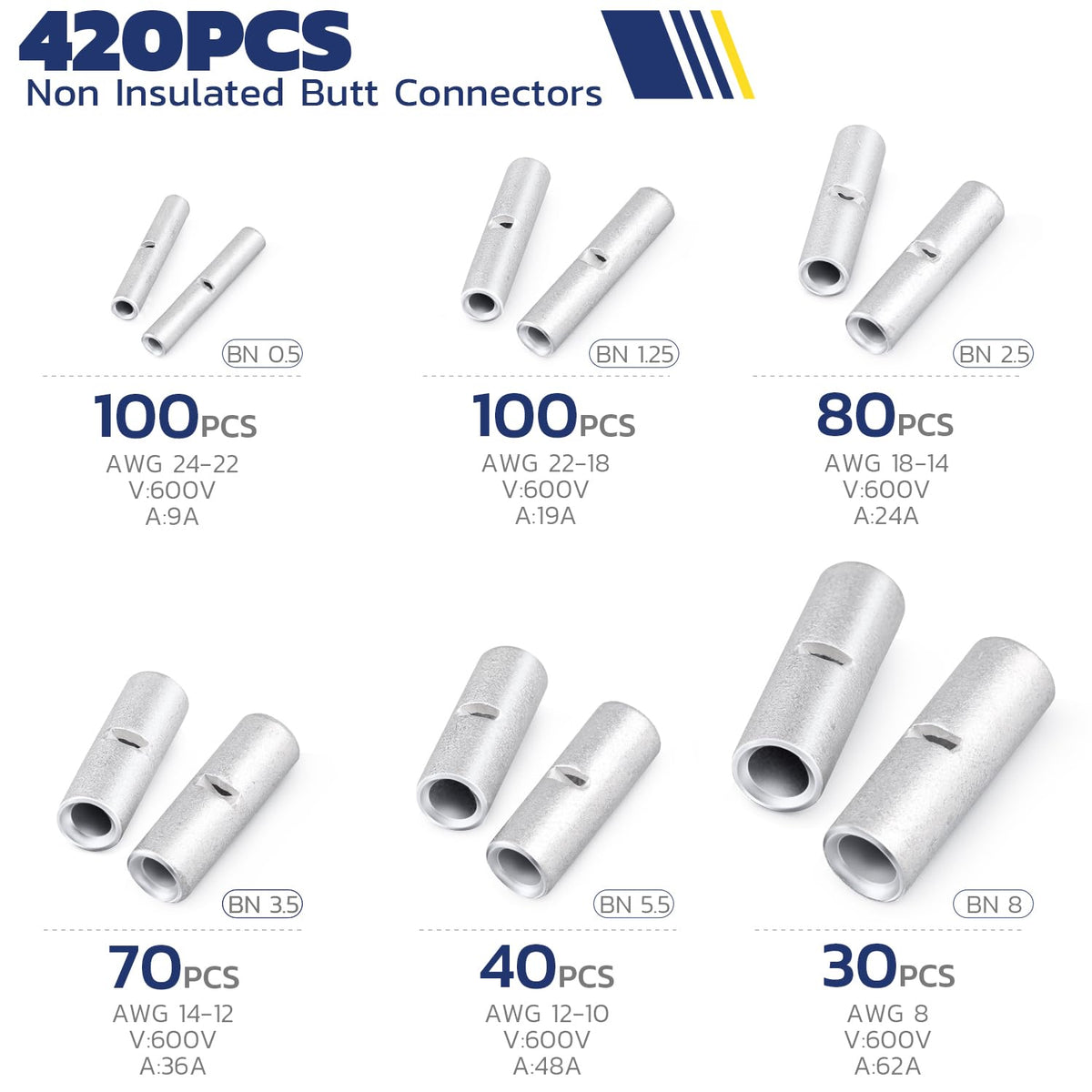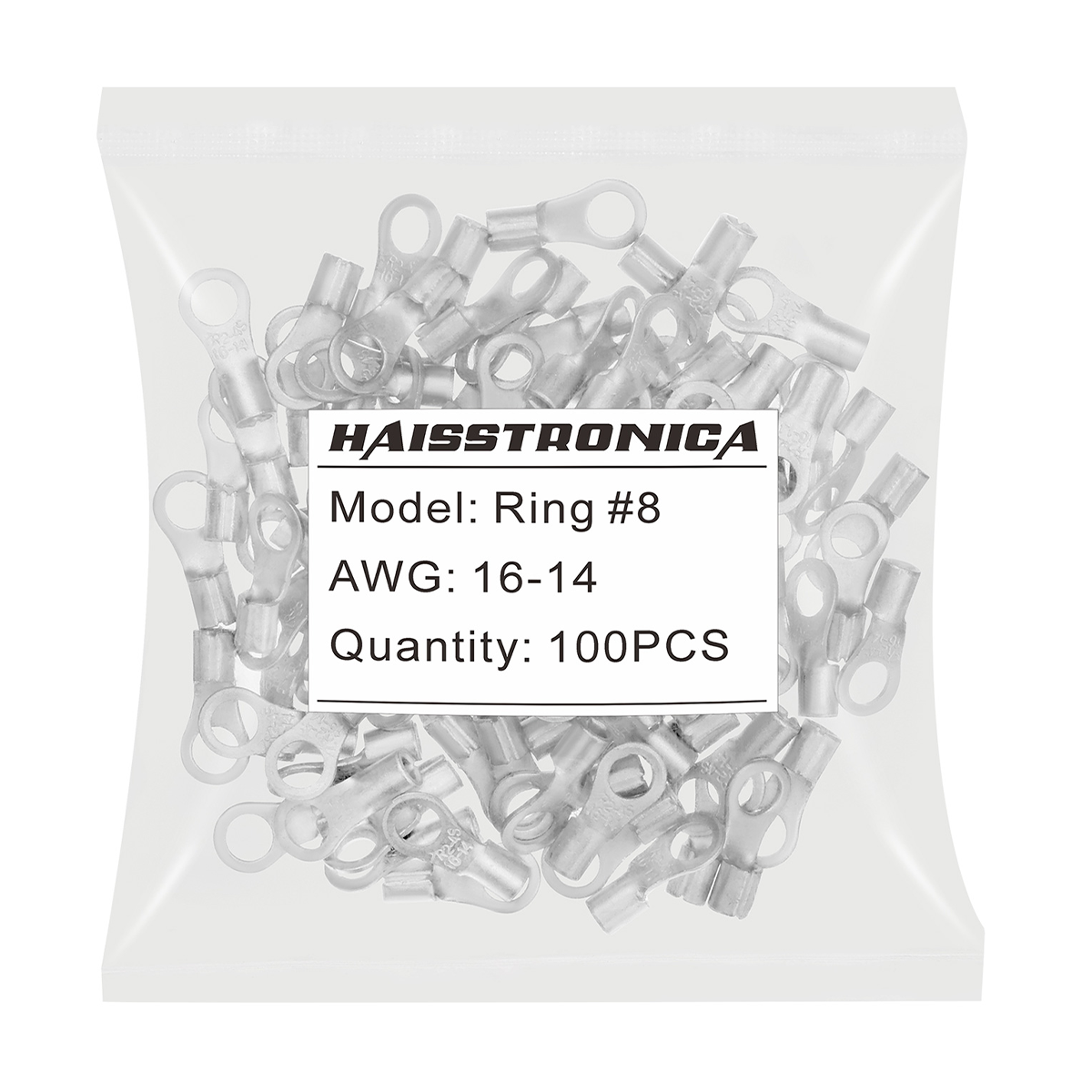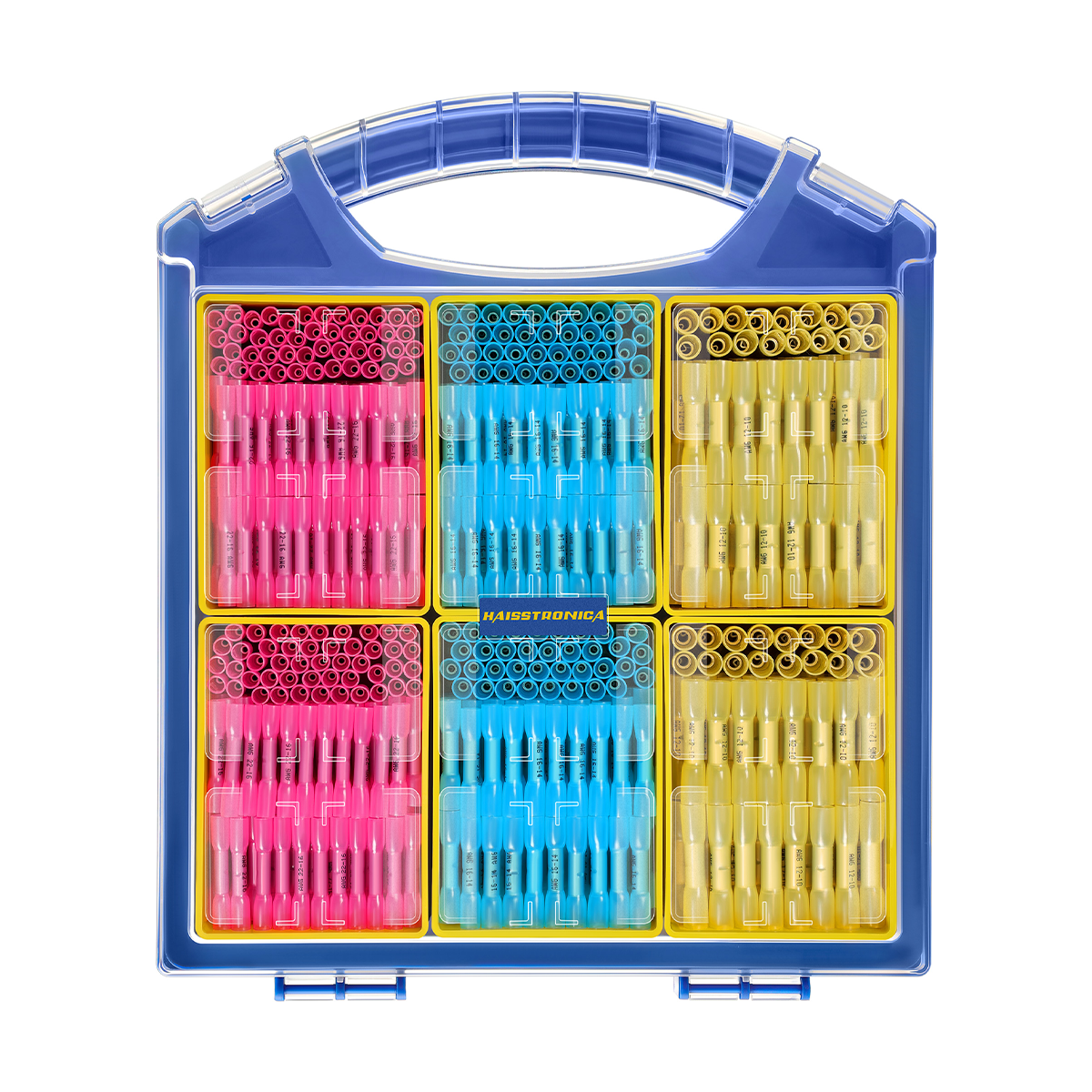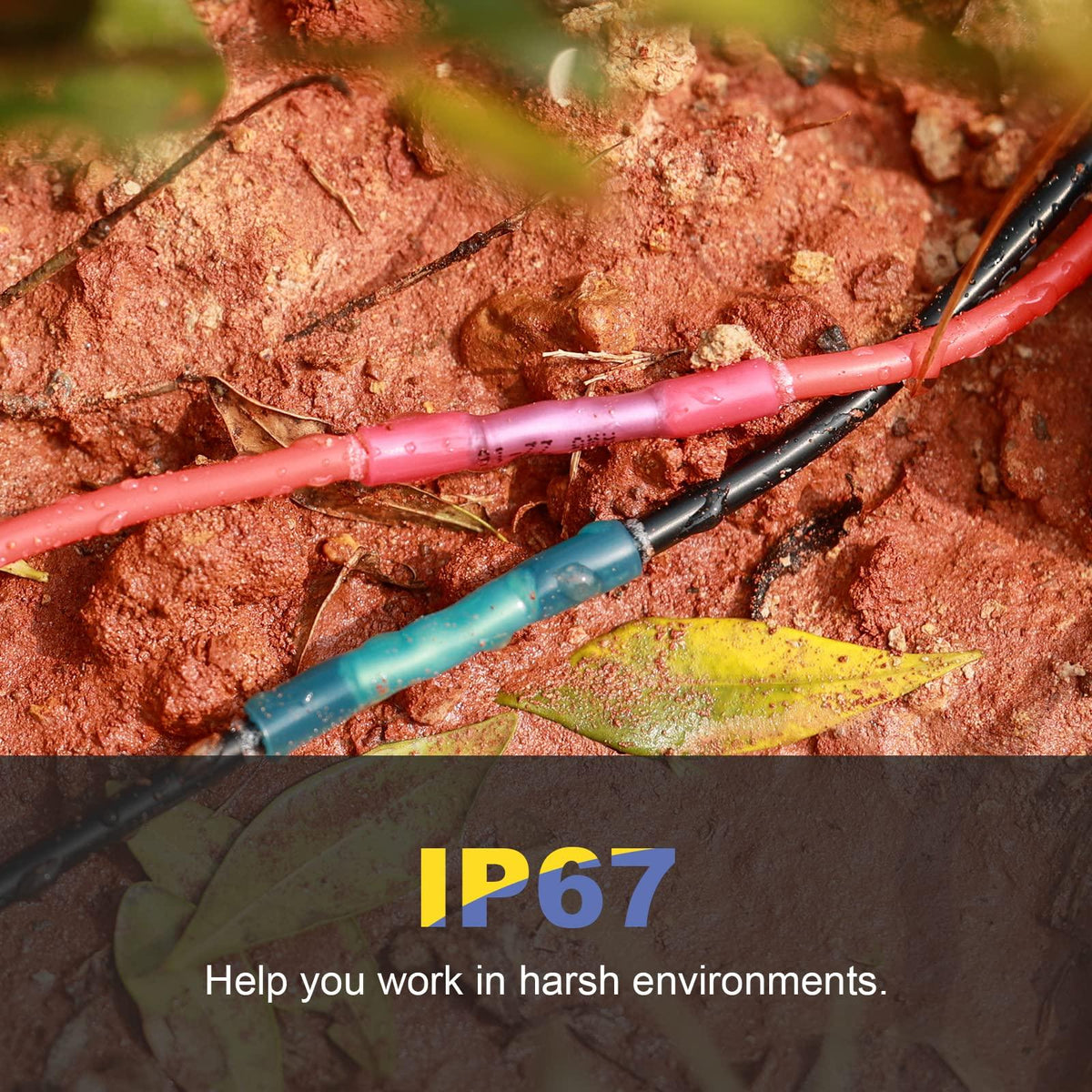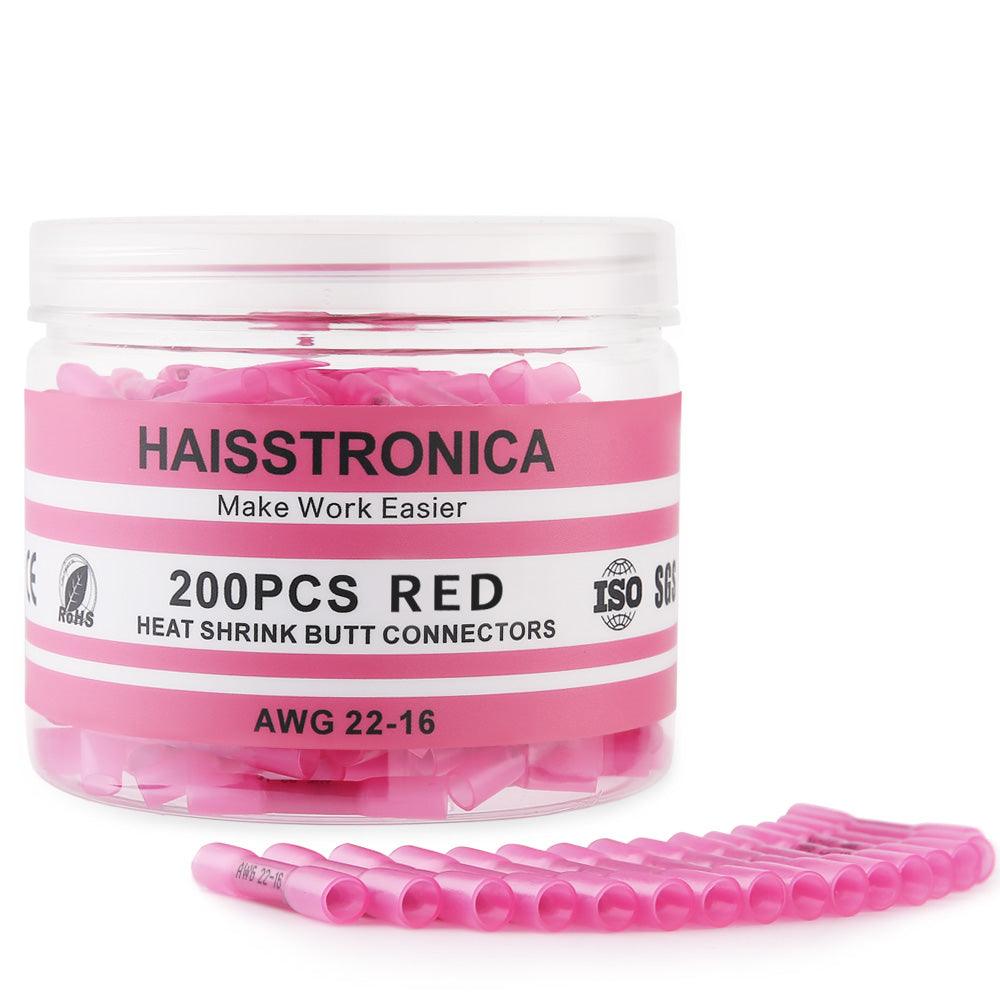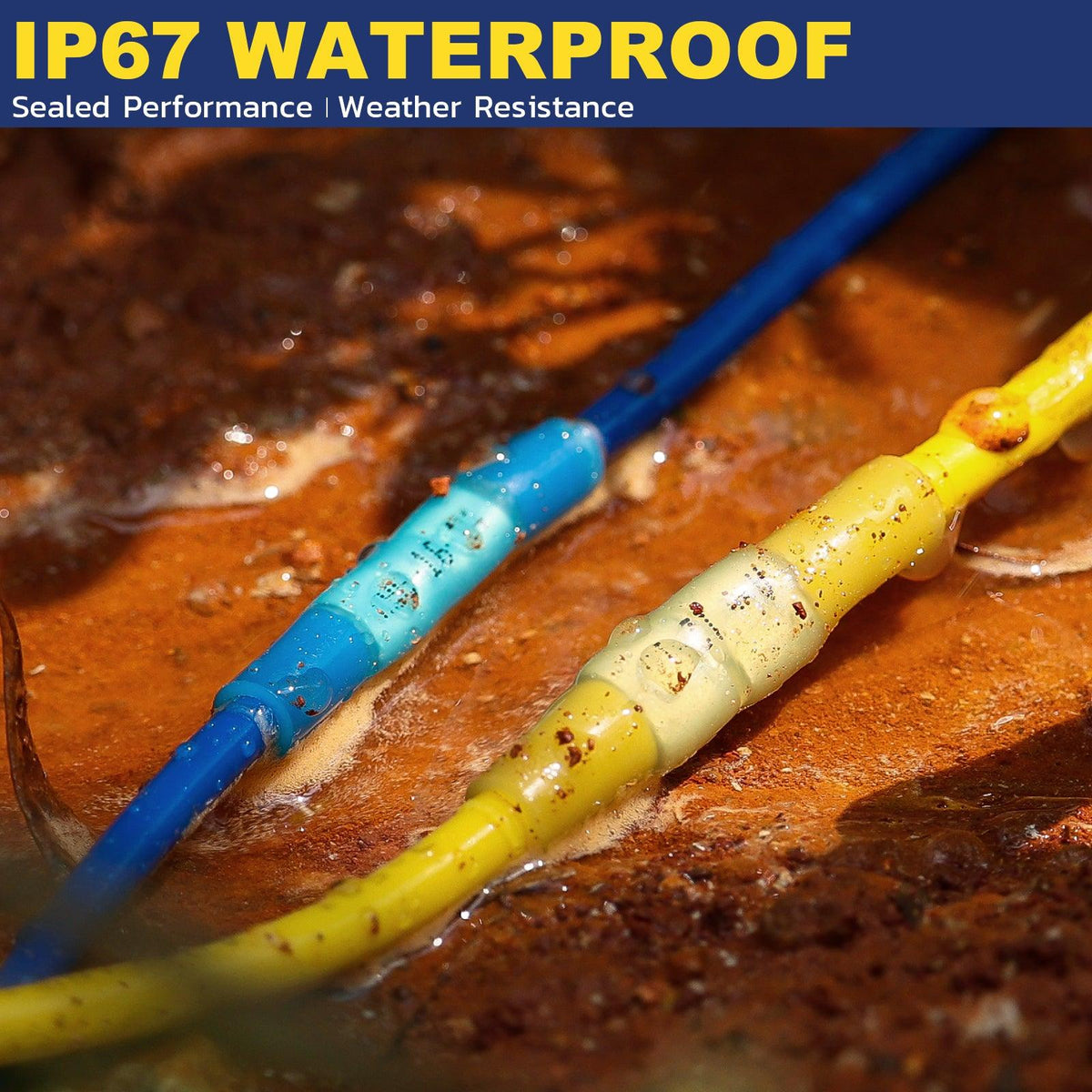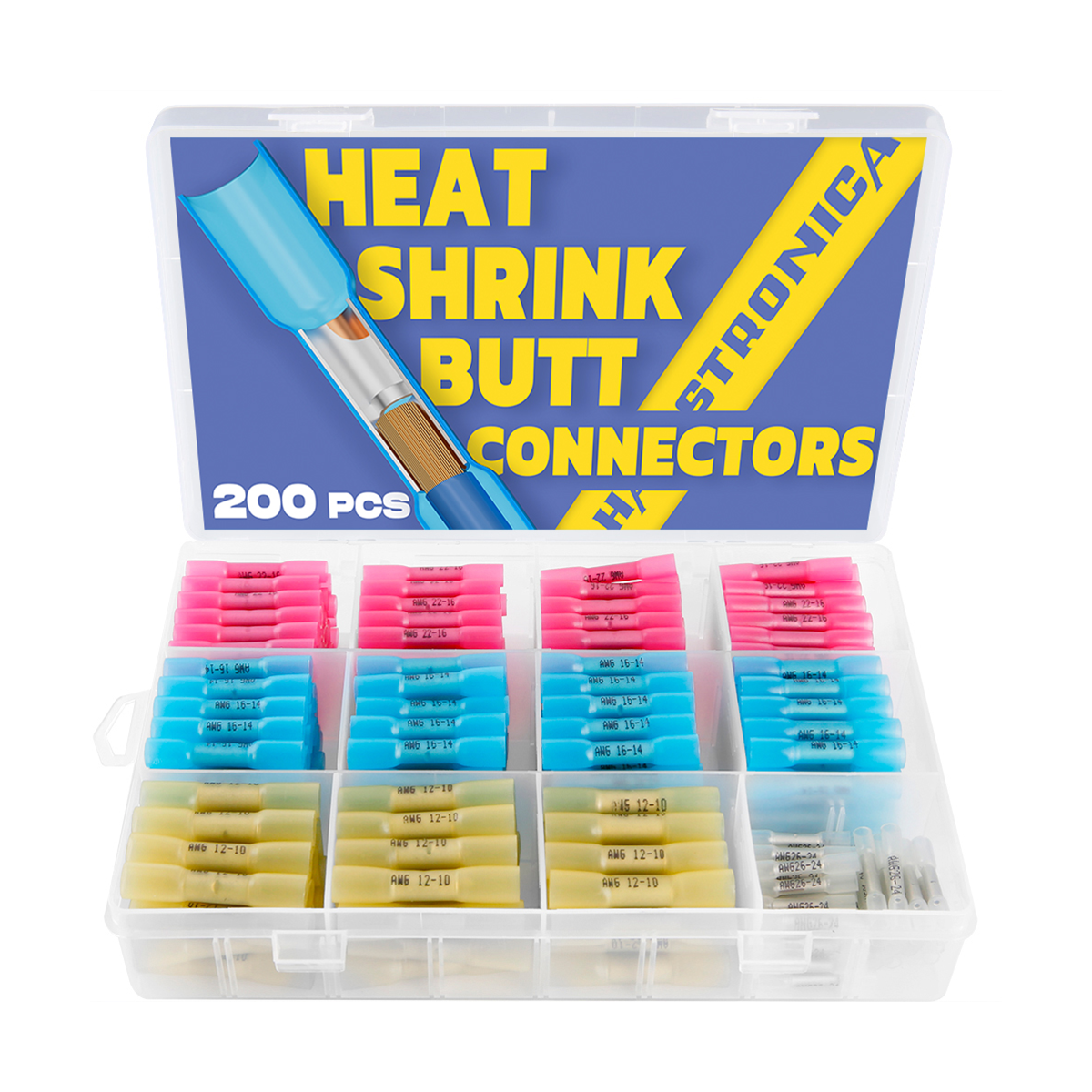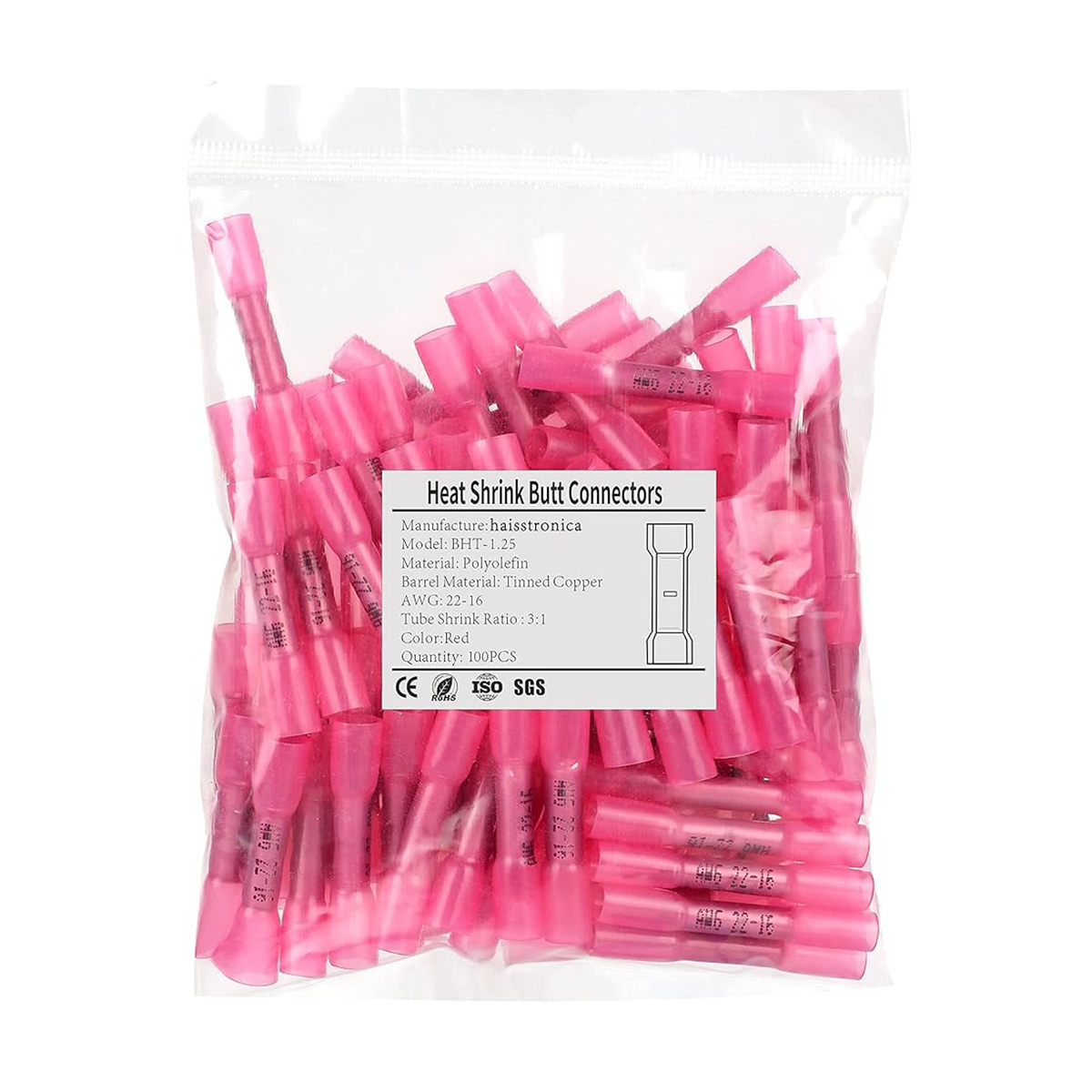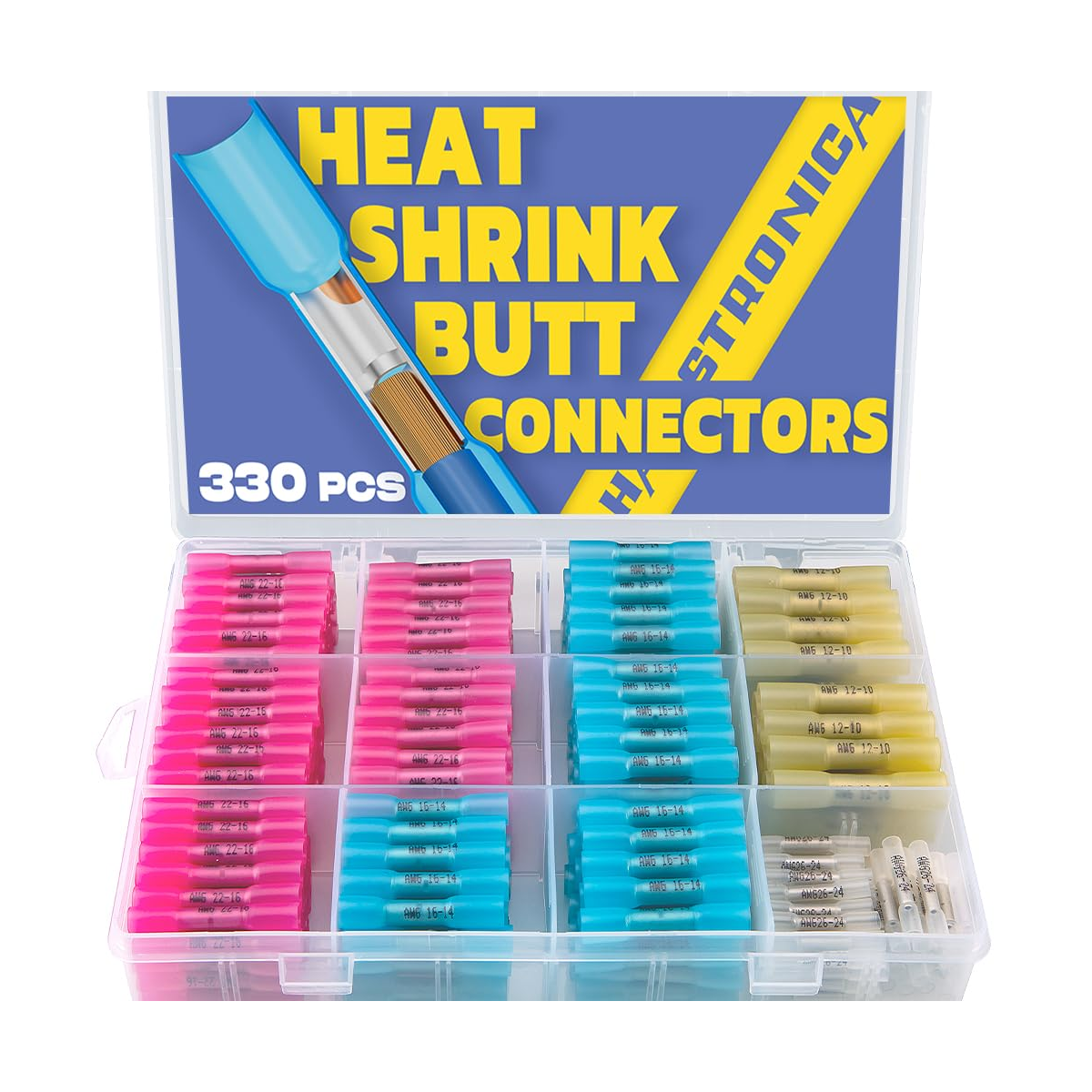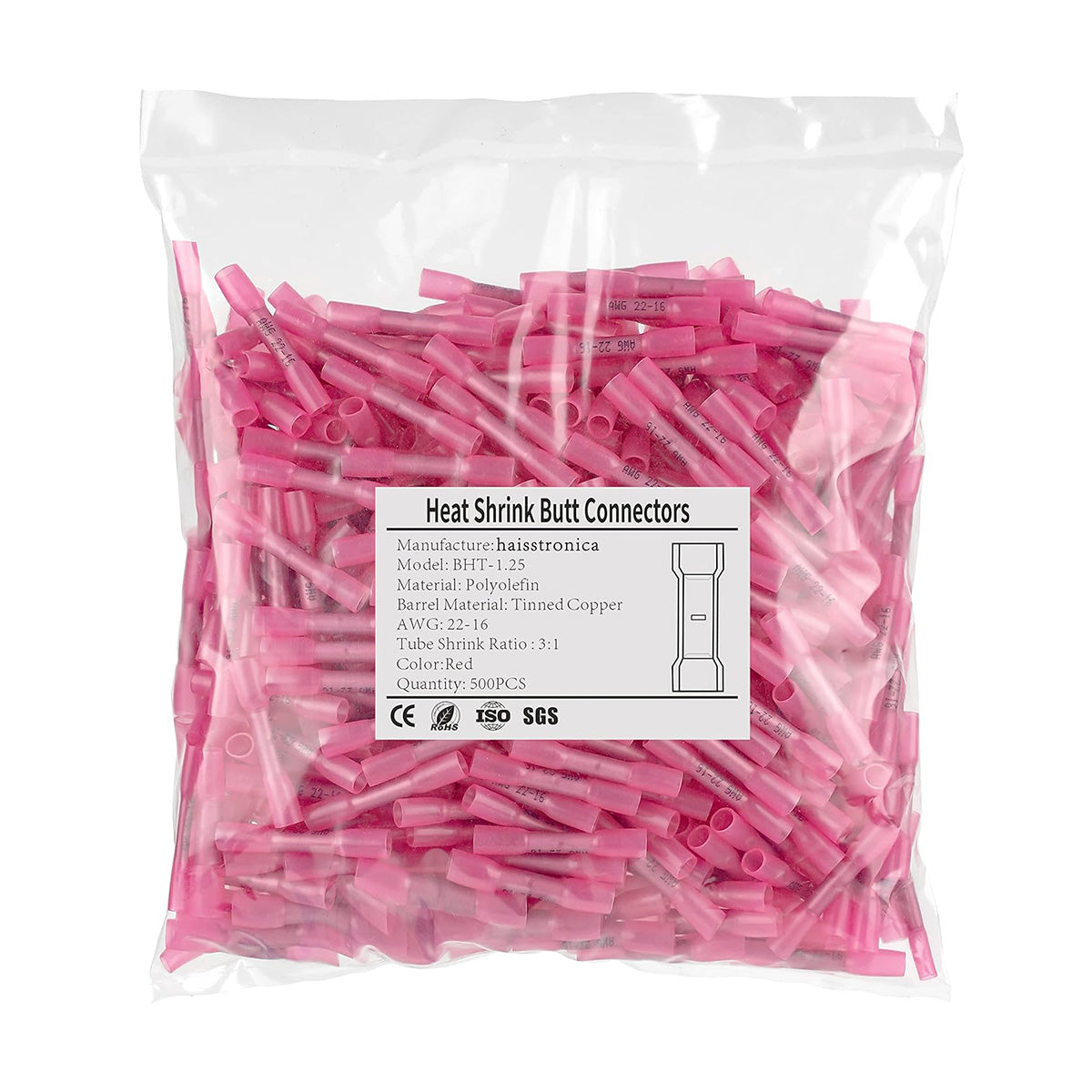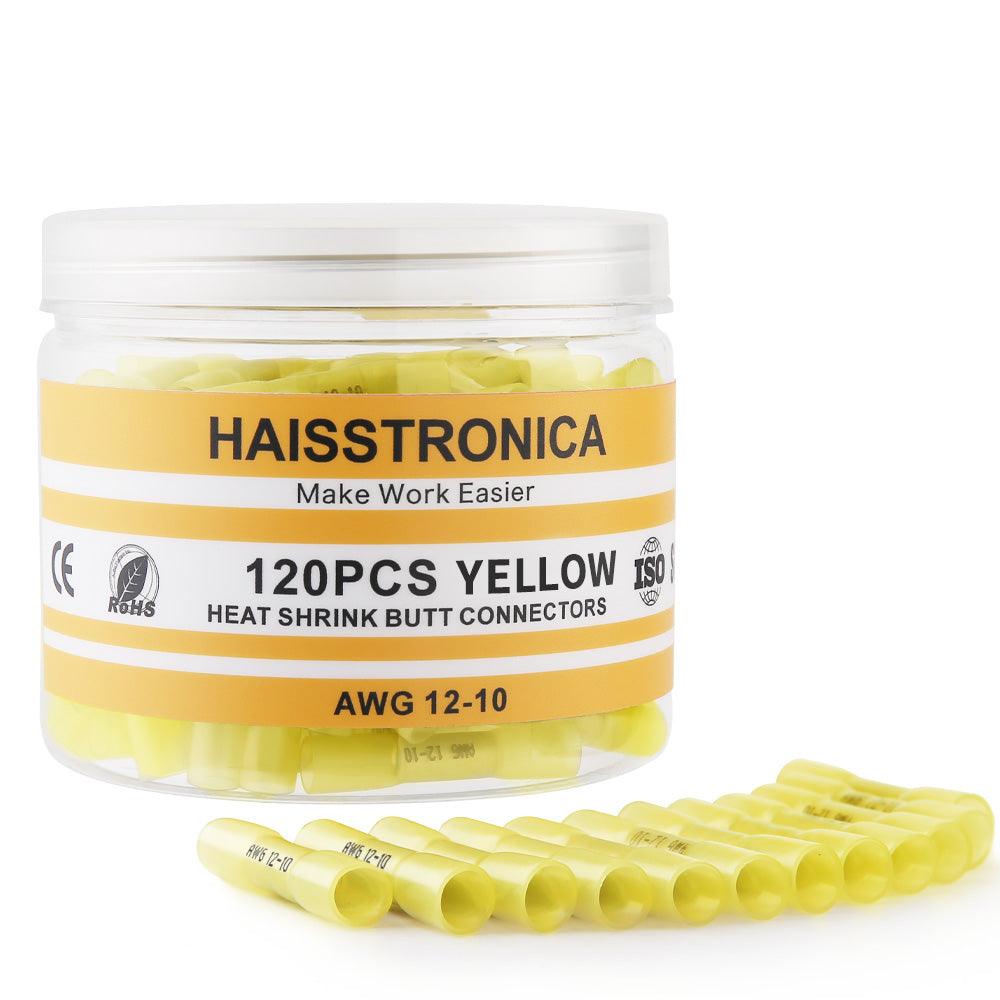Une pince à sertir à cliquet de qualité en action, réalisant un sertissage solide sur un connecteur isolé. Une utilisation correcte de la pince assure une liaison étanche entre le fil et le connecteur, pour une fiabilité maximale.
Le sertissage des fils est une compétence fondamentale pour les électriciens, les bricoleurs et les amateurs. Que vous câbliez des connecteurs électriques automobiles, des câbles domestiques ou des appareils électroniques, l'utilisation d'une pince à sertir (également appelée pince à sertir , outil de sertissage ou pince à sertir ) est souvent la meilleure façon de raccorder un fil à une borne ou une épissure. Un sertissage correct crée une sorte de soudure à froid : le connecteur et le fil sont comprimés si étroitement que les métaux fusionnent pour former une connexion mécaniquement et électriquement sécurisée. Il en résulte une jonction étanche aux gaz, résistante à l'oxygène et à l'humidité, prévenant ainsi la corrosion et garantissant une faible résistance à long terme. En effet, un sertissage bien exécuté peut être aussi résistant qu'une soudure, mais avec une plus grande résistance aux vibrations. Dans ce guide, nous vous expliquerons étape par étape comment sertir un fil pour des connexions durables, nous aborderons les différents types de pinces à sertir et de connecteurs (des cosses isolées standard aux pinces à sertir à embout , en passant par les pinces à sertir robustes), et nous partagerons des conseils de pro pour éviter les erreurs courantes. À la fin, vous comprendrez pourquoi les électriciens et mécaniciens professionnels utilisent des outils de sertissage pour des connexions électriques durables et comment réaliser vous-même des sertissages parfaits.
Outils et matériaux nécessaires
Avant de commencer, rassemblez les outils et le matériel appropriés. Utiliser le bon équipement est essentiel pour un sertissage réussi. Voici ce dont vous aurez besoin :
-
Fil toronné : utilisez uniquement du fil toronné pour les connecteurs à sertir. (Le fil plein n'est pas recommandé pour le sertissage, car il ne se déforme pas et ne tient pas aussi bien. En fait, les normes industrielles comme celles de la NASA interdisent explicitement le sertissage des fils pleins.) .) Assurez-vous d'avoir le calibre de fil approprié à votre application.
-
Connecteurs de fils : Choisissez des connecteurs à sertir de qualité, adaptés à votre section de fil. Parmi les types courants, on trouve les épissures bout à bout , les cosses à œillet , les cosses à fourche et les cosses à œillet . Par exemple, les épissures bout à bout servent à joindre deux extrémités de fil, tandis que les cosses à œillet permettent de fixer un fil à un goujon. Ces connecteurs sont disponibles isolés (vinyle/nylon ou isolation thermorétractable) ou non isolés. Conseil de pro : utilisez des connecteurs étamés pour résister à la corrosion et, pour les cosses isolées, choisissez des connecteurs de haute qualité dotés d'une gaine métallique interne pour maintenir l'isolant du fil (les connecteurs moins chers n'en possèdent pas, ce qui les rend moins fiables). Veillez également au codage des tailles de connecteurs :
-
Connecteurs isolés rouges : pour fils 22–16 AWG (les plus petits).
-
Connecteurs isolés bleus : pour fils 16–14 AWG (moyen).
-
Connecteurs isolés jaunes : pour fils 12–10 AWG (taille courante la plus grande).
(Ces codes couleur sont largement utilisés aux États-Unis pour les bornes à sertir isolées.)
-
-
Pince à dénuder : Un outil de dénudage dédié est essentiel pour retirer l'isolant sans endommager les brins. De nombreux électriciens préfèrent un outil de dénudage de précision ou doté de trous spécifiques pour un résultat net.
-
Coupe-câble : Si vous devez couper des fils à la longueur souhaitée ou en retirer les extrémités endommagées, utilisez un coupe-câble adapté. Cela garantit une coupe nette sans écraser le fil. Des extrémités de fil nettes et régulières s'insèrent plus facilement dans les connecteurs et se sertissent mieux.
-
Pince à sertir (pince à sertir) : C'est la pièce maîtresse. Une pince à sertir de qualité applique la pression uniforme nécessaire pour sertir les connecteurs sur les fils. Les pinces à cliquet sont fortement recommandées pour la plupart des connecteurs électriques, car elles exercent une pression constante et ne se relâchent qu'une fois le sertissage complet obtenu. Une pince à sertir à cliquet propose généralement plusieurs tailles de matrices pour différents types ou calibres de connecteurs. Assurez-vous que votre pince à sertir est compatible avec le type de connecteur et le calibre de fil que vous utilisez. Par exemple, la pince à sertir à cliquet Haisstronica pour cosses de fil (AWG 22-10) est conçue pour les connecteurs isolés et thermorétractables courants de 22 à 10 AWG ; un choix polyvalent pour la plupart des projets de bricolage et automobiles (voir notre lien interne ci-dessous). Si vous utilisez des connecteurs spécialisés comme des cosses à barillet ouvert , des cosses d'allumage ou des embouts , vous aurez peut-être besoin d'une pince à sertir spécialisée (plus d'informations à ce sujet ultérieurement).
Lien interne : Pour une solution tout-en-un, découvrez l' outil de sertissage de borne de fil à cliquet Haisstronica pour connecteurs thermorétractables AWG 22-10 - une pince à sertir à cliquet durable qui garantit un sertissage serré et uniforme à chaque fois. -
Gaines thermorétractables ou connecteurs thermorétractables (facultatif) : Si vous utilisez des bornes non isolées ou souhaitez une protection supplémentaire, utilisez des gaines thermorétractables de taille appropriée pour recouvrir la connexion sertie. De nombreux connecteurs sont isolés, mais pour les applications étanches ou marines , les connecteurs thermorétractables (avec revêtement adhésif) sont idéaux pour une étanchéité durable.
-
Pistolet thermique ou briquet (en option) : pour rétrécir les tubes ou les connecteurs thermorétractables après le sertissage.
-
Multimètre ou testeur de continuité (en option) : utile pour tester la continuité et la qualité de la connexion terminée.
-
Équipement de sécurité : Il est recommandé de porter des lunettes de sécurité lors du sertissage et de la coupe de fils. Assurez-vous également que tous les circuits sont hors tension pendant vos travaux.
Avoir ces outils et matériaux prêts rendra le processus de sertissage fluide et garantira la création d'une connexion fiable.
Étape par étape : comment sertir un fil efficacement
Examinons le processus de sertissage d'un connecteur de fil isolé standard (par exemple, la fixation d'une cosse à anneau ou d'une épissure bout à bout). Les mêmes étapes générales s'appliquent à la plupart des travaux de sertissage . Assurez-vous que le type et la taille du connecteur correspondent au calibre du fil et utilisez la matrice appropriée sur votre outil de sertissage .
-
Préparez le fil : Commencez par couper le fil à la longueur souhaitée à l’aide d’une pince coupante. Dénudez ensuite une partie de l’isolant à l’extrémité du fil à l’aide d’une pince à dénuder. Dénudez environ 6 à 8 mm d’isolant (ou selon les spécifications du fabricant du connecteur), juste assez pour que le fil nu remplisse le corps métallique du connecteur. Veillez à ne pas entailler ni couper les brins. Des brins entaillés peuvent fragiliser la connexion ou provoquer une rupture ultérieure du fil. Après le dénudage, si le fil est toronné, torsadez délicatement les brins entre vos doigts pour former un faisceau serré. Cela facilite l'insertion et garantit que tous les brins sont bien saisis par le sertissage. (Rappel : pour un résultat optimal, utilisez du fil toronné, et non du fil plein, pour les connecteurs à sertir.)
-
Choisissez le connecteur adapté : Choisissez un connecteur à sertir adapté à votre section de fil et à votre application. Par exemple, pour raccorder deux fils bout à bout, utilisez un connecteur bout à bout ; pour ajouter un fil à une borne à goujon ou à vis, utilisez une cosse à œillet ou à fourche. Vérifiez le calibre du connecteur (généralement imprimé sur l'emballage ou sur le connecteur lui-même pour les bornes non isolées). Si vous utilisez des connecteurs isolés, la couleur (rouge, bleu, jaune) doit correspondre au calibre du fil, comme indiqué précédemment. Ne forcez jamais un fil dans un connecteur sous-dimensionné et n'utilisez jamais un connecteur surdimensionné mal ajusté ; ces erreurs peuvent entraîner un sertissage faible. Le fil doit s'insérer facilement dans le corps du connecteur, sans occuper trop d'espace. Si vous utilisez un connecteur thermorétractable , assurez-vous que la gaine thermorétractable (si elle est pré-fixée) est bien réinsérée sur le fil, loin de la zone de sertissage.
-
Insérer le fil dans le connecteur : Insérez complètement l’extrémité dénudée du fil dans le corps du connecteur. Pour une épissure bout à bout, insérez-la jusqu’à ce que l’extrémité dénudée soit à peu près centrée dans l’épissure (ou jusqu’à ce qu’elle bute contre le fil de l’autre côté si vous épissez deux fils). Pour une cosse à anneau ou à fourche, insérez-la jusqu’à ce que l’isolant du fil touche le corps métallique et que tous les brins de cuivre soient à l’intérieur. Idéalement, une infime partie de l’extrémité dénudée du fil soit visible de l’autre côté de la fenêtre d’inspection ou de l’extrémité du corps, ce qui indique que le fil est bien inséré. Aucun fil dénudé ne doit être exposé à l’extérieur du connecteur , à l’exception peut-être d’une petite trace à l’extrémité. Assurez-vous également qu’aucun brin ne dépasse ; tous les brins doivent être à l’intérieur du corps. Si un ou deux brins dépassent du corps, retirez le fil, retordez-le et réinsérez-le, car ces brins libres pourraient réduire la conductivité ou créer un court-circuit.
-
Positionnement du connecteur dans la pince à sertir : Ouvrez les mâchoires de votre pince à sertir et placez le connecteur (fil inséré) dans la fente prévue à cet effet. La plupart des pinces à sertir manuelles possèdent plusieurs encoches/matrices pour différentes tailles ou types de connecteurs. Pour les cosses isolées, de nombreuses pinces à sertir sont munies d'étiquettes couleur sur les matrices (connecteur rouge avec matrice rouge, bleu avec bleu, jaune avec jaune). Pour les cosses non isolées, utilisez la matrice correspondant au calibre de fil correspondant. Alignez le connecteur de manière à ce que l'empreinte de la pince à sertir (la « dent ») s'insère correctement dans le corps du connecteur. Conseil : Si votre connecteur présente une couture, positionnez-le de manière à ce que l'empreinte de la pince à sertir s'insère du côté opposé à la couture (cela évite que la couture ne s'ouvre). Maintenez le connecteur en place dans la matrice et assurez-vous que le fil n'a pas glissé pendant le positionnement.
-
Sertissage du connecteur : Serrez fermement et régulièrement les poignées de l'outil de sertissage. Si vous utilisez une pince à cliquet , le cliquet se resserrera à mesure que vous serrez ; appuyez sur les poignées jusqu'à ce que le cliquet se termine et se relâche automatiquement. Cela garantit une compression complète. Si vous utilisez une pince sans cliquet, appliquez une forte pression (serrez à deux mains si nécessaire) pour déformer complètement le connecteur sur le fil. L'objectif est de déformer plastiquement le corps du connecteur autour des brins du fil, créant ainsi une liaison solide. Une fois le sertissage effectué, relâchez et retirez le connecteur de l'outil.
-
Inspecter le sertissage : Cette étape est essentielle au contrôle qualité. Inspecter visuellement que le fût du connecteur est uniformément écrasé et que l'isolant du fil est très proche du fût (pour les cosses isolées, l'isolant du fil pénètre souvent légèrement dans la gaine plastique du connecteur). Vous devriez voir une empreinte ou une entaille à l'endroit où la pince à sertir a comprimé le connecteur. Vérifier que le fil est bien fixé : tirer légèrement dessus ; il ne doit pas se détacher du connecteur si le sertissage est correct. S'il glisse ou semble lâche, le sertissage est insuffisant (dans ce cas, ne pas refaire le sertissage sur le même connecteur ; le couper et recommencer avec un nouveau connecteur). Vérifier également que le fût n'est pas fissuré et que l'isolant du connecteur n'est pas endommagé.
-
Gaine thermorétractable (le cas échéant) : Si vous avez utilisé un connecteur thermorétractable ou ajouté une gaine thermorétractable séparée, il est temps de sceller la connexion. Glissez la gaine en place (en la centrant sur le joint) et chauffez-la avec un pistolet thermique ou un briquet. Chauffez uniformément jusqu'à ce que la gaine se rétracte et que l'adhésif (s'il est thermorétractable) fonde, créant ainsi une étanchéité parfaite. La gaine doit s'ajuster parfaitement au fil et au connecteur, sans espace ni bulles. Cela assure une excellente isolation et une décharge de traction optimale, et, si elle est doublée d'adhésif, une étanchéité parfaite.
-
Test de connexion : Pour les connexions critiques, il est conseillé de tester le fil serti. Utilisez un multimètre pour effectuer un test de continuité ; la résistance doit être proche de zéro. Agitez légèrement le fil pendant le test pour vous assurer de sa stabilité. Si le circuit est soumis à un courant important, vous pouvez également effectuer un test de chute de tension sous charge pour vous assurer que le sertissage n'offre pas une résistance élevée. Dans les environnements automobiles ou soumis à des vibrations, il est conseillé de tirer et de plier le fil plus vigoureusement pour simuler une contrainte ; un sertissage correct tiendra fermement.
En suivant attentivement ces étapes, vous sertirez vos fils comme un pro. Nous aborderons ensuite quelques erreurs courantes à éviter et des conseils supplémentaires pour garantir la solidité de vos sertissages électriques.
Erreurs courantes à éviter
Même avec les bons outils et les bonnes étapes, il existe quelques pièges à éviter. Évitez ces erreurs courantes lors du sertissage des fils :
-
Utilisation d'un connecteur de mauvaise taille : Si le corps du connecteur est trop grand pour le fil, le sertissage ne se comprime pas suffisamment et le fil risque de glisser. S'il est trop petit, vous ne pourrez pas insérer complètement le fil (ou vous risquez de sectionner des brins). Veillez à toujours adapter le calibre AWG du connecteur au calibre du fil. Utilisez également la section de la matrice de l'outil de sertissage adaptée à la taille du connecteur. Une mauvaise adaptation peut entraîner un sertissage faible, susceptible de se rompre sous tension ou sous charge électrique.
-
Sertissage sur l'isolant (ou non sur le fil) : Assurez-vous que la mâchoire de l'outil de sertissage est positionnée sur le corps métallique qui maintient le fil dénudé, et non sur l'isolant du fil. Sertir sur l'isolant plutôt que sur le fil nu entraînera un contact électrique faible, voire nul. De nombreuses cosses isolées sont conçues pour serrer l'isolant comme une sorte de serre-câble, indépendamment du sertissage du conducteur. Cependant, cela se fait généralement avec un second sertissage ou une autre section du connecteur. Le premier sertissage doit être sur le conducteur. Vérifiez bien le positionnement avant d'appuyer sur l'outil.
-
Dénudage incorrect : Laisser trop d'isolant (ne laissant pas suffisamment de fil nu pénétrer dans le connecteur) ou dénuder trop (laissant du fil nu exposé au-delà du connecteur) sont deux problèmes. Dénudez la longueur adéquate pour que l'isolant du fil soit en contact avec le corps métallique du connecteur. Un dénudage excessif peut provoquer un court-circuit ou de la corrosion. Un dénudage insuffisant risque de saisir l'isolant au lieu des brins de cuivre.
-
Pression de sertissage insuffisante / Sertissage incomplet : L'un des principaux avantages des pinces à cliquet est qu'elles vous obligent à terminer le sertissage. Avec des outils sans cliquet (ou improviser avec une pince – déconseillé), il est facile de sous-sertir (arrêter de serrer trop tôt), ce qui peut entraîner une connexion lâche. Sertissez toujours jusqu'à ce que l'outil ait terminé le cycle ou que vous ayez appliqué la force maximale nécessaire. Le sertissage terminé doit laisser une empreinte nette des matrices et maintenir fermement le fil. Si vous pouvez faire pivoter ou déplacer facilement le connecteur sur le fil à la main, le sertissage est trop lâche.
-
Utilisation d'un outil inapproprié : N'utilisez pas de pince, d'étau ou d' outil de sertissage non adapté à votre type de connecteur. Bien qu'il puisse écraser le connecteur, il n'appliquera souvent pas la forme ou la force adéquate. Cela entraîne des connexions peu fiables, glissantes ou présentant une résistance élevée. Chaque type de connecteur (borne isolée, borne à corps ouvert, connecteur coaxial, etc.) possède un outil de sertissage adapté pour une raison précise. Utilisez un outil de sertissage adapté à votre connecteur. Évitez également les pinces à sertir anciennes ou usées qui ne ferment plus complètement ou uniformément.
-
Sertissage de fils soudés ou massifs : Comme indiqué précédemment, n'étamez pas (soudez) les brins avant le sertissage et évitez de sertir des fils massifs. Les fils soudés sont en réalité moins adaptés au sertissage, car la soudure les rigidifie et les rend sujets au fluage à froid sous pression, ce qui entraîne un mauvais serrage à long terme. En effet, les directives officielles interdisent le sertissage de fils étamés. De même, un fil plein se déforme moins bien qu'un fil toronné, ce qui entraîne une mauvaise tenue. Privilégiez le fil toronné nu pour tous les connecteurs à sertir : il se formera à froid dans le sertissage et tiendra bien mieux.
-
Réutilisation des connecteurs : Les connecteurs à sertir sont généralement à usage unique. Une fois serti sur un fil, un connecteur est déformé de manière permanente et ne doit pas être réutilisé ni ressertifié sur un nouveau fil. Réutiliser un connecteur serti peut entraîner une connexion très peu fiable (et il est souvent impossible de retirer l'ancien fil sans l'endommager). Si vous ratez un sertissage ou devez modifier un élément, coupez-le et utilisez un connecteur neuf. C'est une garantie économique pour une connexion fiable. (De même, n'essayez pas de ressertifier une connexion dont le test a été concluant ; recommencez avec un nouveau connecteur.)
-
Matériaux bon marché ou de mauvaise qualité : Tous les connecteurs et outils ne se valent pas. Faire l’impasse sur des connecteurs à sertir bon marché peut entraîner une fragilité du métal ou un placage de mauvaise qualité, rapidement sujet à la corrosion. De même, une pince à sertir fragile sans cliquet risque de ne pas appliquer une pression constante. Investissez dans des connecteurs de bonne qualité (de préférence en cuivre étamé pour la plupart des travaux électriques) et un bon outil de sertissage. Vos connexions vous remercieront et dureront des années, voire des décennies. L’utilisation de connecteurs et d’outils de marques connues permet de garantir la conformité des spécifications de sertissage (tailles des matrices, etc.). Si vous disposez de connecteurs en kit, pensez à utiliser l’ outil de sertissage à cliquet correspondant recommandé ou fourni par le fabricant.
En évitant ces erreurs, vous réduirez considérablement les risques de mauvais sertissage. Nous aborderons ensuite quelques conseils et techniques de pro pour améliorer la durabilité de vos sertissages.
Conseils de pro pour un sertissage parfait
Même les électriciens expérimentés ont quelques astuces pour garantir un sertissage impeccable. Voici quelques conseils de pro pour améliorer vos performances :
-
Utilisez une pince à sertir à cliquet pour une meilleure uniformité : Comme indiqué précédemment, une pince à sertir à cliquet est fortement recommandée pour la plupart des travaux. Elle garantit une force de serrage optimale à chaque fois (et ne lâche pas tant que le sertissage n'est pas correctement comprimé). Cela simplifie le sertissage. Si vous réalisez plusieurs connexions, une pince à sertir à cliquet vous donnera des résultats plus uniformes et réduira la fatigue de la main par rapport à une pince sans cliquet qui serre à fond à chaque fois.
-
Graisse diélectrique pour automobile/marine : Lors de la réalisation de connexions électriques sur des équipements automobiles, marins ou extérieurs, pensez à appliquer une petite quantité de graisse diélectrique sur le fil et le connecteur avant le sertissage (ou directement dans le corps du connecteur). Cette graisse à base de silicone est non conductrice, mais elle prévient l'infiltration d'humidité et la corrosion à l'intérieur du sertissage. Certains professionnels en appliquent également une petite quantité avant de sceller un connecteur thermorétractable. (Notez toutefois que si vous utilisez un connecteur thermorétractable avec revêtement adhésif, un ajout de graisse n'est généralement pas nécessaire.)
-
Double sertissage sur fûts longs : Si vous utilisez des cosses à fût long ou des connecteurs d'épissure (fréquents avec les cosses de gros calibre), vous pouvez effectuer deux sertissages : un à chaque extrémité du fût, pour garantir la sécurité de la connexion. Certains fûts longs sont même marqués pour plusieurs sertissages. Suivez les instructions du connecteur.
-
Étiquetage ou codage couleur du câblage : La qualité du sertissage n'est pas essentielle, mais pour une maintenance à long terme, il est judicieux d'étiqueter vos fils ou d'utiliser des connecteurs (ou des cosses) de couleur pour indiquer certaines fonctions (par exemple, rouge pour le positif, noir pour le négatif dans les systèmes CC). De nombreux connecteurs à sertir sont codés par couleur selon leur taille, mais vous pouvez également utiliser ce code couleur à votre avantage pour organiser vos opérations. Cela facilite le dépannage ultérieur.
-
Exercice sur un fil de récupération : Si vous débutez en sertissage ou utilisez un nouvel outil/type de connecteur pour la première fois, effectuez un ou deux essais de sertissage sur des fils et connecteurs de récupération. Inspectez ensuite votre travail en coupant éventuellement la connexion sertie en deux pour en visualiser la section. Vous constaterez rapidement si la compression est optimale et vous comprendrez l'aspect interne d'un sertissage correct. Ce test peut vous éviter une mauvaise connexion lors de votre projet.
-
Test de traction à chaque sertissage : Prenez l'habitude d'effectuer un test de traction rapide sur chaque connexion sertie juste après le sertissage (comme décrit dans les étapes). Il est préférable de retirer un connecteur maintenant, pour pouvoir le refaire, plutôt que plus tard, une fois l'assemblage en service. Un sertissage solide doit supporter une traction raisonnable, équivalente à la résistance à la traction du fil, sans se détacher. Si ce test est réussi, il est peu probable qu'il tombe en panne en service normal.
-
Utilisez une gaine thermorétractable pour une meilleure décharge de traction : Même si vos connecteurs sont isolés, l'ajout d'une couche supplémentaire de gaine thermorétractable à la jonction du fil et du connecteur peut améliorer la décharge de traction et l'isolation. Ceci est particulièrement utile pour les connexions soumises à des mouvements, des vibrations ou exposées aux intempéries. En superposant la gaine de manière à recouvrir à la fois le connecteur et une partie de l'isolant du fil de chaque côté, vous créez une transition harmonieuse qui soutient le fil.
-
Outil adapté au connecteur : Gardez à l’esprit que les connecteurs spécialisés (dont nous parlerons plus loin) nécessitent souvent leurs propres pinces à sertir . N’essayez pas de les forcer avec une pince à sertir standard. Par exemple, les cosses de bougie d’allumage, les connecteurs coaxiaux et les connecteurs solaires MC4 nécessitent chacun un profil de sertissage spécifique. Si vous utilisez fréquemment un type de sertissage particulier (broches à corps ouvert, par exemple), il est conseillé de vous procurer l’outil approprié, ou au moins un jeu de matrices adapté à votre pince à sertir à cliquet.
-
Étalonnage périodique de l'outil : Pour les utilisateurs intensifs, sachez que les outils de sertissage, notamment ceux à cliquet, peuvent parfois se décalibrer ou que les matrices peuvent s'user. Les outils haut de gamme peuvent être équipés de réglages d'étalonnage ou de matrices de rechange. Si vous constatez que vos sertissages ne sont plus aussi serrés qu'avant, inspectez votre outil. Il peut nécessiter un réglage ou un remplacement après une utilisation prolongée. Un nettoyage régulier de l'outil et un léger huilage occasionnel de la charnière peuvent également prolonger sa durée de vie et garantir un fonctionnement optimal.
La mise en œuvre de ces conseils vous permettra de garantir un sertissage impeccable et constant. Cependant, chaque tâche de câblage nécessite des connecteurs et des outils différents. Dans la section suivante, nous explorerons différents types de connecteurs à sertir, tels que les embouts, les cosses de bougie et les cosses renforcées, ainsi que leur manipulation.
Sertissage de différents types de connecteurs de fils
Tous les connecteurs de fils ne se valent pas. Outre les connecteurs à anneau et bout à bout isolés courants, vous pouvez rencontrer des cosses spécialisées qui nécessitent des techniques ou des outils différents. Examinons quelques catégories spécifiques et comment les sertir correctement. Nous vous présenterons également quelques mots-clés secondaires (comme le sertissage de ferrules , le sertissage de fils de bougie , etc.) pertinents pour ces tâches spécifiques.
Sertissage des embouts de fil (pinces à sertir les embouts)
Les embouts de fil sont des manchons métalliques souples (généralement en cuivre étamé) utilisés pour terminer les extrémités des fils toronnés, notamment lors de la connexion à des bornes à vis (comme dans les disjoncteurs, les relais ou les borniers de type européen). Le sertissage d'un embout sur un fil maintient tous les brins bien groupés et empêche l'effilochage ou la rupture sous la vis, assurant ainsi une connexion fiable.
Outils : Les embouts sont sertis à l’aide d’une pince à sertir , un outil spécial permettant souvent un sertissage carré ou hexagonal. Ces outils sont presque toujours à cliquet, et beaucoup sont auto-ajustables pour s’adapter à différentes tailles d’embouts (par exemple, sertissage d’embouts de 28 à 8 AWG avec un seul outil, en ajustant automatiquement la taille du sertissage). Si vous travaillez sur des panneaux de commande ou des équipements audio avec des bornes à vis, une pince à sertir est indispensable. Assurez-vous d’avoir un embout de la taille adaptée à votre fil (ils sont vendus avec des colliers isolants à code couleur en dimensions métriques, mais de nombreux kits fournissent un tableau des équivalences AWG).
Technique : Dénudez le fil sur une longueur légèrement supérieure à celle du corps métallique de la virole. Insérez le fil dans la virole jusqu'à ce que l'isolant touche le collet de la virole. Placez la virole dans les mâchoires de la pince à sertir et sertissez complètement (la pince effectue généralement une compression carrée complète autour de la virole). Vous devriez obtenir un sertissage serré, les brins du fil étant comprimés dans la virole et aucun brin ne dépassant. Le collet isolé de la virole doit rester intact et faciliter l'insertion ultérieure du fil dans la borne. Le sertissage des viroles est généralement simple : veillez simplement à choisir la taille de virole adaptée au fil ; trop lâche, le sertissage ne sera pas correct, trop serré, le fil ne s'insérera pas.
Pourquoi utiliser des embouts : Les embouts ne sont généralement pas exigés par le code électrique américain, mais ils sont très courants en Europe et dans les applications haut de gamme pour leur fiabilité. Ils empêchent les brins parasites et assurent une connexion solide sous les serre-câbles. Si vous avez un fil multibrin à insérer dans un bornier ou un connecteur à vis, l'utilisation d'embouts avec une pince à sertir peut améliorer la longévité et la qualité de la connexion (plus besoin de resserrer régulièrement les vis qui ont écrasé les brins). L'embout transforme efficacement un fil multibrin en une broche solide tout en conservant la flexibilité avant la broche : le meilleur des deux mondes.
Sertissage des fils de bougie (bornes d'allumage)
Les fils de bougie (câbles d'allumage haute tension des véhicules) ont une construction unique et nécessitent des bornes et des outils spécifiques. Ces fils sont généralement constitués d'un conducteur en graphite ou spiralé, doté d'une isolation épaisse et d'une gaine extérieure. Les bornes (extrémités) qui se connectent aux bougies ou aux bobines sont généralement des connecteurs à corps ouvert qui se replient/sertissent sur le fil. Ils intègrent souvent un sertissage sur l'isolation du fil ou un noyau interne pour soulager la tension.
Outils : Pour sertir les cosses de bougies, vous aurez besoin d'une pince à sertir ou d'un outil de sertissage pour cosses d'allumage. Certaines pinces à sertir à corps ouvert génériques sont équipées de matrices pour les cosses de bougies courantes (généralement pour les fils de 7 ou 8 mm). Celles-ci peuvent ressembler à une matrice de sertissage avec un profil incurvé ou arqué qui replie les languettes des cosses. Haisstronica, par exemple, propose une pince à sertir pour cosses de bougies (pince à cliquet de 8,5 mm) spécialement conçue pour ce type de travail. Si vous ne sertissez les cosses de bougies qu'occasionnellement, vous trouverez des pinces à sertir pour cosses d'allumage bon marché, voire une matrice qui s'insère dans un étau ou qui peut être frappée au marteau (en cas de besoin). Cependant, pour un résultat optimal, une pince à sertir pour cosses à cliquet est recommandée pour une pression uniforme.
Technique : Le processus consiste généralement à dénuder d'abord le fil d'allumage . Souvent, on ne le dénude pas comme un fil normal ; on replie le conducteur sur l'isolant. Par exemple, avec de nombreuses cosses de bougie, on dénude environ 1,25 cm d'isolant (en laissant parfois une âme interne intacte selon le type de fil), puis on replie le ou les brins conducteurs. La cosse métallique est placée sur le fil, avec une paire de languettes agrippant le conducteur exposé et une autre paire de languettes destinées à se sertir sur l'isolant ou l'âme interne. On sertit ensuite la cosse à l'aide de l'empreinte appropriée de l'outil : généralement, une sertissure serre fermement les languettes du conducteur sur le conducteur (créant ainsi la connexion électrique), et une autre sertissure (ou le même mouvement si la matrice est conçue ainsi) replie les languettes les plus grandes sur l'isolant pour soulager la tension. Le résultat final doit ressembler à des fils assemblés en usine : le conducteur est fermement pincé entre les languettes métalliques et le fil est solidement fixé pour éviter tout arrachement. Après le sertissage, la cosse est souvent insérée dans un manchon en caoutchouc relié à la bougie ou à la bobine. Testez toujours la cosse une fois terminée : un fil de bougie subit de fortes vibrations et de la chaleur ; le sertissage doit donc être très solide. Correctement réalisé, un fil de bougie serti sera aussi fiable que l'original.
Remarque : Le sertissage des fils de bougie peut être délicat pour les débutants. Il est conseillé de s'entraîner sur un fil de rechange. De plus, comme ces fils sont sous haute tension mais à faible courant, une connexion propre et de qualité est essentielle pour éviter les ratés d'allumage. Ne soudez jamais les bornes des fils de bougie (la soudure peut interférer avec l'âme conductrice et augmenter la résistance ; de plus, elle rend la connexion rigide). Un sertissage correct est la méthode recommandée, même par les fabricants de fils d'allumage.
Sertissage de gros câbles de batterie (cosses de batterie)
Pour les fils de très gros calibre (par exemple, de calibre 8 AWG et plus, comme les calibres 4 AWG, 2 AWG ou 1/0 utilisés pour les câbles de batterie de voiture, les alimentations audio ou les parcs de batteries solaires), les pinces à sertir manuelles classiques pour petites cosses ne conviennent pas. Ces câbles épais utilisent des cosses robustes ou des connecteurs d'épissure qui nécessitent souvent une force de sertissage beaucoup plus importante et un type de sertissage différent.
Outils : Pour les cosses de batterie et autres grandes bornes similaires, une pince à sertir robuste est généralement nécessaire. Voici quelques options :
-
Pinces à sertir hexagonales : Ce sont des outils à cliquet ou à marteau qui permettent de sertir une cosse en forme hexagonale. Elles ressemblent souvent à de grandes pinces coupantes ou utilisent des coups de marteau ou la force hydraulique. Les pinces à sertir à marteau portatives (qui consistent à placer la cosse et le fil dans un outil et à frapper dessus avec un marteau) constituent une option économique. Il existe également des pinces à sertir hydrauliques (souvent des modèles à pompe manuelle abordables) qui peuvent traiter de très grandes tailles et former un sertissage solide.
-
Sertisseuses à empreinte : Certains outils enfoncent une simple encoche dans la cosse. Par exemple, une sertisseuse à piquet, utilisée avec un gros marteau ou une presse hydraulique, creuse le côté de la cosse et la fixe au fil. Cette méthode est efficace, mais peut ne pas être aussi uniforme qu'un sertissage hexagonal.
-
Presses à sertir professionnelles : dans l'industrie, les gros câbles sont sertis avec des presses à sertir motorisées ou des outils d'établi hydrauliques, mais pour le bricolage, une sertisseuse manuelle hydraulique bon marché suffira généralement pour les câbles jusqu'à 1/0 ou 2/0 AWG.
Technique : Préparez le câble en dénudant suffisamment d’isolant pour que le fil nu puisse s’insérer complètement dans la cosse (le corps de la cosse mesure généralement environ 2,5 cm de long ; dénudez donc un peu moins). Important : Pour les câbles à brins très fins (comme les câbles de soudage utilisés dans les autoradios ou les panneaux solaires), il est parfois nécessaire d’étamer les brins pour les maintenir ensemble. Cependant, évitez cette étape si vous prévoyez de sertir la cosse. Comme pour les fils plus fins, les brins de cuivre doivent être dénudés afin qu’ils puissent se souder à froid avec la cosse lors du sertissage. Insérez le câble dans la cosse ; assurez-vous que tous les brins pénètrent et que l’isolant du fil bute contre l’extrémité intérieure du corps de la cosse. Placez la cosse dans votre pince à sertir conformément aux instructions (par exemple, dans la rainure de taille appropriée). Activez l’outil (actionnez la pince à sertir hydraulique, donnez un coup de marteau, etc.) pour déformer la cosse sur le fil. Un sertissage correct comprime visiblement la cosse ; vous verrez généralement une forme hexagonale ou une encoche prononcée. Le fil doit être solidement fixé. Souvent, la cosse présente une légère bosse métallique à l'endroit où elle a été déplacée. De nombreuses cosses sont munies d'un trou d'inspection ; vous pourriez apercevoir un peu de fil ou de soudure dépasser (certains ajoutent un peu de soudure après le sertissage de grandes cosses à l'approche d'une ceinture et de bretelles, mais si le sertissage est correctement réalisé, la soudure n'est pas nécessaire et peut même être dangereuse dans des environnements à fortes vibrations). Après le sertissage, scellez la connexion en glissant un morceau de gaine thermorétractable robuste sur le joint (idéalement une gaine thermorétractable avec revêtement adhésif pour la protection contre les intempéries) et en le rétrécissant. Cela recouvre le corps de la cosse et une partie de l'isolant du câble, offrant ainsi une décharge de traction et une résistance à la corrosion. Pour les bornes de batterie en particulier, l'étanchéité est importante pour empêcher les vapeurs d'acide ou l'humidité de corroder le cuivre.
Conseil de sécurité : Lors du sertissage de câbles de gros calibre, assurez-vous qu'ils sont bien maintenus. Le sertissage peut parfois provoquer des mouvements brusques ou irréguliers, notamment avec des coups de marteau. Et bien sûr, ne sertissez jamais des câbles de batterie sous tension ; débranchez les batteries avant de travailler sur leurs câbles.
Le sertissage de grandes cosses demande un certain effort, mais permet d'obtenir des connexions extrêmement robustes, capables de supporter des centaines d'ampères, que les soudures pourraient moins bien supporter en raison de la chaleur. Une cosse de câble de batterie correctement sertie présentera une faible résistance et ne surchauffera pas sous charge.
Sertissage de cosses à barillet ouvert (broches non isolées)
Les cosses à fût ouvert (également appelées cosses à sertir en F) sont très courantes dans les connecteurs automobiles, les connecteurs à broches électroniques (comme les broches de type Dupont pour les fils de platines d'expérimentation, les connecteurs de servos RC, les broches d'alimentation ATX pour PC, etc.) et de nombreux faisceaux de câbles OEM. On les appelle « fût ouvert » car la cosse métallique présente une forme en U ouverte dans laquelle le fil est logé, et la pince à sertir replie les « oreilles » du U sur le fil et l'isolant.
Exemples : Cette catégorie inclut des éléments tels que les broches d'alimentation Molex KK ou ATX, les broches de connecteur automobile Weather-Pack et Metri-Pack, les séries JST-VH/XH, etc. Si vous ajoutez de nouvelles broches au connecteur de câblage d'une voiture ou si vous fabriquez des câbles de ventilateur de PC personnalisés, vous sertissez des broches à canon ouvert.
Outils : Vous aurez besoin d'une pince à sertir non isolée à corps ouvert, conçue pour la taille spécifique de vos broches. Ces pinces comportent généralement deux sections de sertissage : une pour sertir la partie dénudée du fil et une pour sertir les ailettes de support de l'isolant. La pince porte souvent des marquages tels que 22-18 AWG, 16-14 AWG, etc., et permet de sertir l'isolant et le conducteur en une seule opération (si le style est adapté) ou en deux étapes avec différentes sections de la pince. Il existe des pinces à sertir universelles à corps ouvert (souvent ressemblant à une pince à sertir à mâchoires parallèles ou à cliquet avec plusieurs fentes) qui conviennent parfaitement à la plupart des cosses courantes. Pour les très petites cosses (comme celles des connecteurs d'ordinateur), assurez-vous que l'outil est adapté à cette taille.
Technique : Le processus est similaire au sertissage classique mais avec plus d'attention aux détails :
-
Dénudez une petite longueur d'isolant du fil – généralement seulement 2 à 3 mm (0,1") pour les petites bornes. Ces broches ont des fûts très courts.
-
Placez la cosse dans la matrice de sertissage avant d'insérer le fil (cela permet de la positionner correctement). De nombreuses pinces à sertir à corps ouvert sont équipées d'un cliquet qui maintient la cosse en place sans effort.
-
Insérez le fil dénudé dans la borne par l'arrière, de sorte que le fil nu se trouve dans le fût métallique en U et que l'isolation se trouve sous l'ensemble d'ailes le plus long à l'arrière de la borne.
-
Serrez la pince à sertir. Idéalement, l'outil enroulera fermement les languettes métalliques les plus courtes autour du fil nu (réalisant le sertissage électrique) et sertira simultanément les languettes les plus longues autour de l'isolant (assurant ainsi une décharge de traction). Résultat : le conducteur est maintenu et l'isolant est maintenu, empêchant ainsi le fil de fléchir facilement au niveau de la terminaison.
-
Inspectez attentivement : les sertissages à barillet ouvert sont petits et précis. Le sertissage du conducteur doit former un enroulement serré et net autour des brins, et le sertissage de l'isolant doit maintenir l'isolant en place sans le couper.
Les cosses à corps ouvert intimident souvent les débutants, mais avec le bon outil, cela devient une habitude. Il est crucial d'utiliser une cosse de taille adaptée à votre fil et à la matrice correspondante. Par exemple, si vous essayez de sertir une très petite broche dans une section de matrice trop large, elle se déformera incorrectement. À l'inverse, forcer un fil trop gros dans une cosse minuscule entraînera un blocage ou un sertissage incomplet.
Erreur fréquente : Toutes les pinces à sertir ne sertissent pas l'isolant et le conducteur en une seule fois ; certaines modèles bon marché nécessitent deux sertissages distincts. Consultez la notice de votre outil. Si vous effectuez deux sertissages, commencez toujours par sertir la partie conductrice, puis la partie isolante. De plus, évitez de souder ces broches après le sertissage ; les fabricants avertissent que la soudure peut fragiliser la jonction. Une broche à corps ouvert correctement sertie est étanche au gaz et solide sans soudure.
Autres types de connecteurs
Il existe de nombreux autres connecteurs à sertir (connecteurs coaxiaux comme les connecteurs BNC, les fiches Ethernet RJ45, les connecteurs fibre optique, etc.), chacun nécessitant des outils spécifiques. Les aborder tous dépasse le cadre de ce guide, mais une règle générale s'impose : s'il s'agit d'un connecteur à sertir, investissez dans un outil de sertissage adapté à ce type de connecteur ou dans un jeu de matrices compatible avec votre pince à sertir multifonction. L'utilisation d'un outil inadapté peut endommager le connecteur et le câble.
Le connecteur solaire MC4 est un connecteur remarquable pour les systèmes d'énergie solaire. Il nécessite de sertir la broche à l'intérieur avec une pince à sertir MC4 dédiée (souvent incluse dans les kits de connecteurs solaires). Si vous installez des panneaux solaires sur le toit, une pince à sertir MC4 à cliquet garantira des connexions sûres et résistantes aux intempéries.
En résumé, choisissez votre outil en fonction du connecteur . Il existe une grande variété de pinces à sertir électriques , des plus polyvalentes aux plus spécialisées. Comprendre le type de connexion à réaliser vous permettra de choisir l'outil et la méthode adaptés. Nous répondrons ensuite à quelques questions fréquentes sur le sertissage des fils.
FAQ sur le sertissage des fils
Q : Est-il préférable de sertir ou de souder les fils ?
R : Pour la plupart des connexions électriques des véhicules, des appareils électroménagers et des dispositifs électroniques, le sertissage est préférable à la soudure . Un sertissage correct, réalisé avec l'outil et le connecteur appropriés, crée une jonction mécaniquement robuste et électriquement saine, souvent appelée soudure à froid. Les connexions serties supportent bien mieux les vibrations et les mouvements que les connexions soudées, car la soudure peut rendre une jonction rigide (les connexions soudées peuvent se fissurer sous l'effet des vibrations, et l'effet de mèche de la soudure peut provoquer la rupture des brins). De fait, de nombreuses industries (automobile, aérospatiale) interdisent la soudure des terminaisons de fils critiques ; elles nécessitent un sertissage. Selon les fabricants de connecteurs, l'ajout de soudure à un sertissage peut en réalité réduire la fiabilité , car un bon sertissage est déjà étanche et très résistant. Souder une connexion sertie peut également endommager la jonction par la chaleur ou la fragiliser. En résumé, utilisez un sertissage de qualité pour plus de fiabilité ; la soudure est généralement réservée aux travaux sur circuits imprimés ou à l'étamage des extrémités de gros câbles avant la fixation des cosses (et même dans ce cas, pas lorsqu'un sertissage est nécessaire). Si le sertissage est effectué correctement, aucune soudure n'est nécessaire ni souhaitée.
Q : Puis-je sertir des fils sans outil de sertissage (par exemple, à l’aide d’une pince) ?
R : Techniquement, on peut déformer un connecteur avec une pince ou une pince-étau, mais c'est très peu fiable . Une pince ne peut pas appliquer la force contrôlée et uniformément répartie d'une pince à sertir . Il en résulte souvent un sertissage mal formé, susceptible de se desserrer facilement ou de présenter une résistance électrique élevée. En cas d'urgence, certains ont utilisé un marteau et un poinçon ou une pince pour des sertissages très simples, mais ces connexions doivent être refaites correctement au plus vite. Si vous effectuez des câblages importants, investissez dans une pince à sertir de qualité. Même une pince à sertir à cliquet abordable fera toute la différence pour la régularité et la qualité de vos connexions. N'oubliez pas qu'un mauvais sertissage peut entraîner des connexions intermittentes, une surchauffe ou un arrachement de fil, autant de facteurs susceptibles de causer des problèmes plus graves (pannes, courts-circuits, voire incendies). Par conséquent, même s'il est possible d'improviser, le risque n'en vaut pas la peine. Utilisez le bon outil pour plus de tranquillité d'esprit et de professionnalisme.
Q : De quelle taille d’outil de sertissage ai-je besoin pour mes projets ?
R : Cela dépend de la gamme de calibres de fils et des types de connecteurs que vous prévoyez d'utiliser. Pour un usage général en bricolage et dans l'automobile (par exemple, calibre 22-10 AWG et cosses isolées courantes), une pince à sertir à cliquet standard avec plusieurs positions de matrice (souvent codées rouge/bleu/jaune, comme indiqué) fera l'affaire. Elle permet de traiter des fils d'enceintes, des faisceaux de câbles automobiles, des cordons d'appareils électroménagers, etc. Si vous prévoyez également de travailler sur de petits appareils électroniques (jusqu'à environ 26 AWG) ou des câbles plus gros (jusqu'à environ 8 AWG), vérifiez que la pince à sertir est compatible avec ces calibres ou envisagez de vous procurer un outil supplémentaire pour les applications extrêmes (par exemple, une petite pince à sertir de précision pour les petites broches Dupont et une pince à sertir pour cosses lourdes pour les câbles de batterie). Certaines pinces à sertir sont équipées de matrices interchangeables, ce qui est pratique si vous avez des besoins variés. Par exemple, un même cadre peut vous permettre d'utiliser une matrice de sertissage pour embout, une matrice à corps ouvert et une matrice pour cosses isolées. Les électriciens possèdent souvent plusieurs pinces à sertir : une pour les bornes de câblage standard, une pour les embouts, une pour les connecteurs coaxiaux ou de données, etc. Demandez-vous également si vous avez besoin d'une pince à sertir pour les bornes non isolées ou isolées : certains outils font les deux, d'autres sont spécifiques. En résumé : commencez par une pince à sertir à cliquet de qualité, adaptée à votre gamme de fils la plus courante. Vous pouvez ajouter des pinces à sertir spéciales si nécessaire, en fonction des nouveaux types de connecteurs.
Q : Existe-t-il des normes ou des certifications pour les connexions serties ?
R : Oui, dans le milieu professionnel, il existe des normes (IPC/WHMA-A-620 pour les faisceaux de câbles, normes de fabrication de la NASA pour l'aérospatiale, normes UL pour les connexions électriques, etc.) qui définissent le principe d'un sertissage correct et son fonctionnement. Voici quelques points clés : utiliser l'outil et le connecteur spécifiés ensemble, la hauteur de sertissage (mesure de la borne écrasée) doit se situer dans une certaine plage, et visuellement, aucun brin exposé ni sur-sertissage ne doit apparaître. Une exigence importante (comme mentionné précédemment) de ces normes : utiliser un fil toronné (pas de fil plein) et ne jamais sertir un fil étamé (soudé) . Même si, en tant que bricoleur, vous ne mesurez peut-être pas formellement les dimensions du sertissage, il est bon de savoir qu'il existe une méthode pour obtenir une connexion étanche. Suivre les conseils de cet article vous permettra de vous rapprocher de ces normes professionnelles. Si vous effectuez des travaux qui doivent être inspectés ou certifiés (câblage domestique, aviation, etc.), assurez-vous de suivre le code ou la norme spécifique à votre domaine, mais cela signifie généralement utiliser des connecteurs à sertir homologués UL, l'outil de sertissage correspondant et le faire conformément aux instructions du fabricant.
Q : Puis-je réutiliser ou repositionner un connecteur serti si je l'ai raté ?
R : Non, il ne faut pas réutiliser un connecteur serti. Une fois comprimé, le métal se déforme et ne se sertit plus correctement. Si un sertissage est mal effectué (par exemple, un fil mal inséré ou une pince mal réglée), coupez-le et utilisez un connecteur neuf . Cela peut paraître inutile, mais essayer de récupérer un sertissage défectueux peut affaiblir dangereusement la connexion. Le coût d'un nouveau connecteur n'est rien comparé aux dommages potentiels d'une connexion électrique défectueuse. De même, si vous sertissez le mauvais fil ou si vous devez modifier un élément, retirez le connecteur entier (n'essayez pas de l'ouvrir et de le ressertifier). Ayez toujours quelques connecteurs de rechange sur vous pour pouvoir vous permettre d'en perdre un ou deux lors d'un projet. Dans le même ordre d'idées, si vous avez serti un élément puis devez le déconnecter (par exemple, si vous avez serti des fils ensemble avec une épissure bout à bout, mais que vous devez ensuite les séparer), vous devrez le couper et utiliser de nouveaux connecteurs ou une autre méthode ; les épissures serties sont des connexions permanentes.
Q : Pourquoi mes connexions serties échouent-elles ou se desserrent-elles encore ?
R : Si vous constatez que vos sertissages sont défaillants (fils qui s'arrachent ou problèmes électriques tels que des intermittences ou un échauffement au niveau du joint), cela se résume probablement à l'un des problèmes que nous avons évoqués :
-
Utiliser un outil inapproprié/bon marché qui ne sertit pas complètement ou dans la bonne forme.
-
Mauvaise taille de connecteur pour le fil.
-
Sertissage pas assez serré (ou outil mal calibré).
-
Sertissage sur des connecteurs de mauvaise qualité où le métal peut être trop fin ou non plaqué (sujet à la corrosion).
-
Ou dans certains cas, des conditions extrêmement difficiles (par exemple, une flexion constante du fil juste au niveau du sertissage sans décharge de traction).
Pour résoudre le problème : inspectez le sertissage défectueux. Si le fil s'est détaché, le sertissage était soit trop lâche, soit mal placé. Si le fil s'est cassé juste à côté du sertissage, le sertissage était peut-être trop serré (un sertissage excessif peut sectionner des brins ou provoquer une augmentation de la tension) ou le fil était-il flexible à cet endroit (envisagez d'ajouter de la gaine thermorétractable pour soulager la tension ultérieurement). Si la connexion est devenue verte ou corrodée, de l'humidité s'est probablement infiltrée ; l'utilisation de connecteurs thermorétractables à revêtement adhésif ou l'étanchéité de la connexion pourraient aider. En résumé, revenez aux fondamentaux : utilisez les outils de sertissage appropriés , de bons connecteurs et suivez les techniques décrites ci-dessus. Les pannes devraient être extrêmement rares. Un sertissage correct est très robuste ; de nombreuses voitures en circulation sont équipées de câbles sertis qui durent des décennies. Si les vôtres ne durent pas, revoyez votre processus.
Nous espérons que cette FAQ dissipera vos doutes. Le sertissage est une technique pour laquelle un peu de connaissances et les bons outils sont très utiles. Cela peut paraître inhabituel au début, mais une fois que vous aurez pris le coup de main, vous apprécierez la rapidité et l'efficacité des connexions serties.
Conclusion
Un sertissage correct des fils est essentiel pour créer des connexions électriques durables. En utilisant la bonne technique, un outil de sertissage de qualité et un connecteur adapté, vous créez une liaison mécanique solide et un excellent chemin électrique. Cette liaison est souvent aussi fiable qu'une connexion soudée : elle ne se desserre pas, ne se corrode pas et ne se dégrade pas si elle est réalisée correctement. Vous devriez maintenant comprendre les bases du sertissage des fils : préparer le fil, choisir le bon connecteur, utiliser la pince à sertir adaptée (de préférence une pince à cliquet pour des résultats constants) et inspecter votre travail. Nous avons abordé des cas particuliers, du sertissage de ferrules aux câbles lourds, afin que vous puissiez vous attaquer à des projets allant de l'électronique délicate au câblage automobile, et bien plus encore.
En résumé, pensez toujours à éviter les erreurs courantes (comme utiliser une mauvaise taille ou un sertissage incorrect) et à ne pas céder à l'emballement avec des outils improvisés. Une pince à sertir adaptée est un investissement judicieux pour quiconque effectue régulièrement des travaux électriques. Que vous soyez un bricoleur américain travaillant sur sa voiture ou sa maison, ou un électricien professionnel, suivre ces conseils vous assurera des sertissages sûrs et durables. Et si vous avez besoin d'outils pour vous lancer, Haisstroncia propose des options fiables comme la pince à sertir à cliquet pour cosses de fil AWG 22-10 (mentionnée précédemment) pour un travail plus facile et plus précis.
Grâce à des connexions serties solides, vous aurez l'assurance que vos travaux de câblage, qu'il s'agisse de l'installation d'un nouveau système audio, de la réparation d'un faisceau de câbles de remorque ou de la fabrication d'un câble de batterie sur mesure, fonctionneront parfaitement pendant des années. Bon sertissage !
N'oubliez pas de consulter notre outil de sertissage de borne de fil à cliquet pour connecteurs thermorétractables AWG 22-10 - une pince à sertir polyvalente qui couvre les besoins de câblage les plus courants pour les projets de bricolage et professionnels.


